

The Cost of Travel in Bolivia: A 2023 Budget Breakdown
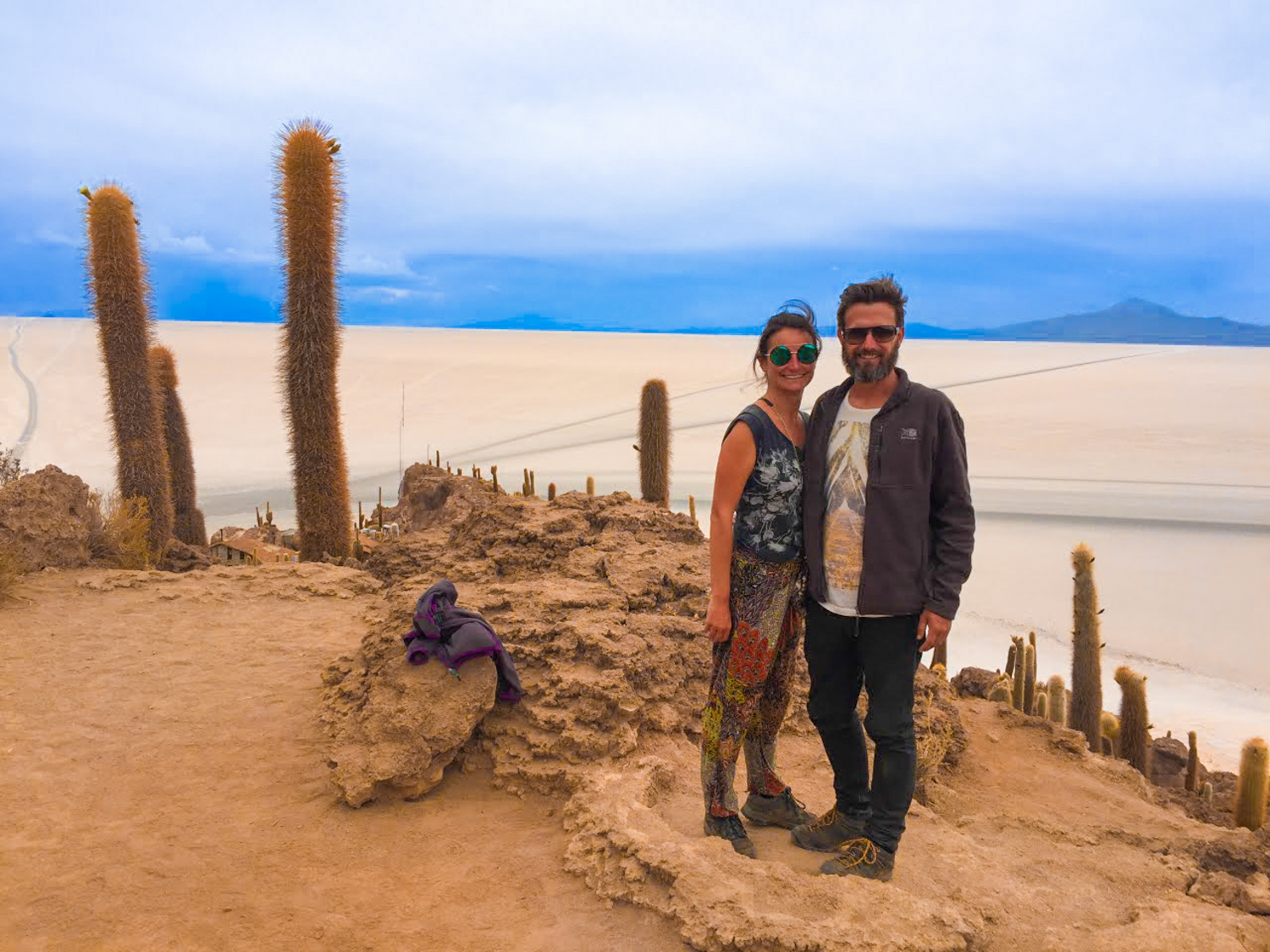
Bolivia was the second fantastic country we visited on our multi-month tour of South America, and it absolutely blew us away.
This landlocked country is so underrated.
You’ve got a full array of scenery in Bolivia, from the Amazon Rainforest and glass-smooth Lake Titicaca to the towering Andes Mountains and the otherworldly Atacama Desert. And speaking of otherworldly: you can’t forget the Uyuni Salt Flats, which were truly one of the most incredible sights of our entire trip. Our greatest discovery from Bolivia was perhaps that you could spend months in the country and still have so much left to explore.
Leaving Peru by coach, my husband and I arrived at our first stop: Copacabana, on the shores of Lake Titicaca. From there, we spent two adventurous weeks zigzagging across the country, before crossing the border at Portezuelo del Cajón into Chile. Our weeks in Bolivia were busy and action-packed, but so worth it.

So, what were our highlights?
I personally love seeing animals in their natural habitat, so the Amazon was an absolute must for us. Having said that, it did take up a whopping five nights of our itinerary, so if you’re short on time, you may want to opt for a scaled-down version. Trekking through the Amazon rainforest and taking a boat through the Pampas, though, are experiences I will never forget, and not all for positive reasons! More on that below.
When we weren’t animal-spotting, we made our way from chilled-out Isla del Sol to bustling La Paz, checking out beautiful Sucre and incredible Uyuni when it came time to finish up in the country. Is La Paz the busiest place on earth? It was certainly one of the most chaotic cities I’ve ever stepped foot in!
In Bolivia, as with our entire trip through South America, we entered overland and travelled that way throughout, aside from a rickety flight into the Amazon.
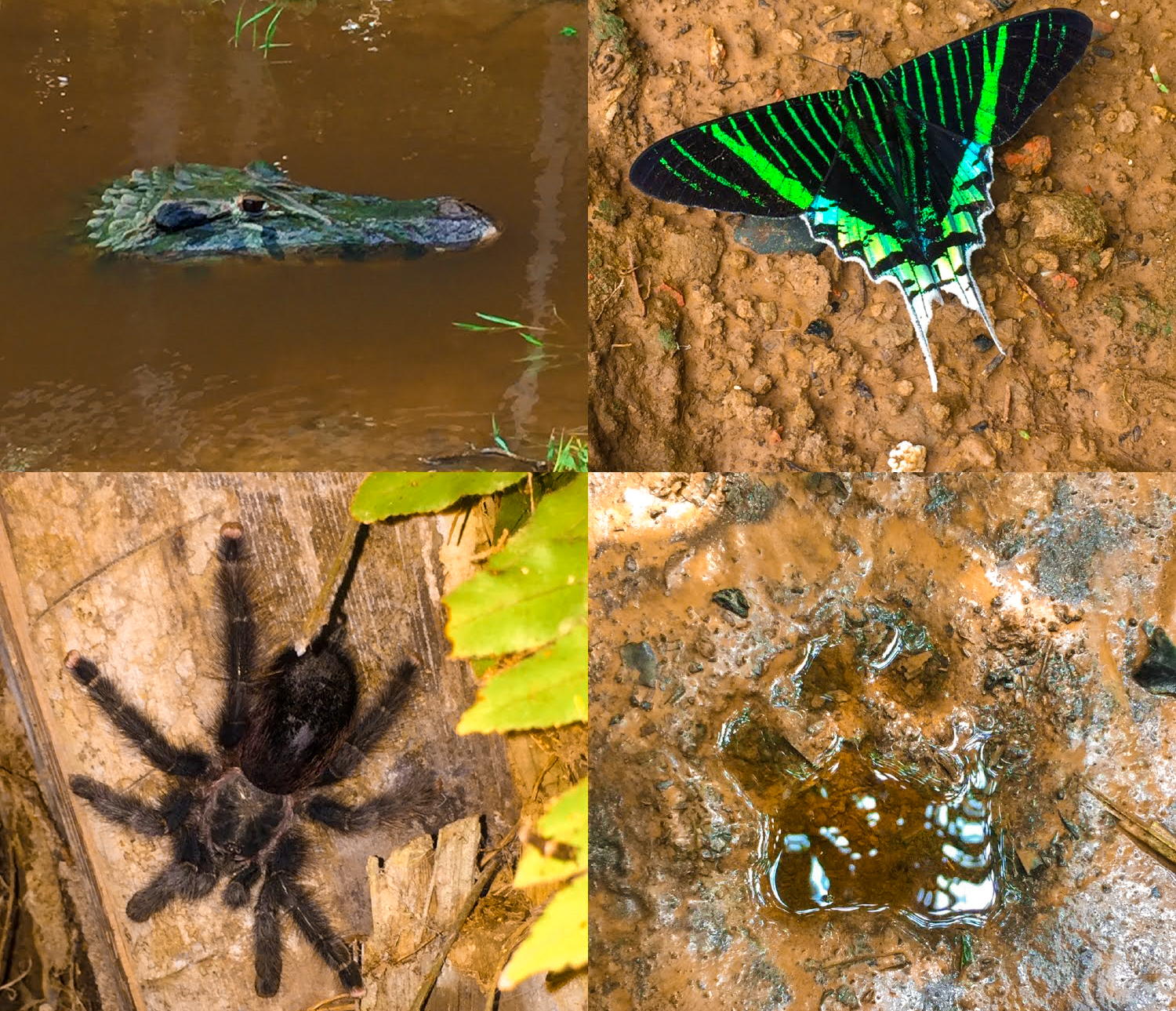
So how much does all of this cost?
This is, after all, a breakdown of how much I spent while travelling in Bolivia.
In Bolivia, more than other countries, we booked several tours, where accommodation, food, guides, and activities were included. We found these packages to be of good value, although I’ll confess that they did bump up our daily expenses a little.
I recommend shopping around at local agencies for prices but also, be sure not to scrimp — you still want to use reputable companies (I’ll give some tips on how to find them later on in the post). My husband and I researched online first to get an idea of what to expect, package- and price-wise, and once we talked to someone in person, we usually found there was room for bargaining, depending on how busy the tours were. When not taking tours, we opted for accommodation in the $25-$60 per night range, which was enough to have us staying in some of the best-rated properties in the country.
Just as in my Chile budget breakdown I’ll be referencing costs in dollars and the native currency, opting for U.S. dollars simply because the vast majority of my site’s readers are from the States. The Bolivian Boliviano (BOB) is the currency of Bolivia, and at the time of writing, in late-2021, $1 equates to around 7 BOB.
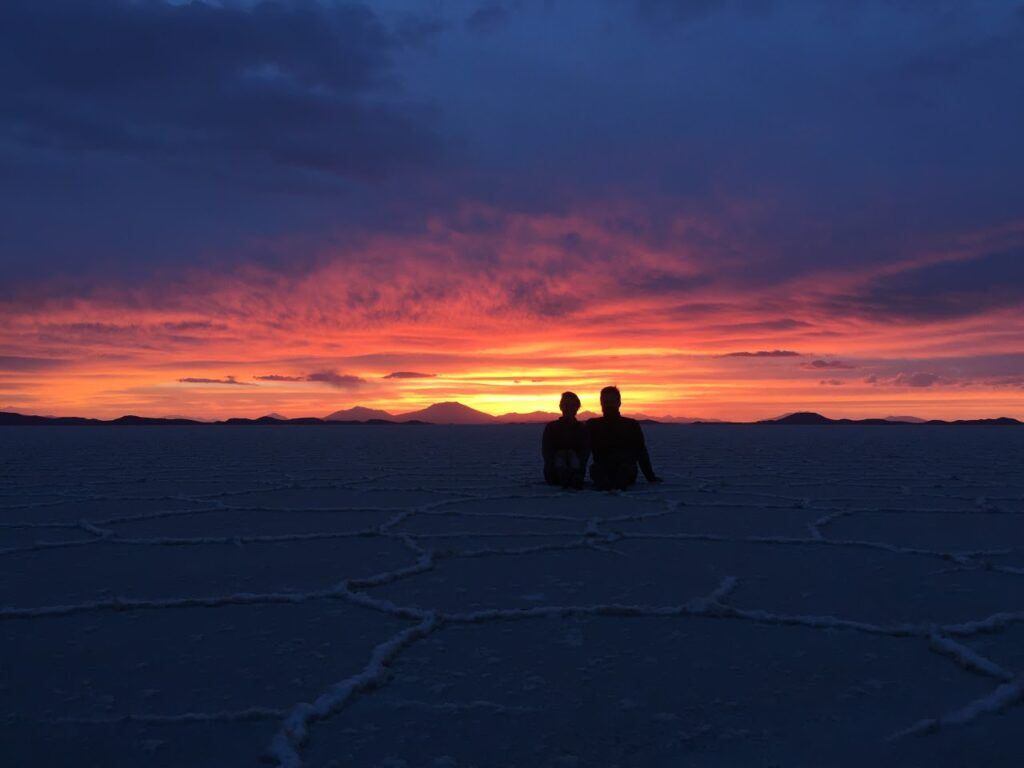
Let’s move on to where we spent our time in Bolivia. Here’s a rundown:
- Copacabana: 1 night
- Isla del Sol: 2 nights
- La Paz: 2 nights
- Rurrenabaque: 1 night
- Amazon & Pampas: 4 nights
- Sucre: 2 nights
- Uyuni: 2 nights
With more time, we would have checked out the garden city of Cochabamba, the cultural hub of Santa Cruz, and Potosí, one of the highest cities in the world. Another trip…
Before I carry on: just to confirm, I paid for everything myself –- as always, this is a comp- and press trip-free post.
WHAT’S INCLUDED IN THIS POST
The budget breakdown that follows covers accommodation, transportation, activities, food, and miscellaneous costs.
We travelled overland via coach to get from place to place in Bolivia, and used local travel agencies and our hotels to book the journeys. Or, we went direct to the coach station and bought tickets there. More on these journeys later on.
Our Bolivian experiences were incredible, from trekking across scenic Isla del Sol and seeing pink dolphins, to battling mosquitoes in Madidi National Park. Our money went pretty far, too.
Read on for more details on our Bolivian escapade.
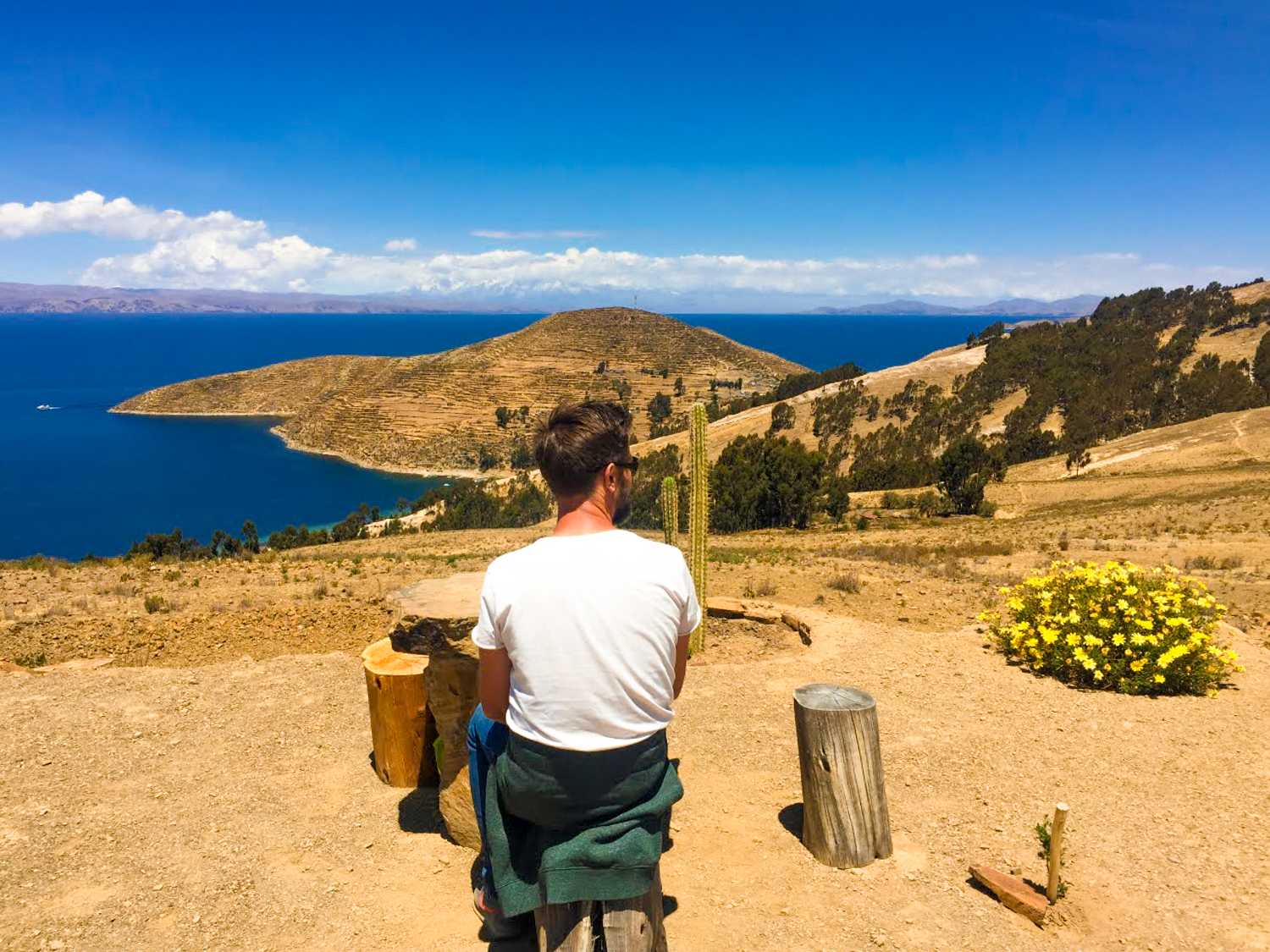
THE COST OF ACCOMMODATION IN BOLIVIA
For the most part, top-notch and reasonably priced accommodation in Bolivia was easy to find. From quirky suites to stylish city boltholes, the options were numerous. Some places included a quality breakfast; others charged an additional fee of around $4 per person.
The one slight exception? The Amazon. Tourism was less developed there than other parts of the Amazon (Peru, Brazil…) and the rest of Bolivia, and so accommodation was more basic – but still perfectly acceptable.
The specific places we stayed in Bolivia were:
Copacabana: This quirky, eye-catching cabin on the shores of Lake Titicaca just a stone’s throw from the market had glorious views out to the water and sat atop a hill. Our arty suite featured a living area, kitchenette, colourful mosaic tiles, and had bags of charm. We enjoyed lazing in the hammock, admiring the scenery. Coming in at $58 a night, this was great value for a studio apartment.
Isla del Sol: After a day walking across the island to reach this peaceful hilltop inn , we were ready to relax. Our spacious room had dual aspect windows, with wonderful views as far as the eye could see. Funky wooden furniture, a vibrant bedspread, and a first-rate included breakfast topped things off. A little off the beaten track, but that made it all the more special. Oh, and a bargain at just $24 a night.
La Paz: Back in the big smoke, we enjoyed this stylish, central hideaway – welcome respite from the chaotic city (not to mention a comfy place to lay our heads when the altitude got too much). Clean and modern, with a bright and airy top-floor terrace bar and restaurant, we loved our large room at just $31 a night. Sitting in the Witches Market and El Rosario area of the main district, we were in an excellent spot. Above and beyond staff helped us with onward bookings and restaurant tips, and breakfast was just $4 a person.
Rurrenabaque: This dinky town served us well for one night – a pitstop before heading into the Amazon. We didn’t often stay at places with a shared bathroom, but options were limited. This value-for-money guest house came in at a mere $14 a night, and we couldn’t complain. That included a breakfast of eggs and tropical fruit, too. Our simple, comfy room had a mosquito net, and the staff were super friendly. There was an outdoor pool and good wifi, as well.
Amazon & Pampas: Although these were two different places, we booked a tour that covered the whole trip, so I’m going to talk about them together. Our five-day four-night adventure included return flights on a teeny (and a little bit bumpy) plane from La Paz to Rurrenabaque, two nights in the jungle and two in the pampas. Plus food, transport in-between, water, and an English-speaking guide (essential). Like I said before, tourism was still in its infancy, and the quality of our accommodation was average. Having said that, there were mosquito nets, and the food was home-cooked and tasty. Sit yourself down and do your research before committing to this trip – it’s not for everyone. Although I struggled at times, I’m really pleased we did it. We’re such animal lovers – how could we pass up the opportunity?
We booked through this ecotourism company and paid $500 each. That may sound a lot, but when you think about everything that was included… And remember, flights were built into the cost, too.
Our ecolodge at each place was simple, but considering we were in the middle of the jungle and the pampas, we couldn’t complain.
Sucre: At a super reasonable $25 a night, this capacious, central guest house featured a sitting area, comfy bed, and was just a five-minute walk from Plaza 25 de Mayo. Very clean and comfy, the owners couldn’t have been more helpful when we arrived earlier than expected.
Uyuni: Similar to the Amazon, we enjoyed a tour through Uyuni, with transport, accommodation, food, and an English-speaking guide included. We booked our three days two nights with this well-regarded company and paid $180 a person (cheaper than online because we booked in-person). One night was spent in a salt hotel – novel, but when would we get to do that again? The other was spent in a simple hostel with outdoor hot springs for relaxing in while gazing up to the clear, starry sky – bliss.
OUR TOTAL COST OF ACCOMMODATION IN BOLIVIA CAME TO $1592. THAT’S AN AVERAGE OF $114 PER DAY, OR $57 EACH.
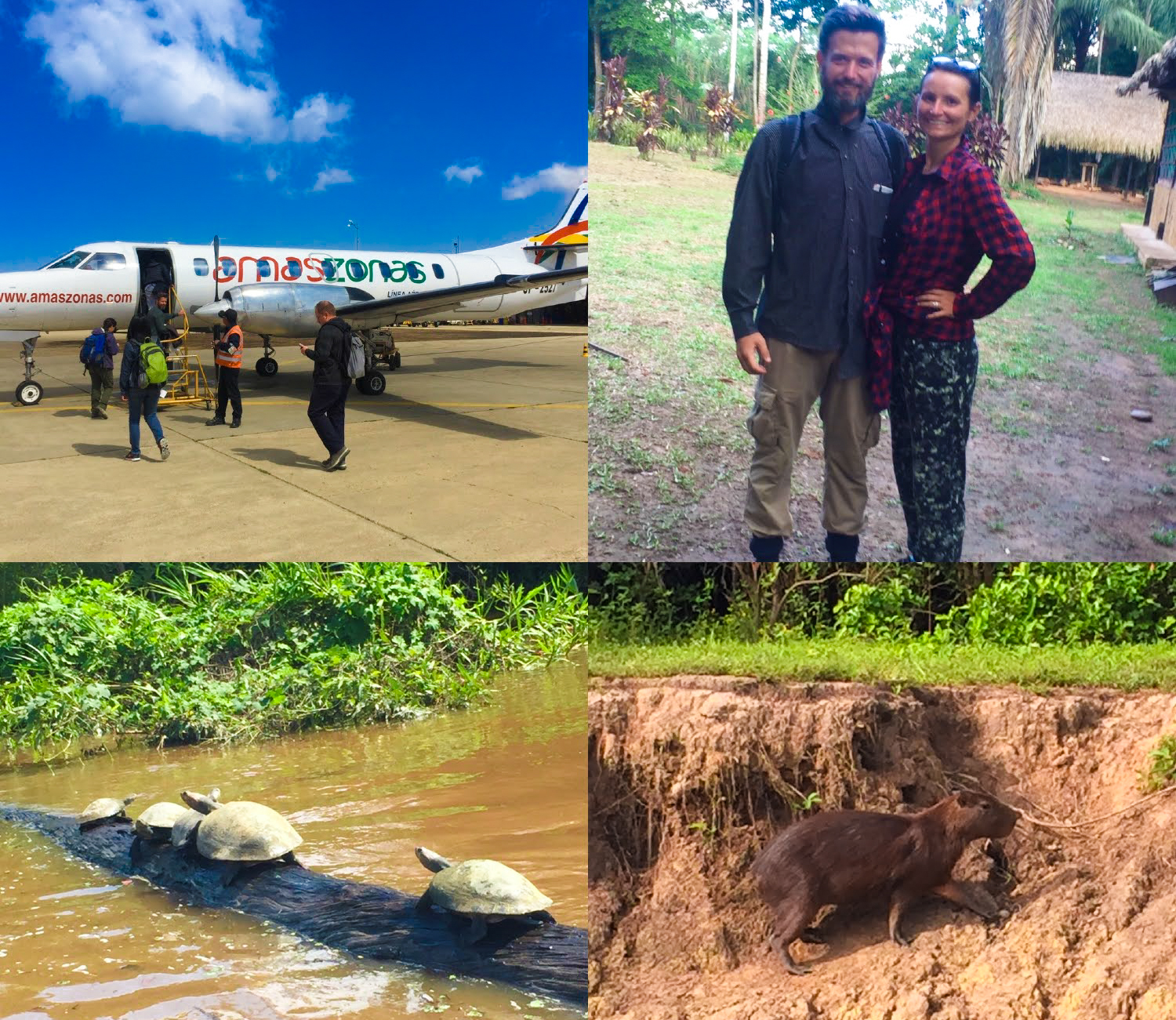
THE COST OF TRANSPORTATION IN BOLIVIA
We mainly used air-conditioned tourist coaches to travel around Bolivia. These were comfy; some had large reclining seats, TVs and blankets!
Like I mentioned earlier, we either booked tickets direct at the bus station, via a local travel agent, or through our hotel. We shopped around, to find the best deal.
If you have a bigger budget, you could choose to fly between some places. For example, there were flights from La Paz to Sucre for about $80 per person. The only time we chose to fly was between La Paz and Rurrenabaque. We could have gotten a bus, but we hadn’t read good things about the journey, and it took around 18 hours.
Here’s a breakdown of our journeys:
- Return boat from Copacabana to Isla del Sol: 56 BOB per person
- Coach from Copacabana to La Paz (with a raft journey across the Tiquina strait!): 56 BOB per person
- Local bus from La Paz to El Alto airport: 10 BOB per person
- Return flight from La Paz to Rurrenabaque: Built-in to the package price mentioned above.
- Coach from La Paz to Sucre: 126 BOB per person
- Coach from Sucre to Uyuni: 70 BOB per person
OUR TOTAL COST OF TRANSPORTATION IN BOLIVIA CAME TO 616 BOB or $88. THAT’S AN AVERAGE OF $6.30 PER DAY, OR $3.15 EACH.
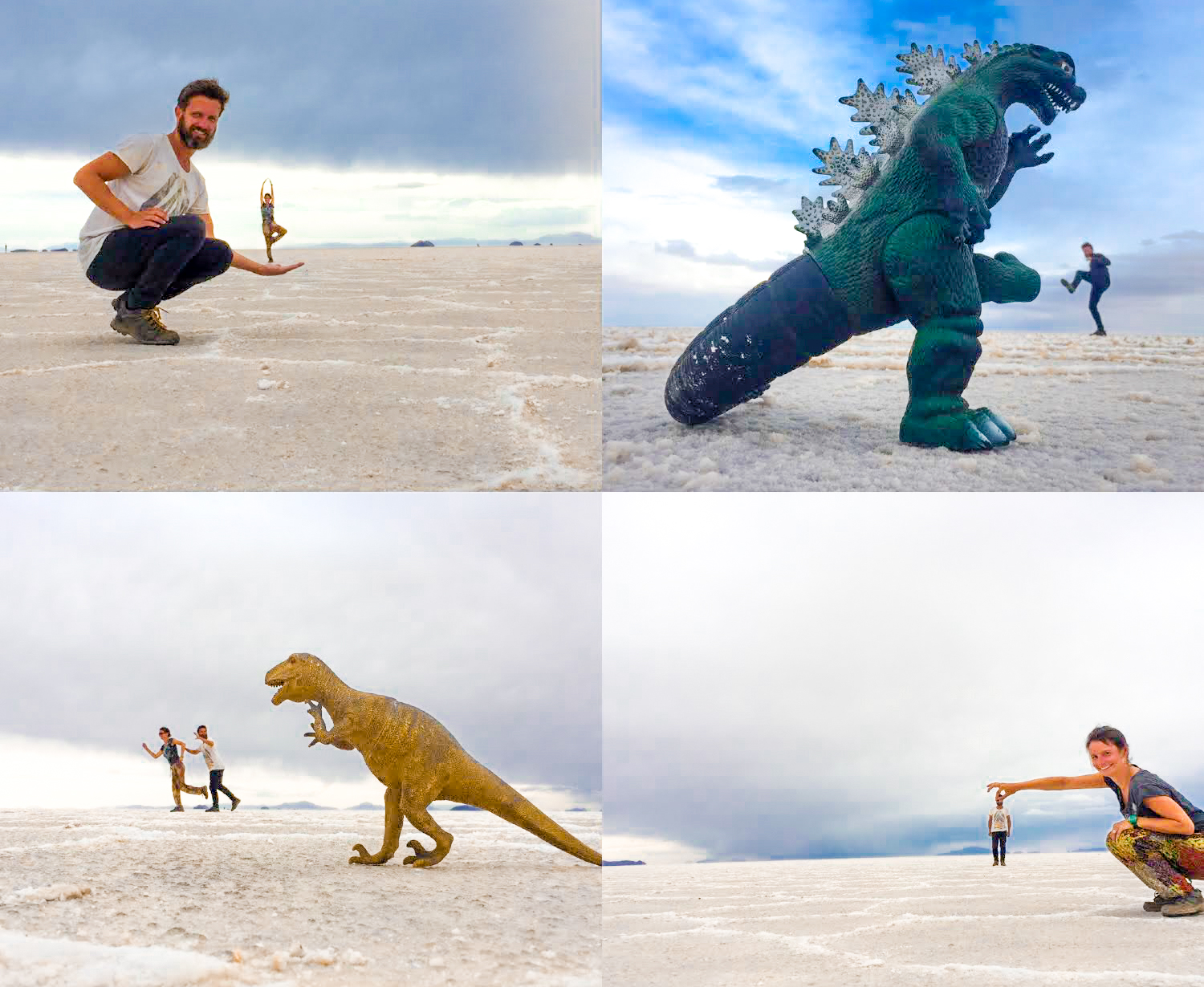
THE COST OF ACTIVITIES AND ENTRANCE FEES IN BOLIVIA
Jaguar and anaconda spotting were two of the activities we threw ourselves into in Bolivia. As well as seeing other amazing animals and reptiles like caiman and capybara, we wandered historic, characterful cities, and spent time at one of the most amazing natural wonders – the Uyuni Salt Flats.
Here’s a rundown for you:
La Paz Mi Teleférico cable car: 7 BOB person return . Enjoy a spectacular aerial view of the crowded city. Keep an eye out for the cemetery.
Amazon two-night tour: price already included in the accommodation section — we booked through Mashaquipe Eco Lodge . After a boat ride along the Beni and Tuichi rivers, we reached our digs in the Madidi National Park jungle and the adventure began. From daytime hikes with monkeys swinging overhead and pitch-black evening walks (watch out for the tarantulas), to seeing colourful macaws fly around Caquiahuara Cliff, we packed a lot in. Sadly, we didn’t see any jaguars… just a paw print. Now, the mosquitoes were problematic, so be sure to take the right clothing and plenty of repellant (although I still got eaten alive).
Pampas two-night tour: price already included in the accommodation section, as, yet again, we booked through Mashaquipe . The majority of this trip was spent cruising along on a small boat, up and down the Yacuma River. Keep your eyes peeled for pink dolphins and turtles, and you won’t be able to miss the gnarly, menacing-looking caiman. We loved seeing toucans and herons, too. Our anaconda-spotting trip was unsuccessful, in that we didn’t see any, but looking back, maybe that wasn’t such a bad thing?! Again, mosquitoes were an issue, but what can you do?
Madidi National Park entrance fee: 200 BOB per person. Not included in the cost of our tour.
Protected Area Pampas del Yacuma entrance fee: 150 BOB per person. Excluded from the cost of our tour.
Uyuni two-night tour : price already included in the accommodation section. Wow, we loved our two nights here. When we first arrived and were told winds had made the salt dirty, we were really disappointed. We needn’t have worried, the scenery was still spectacular – it’s hard to put into words. As far as the eye can see, it’s salt. I kept thinking it was ice! Our guide was meticulous with photos – it’s all about perspective, as you can see with the images above. Don’t miss staying out on the Flats until sunset, where we watched in awe, thinking it couldn’t get any better… and then it did. Pictures don’t really don’t it justice. As we made our way to the Chilean border over the three days, we saw more amazing sights: flamingos, the ‘tree of rock’, Laguna Colorada, Sol de Mañana geysers (don’t get too close), Dali desert, and Laguna Verde.
Incahuasi Island, Uyuni: 30 BOB per person . A worthwhile pitstop for Salt Flat views and cacti.
Salar de Uyuni and Eduardo Avaroa National Park entrance fee: 150 BOB per person . Not included in the cost of our tour.
Hot springs, Uyuni: 7 BOB per person . Lovely and warm and really clear. We enjoyed relaxing there with a glass of wine.
Something that may be of interest that we opted out of because I was a bit of a scaredy-cat was biking the North Yungas Road, outside of La Paz – also known as the Road of Death. You can maybe understand why I didn’t fancy it?!
We thoroughly enjoyed a handful of free activities, too:
Making our way across Isle del Sol (Island of the Sun) in the southern part of Lake Titicaca. We were lucky to have the most glorious sunny weather for the walk. The scenery was pretty spectacular, as was the sunset, as we supped on a glass of Bolivian wine (surprisingly quaffable).
Wander the outer walls of San Pedro Prison, La Paz. I have a bit of a thing for crime and prisons – this one may not be of interest to all! The prison sat right in the centre of the city and is known for being a self-governed society. In years gone by, you could pay to sneak in for a tour…
Wandering the charming streets of Unesco-designated Sucre and the pretty town of Copacabana.
OUR TOTAL COST OF ACTIVITIES (EXCLUDING TOURS) IN BOLIVIA CAME TO 1088 BOB or $155. THAT’S AN AVERAGE OF $11 PER DAY, OR $5.55 EACH.
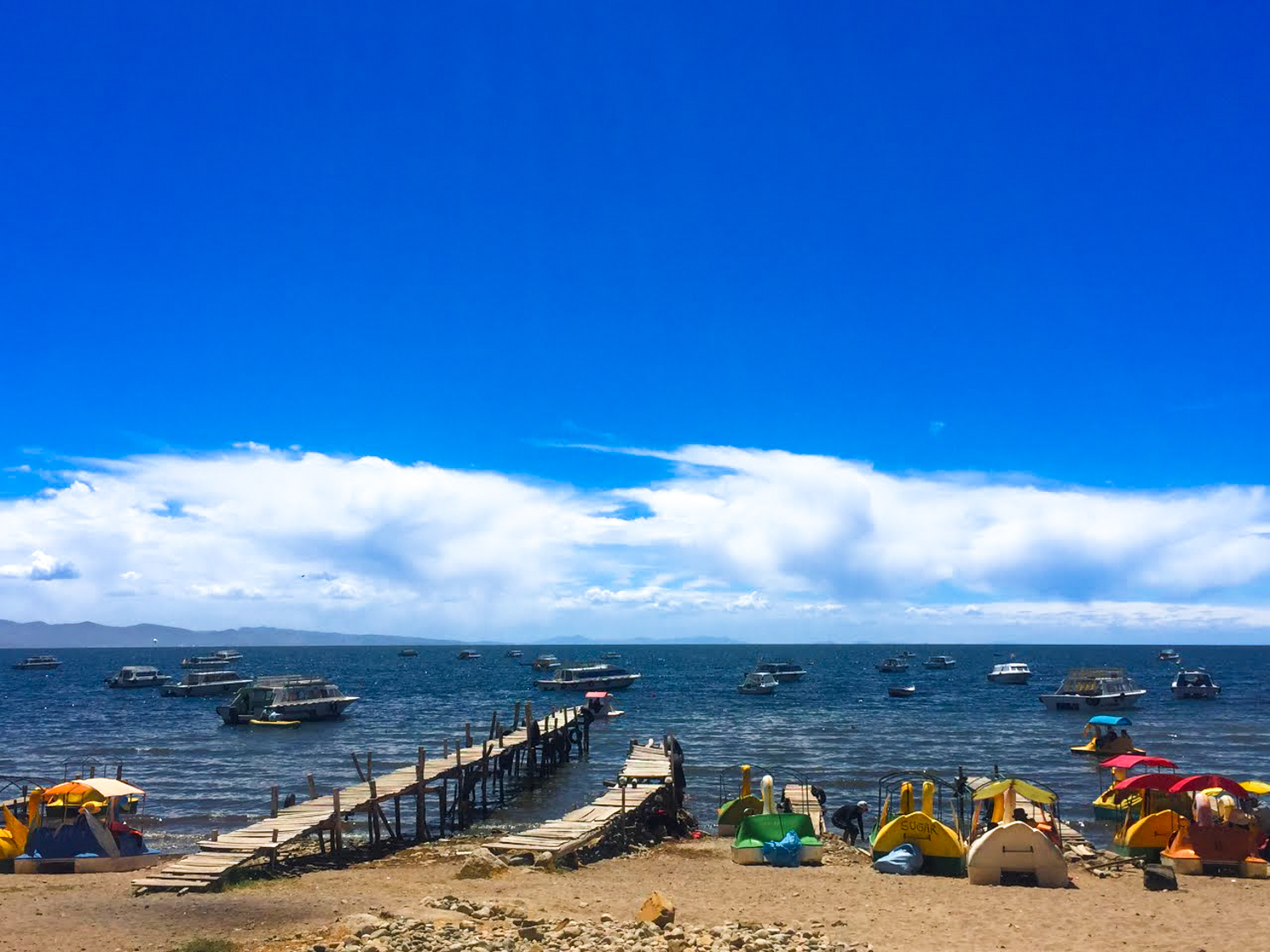
The Cost of Food in Bolivia
One word: choripan. Grilled chorizo between bread or a roll, with salad and hot sauce – soooo tasty. We ate our body weight in these from street food stalls, and they cost less than $1 each on average.
Aside from that, we generally ate on the cheap and cheerful side from street food stalls and local restaurants, but that didn’t mean our meals weren’t tasty – quite the contrary.
For six nights on our tours, our food was included, so that kept costs down. Or maybe that’s just psychological?!
Top breakfasts were included on our tours, and at some of the places we stayed, setting us up for the day. These generally consisted of delicious fruit and fried or scrambled eggs and a roll. Yum!
As well as choripan…
Salteñas: Similar to empanadas, these baked savoury pastries were stuffed with meat and spices and totally delish. Cheap too, at around $1 each or less from street food vendors.
Sandwich de chola: Tasty and filling, these sarnies were filled with roast pork and crackling, pickled veg and a spicy chilli sauce. They came in at around $2-$3.
Trout: The helpful lady on reception at our accommodation in Copacabana recommended a lakeside place to eat. Along the waterside, there was a row of covered stalls with small kitchens and plastic tables and chairs, each selling pretty similar things. We were advised to go to number 12, and both enjoyed very tasty grilled trout that was good value, too (70 BOB for us both). We also loved a similar dinner over on Isle del Sol at hilltop Inti Jalanta, where we watched that sunset I mentioned earlier.
We always like to eat local specialities. Other popular Bolivian dishes we tried weren’t for the faint-hearted, including Pique Macho (meat/chorizo with tomatoes, onion, peppers, piled on top of chips) and Tucumana (a heartier take on Salteñas). We didn’t tend to spend more than $4-5 per person on dinner.
Average daily food cost (excluding tour days): $12.60 per day, or $6.30 each
Bottled water all the way, plus local beers. A large water cost us about 7 BOB, while beers came in at around $2 a pop.
Average daily drink cost (excluding tour days): $9 per day, or $4.50 each
I love, love, love a good sandwich and spicy food, so I was in my element in Bolivia with choripan and sandwich de chola.
OUR TOTAL COST OF FOOD AND DRINK IN BOLIVIA (EXCLUDING TOURS) CAME TO $173. THAT’S AN AVERAGE OF $21.60 PER DAY, OR $10.80 EACH.
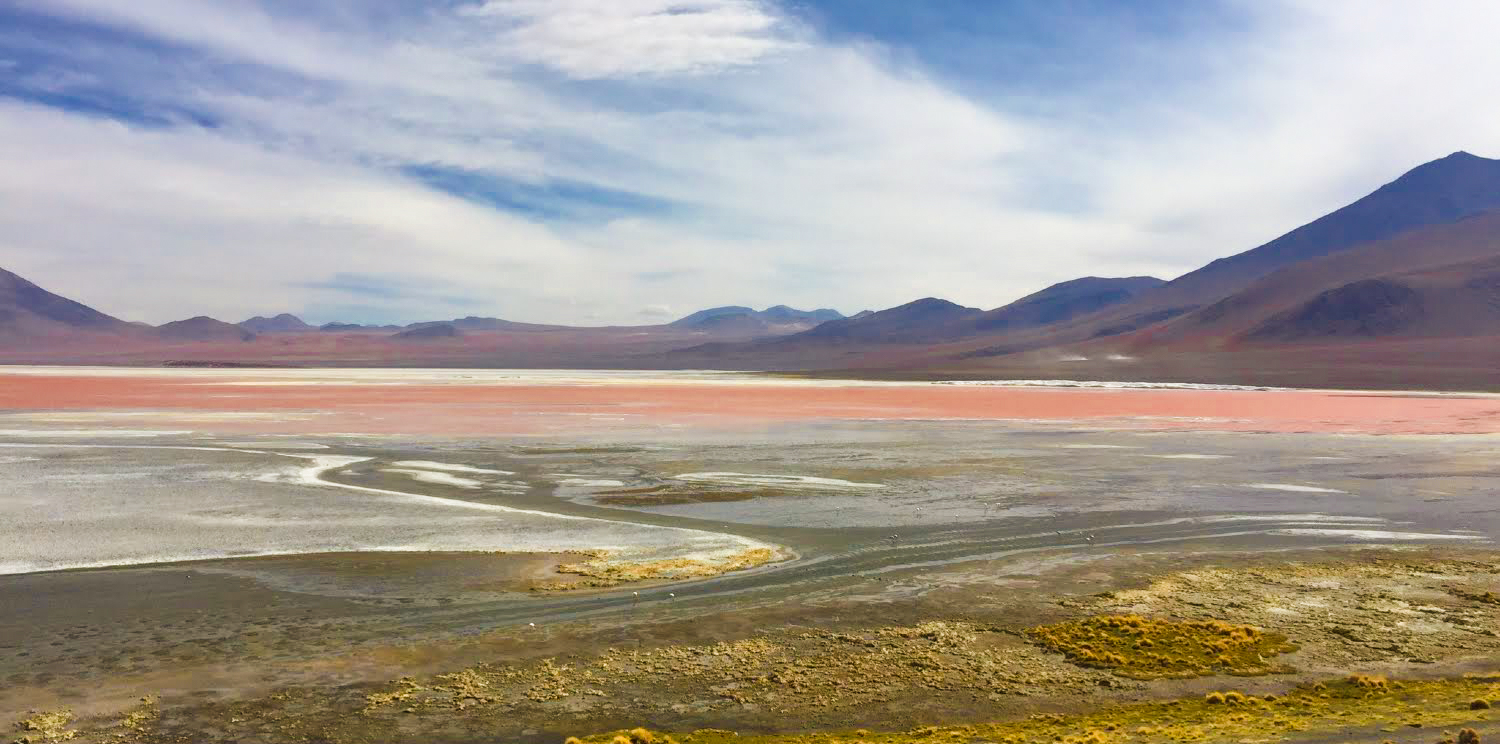
Don’t You Dare Forget Travel Insurance!
If you’ve read any other posts on Never Ending Footsteps, you’ll know that I’m a great believer in travelling with travel insurance. I’ve seen far too many Go Fund Me campaigns from destitute backpackers that are unexpectedly stranded in a foreign country after a scooter accident/being attacked/breaking a leg with no way of getting home or paying for their healthcare. These costs can quickly land you with a six-figure bill to pay at the end of it.
In short, if you can’t afford travel insurance, you can’t afford to travel.
Travel insurance will cover you if your flight is cancelled and you need to book a new one, if your luggage gets lost and you need to replace your belongings, if you suddenly get struck down by appendicitis and have to be hospitalised, or discover a family member has died and you need to get home immediately. If you fall seriously ill, your insurance will cover the costs to fly you home to receive medical treatment.
I use SafetyWing as my travel insurance provider, and recommend them for trips to Bolivia. Firstly, they’re one of the few companies out there who will actually cover you if you contract COVID-19. On top of that, they provide worldwide coverage, don’t require you to have a return ticket, and even allow you to buy coverage after you’ve left home. If you’re on a long-term trip, you can pay monthly instead of up-front, and can cancel at any time. Finally, they’re way cheaper than the competition, and have a clear, easy-to-understand pricing structure, which is always appreciated.
With SafetyWing, you’ll pay $1.50 a day for travel insurance.
The Total Cost of Travel in Bolivia
So how much can you expect to spend on an incredible trip to Bolivia? At the end of these budget breakdowns, I always like to pore over my receipts, tally up my every expense, and tell you guys exactly how much my travel adventures cost.
My trip to Bolivia cost:
- Accommodation: $57 per day
- Transport: $3.15 per day
- Activities: $5.55 per day
- Food and drink: $10.80 per day
- Miscellaneous: $1.50 per day
Grand total spent in Bolivia: $78.00 per person per day .
Overall, in Bolivia, I spent a little more than I did in other Latin American countries, but, we did enjoy two pretty big tours in the country, so we still felt we got good value for money. Bolivia was an experience and a half, and one I would highly recommend. Those salt flats – what can I say? Best sunset ever , and I’ve seen a fair few good ones over the years.
What do you think? Is Bolivia more or less expensive than you were expecting?
How useful was this post?
Click on a star to rate it!
Average rating 0 / 5. Vote count: 0
No votes so far! Be the first to rate this post.
Thanks so much!
You can follow along on my travels through my social media accounts below
Sorry you didn't find this article useful!
Help me improve it by leaving your comments below
All feedback is anonymous and emailed directly to me. If there's anything I can do to improve the quality of this article, please do let me know and I'll make the suggested changes within 24 hours
Lauren Juliff
Lauren Juliff is a published author and travel expert who founded Never Ending Footsteps in 2011. She has spent over 12 years travelling the world, sharing in-depth advice from more than 100 countries across six continents. Lauren's travel advice has been featured in publications like the BBC, Wall Street Journal, USA Today, and Cosmopolitan, and her work is read by 200,000 readers each month. Her travel memoir can be found in bookstores across the planet.
Related Posts

The Cost of Travel in Mauritius: My Detailed Budget Breakdown

The Cost of Travel in Thailand: My Detailed Budget Breakdown
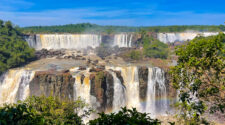
The Ultimate Guide to Iguazu Falls: Argentina and Brazil

2023: My Travels in Review

The Cost of Travel in South Korea: My 2024 Budget Breakdown
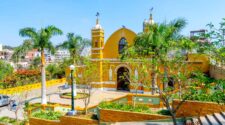
23 Fantastic Things to Do in Lima, Peru
Leave a reply cancel reply.
Your email address will not be published. Required fields are marked *
Meet Lauren Juliff

How Much is the Cost of Traveling in Bolivia? All the Details
- Post published: March 13, 2022
- Post category: Traveling & Tourist Places
- Post comments: 0 Comments
When you are traveling across Bolivia, you’ll find that generally, your expenses won’t be as high as in other countries, even as in other South American countries around. You’ll just need to spend several tens of dollars for flying tickets and only a bunch of dollars, or even cents, for traveling within a city.
In Bolivia, a full-round flight ticket for 1 person is around $120 on normal days and near to $200 on holidays. A full-round bus ticket for intercity traveling is around $24, but it can increase up to $40 on holidays. Traveling with a rented car will cost you from $300 to $500 a month.
We are citizens from Bolivia, who have spent all our lives here, so we’ll give you all the details about how much it really costs to travel within our country, either by air or ground. Also, you’ll see the details about traveling by renting a car and how much the cost of traveling between the most important tourist destinations in Bolivia will be.
The real cost of traveling in Bolivia
Traveling inside Bolivia is not going to cost you a lot of money. You can see in the table below the general transportation costs for a Bolivian tourist , who is traveling across the country.
For tourists coming from overseas, these costs will increase between 10% and 30%, but no more (see the details in a later section ). This increase is because many traveling companies here turn up their services more costly specifically for tourists from overseas. This is a bad habit and we are not proud of it, but this is how things work here in Bolivia.
As you can see, there are many tourist destinations inside Bolivia you can visit, and to go to each one of them from a major city like Santa Cruz, you’ll spend between $3 to $400 in almost all cases . For example, for going from this city to Uyuni’s salt flat, only traveling will cost you around $100, and a full tourist package around $250 for one person.
It will be about the same price for almost any other tourist destination inside Bolivia, and a traveler will spend between $100 to $300 in most cases.
But if you want to break down the expenses to get only the road or flying costs, then you’ll see that, on average, a one-way flight ticket will cost you around $70, and a one-way bus ticket around $12. This means that, if for example, you want to go from Santa Cruz to La Paz city by air, you’ll spend around $60 and going by ground, around $15.
You can also rent a car and travel across Bolivia by yourself, spending about $200 a month for renting a compact car and $350 a month for renting a family car. When traveling within a city, you’ll spend no more than $3 per ride on Uber and taxis and $0.3 per ride on public transportation.
Pricing list for traveling in Bolivia
In this section, you can see the detailed costs for both air and ground traveling between the most important cities of Bolivia.
As you can see in the table below, going from Santa Cruz to La Paz City is one of the most expensive trips you’ll have . But if you go, for example, from Cochabamba to any other place, you will have almost half of this cost, no matter which place may be your destination.
Later on the table, you can also see the traveling costs from Santa Cruz city to the most important tourist places available in Bolivia. Remember that for tourists from overseas, these costs will increase between 10% and 30% on average.
At the bottom of the table are the average expenses per ride you’ll need to spend if you want to move within a city in the 3 major cities of Bolivia, Santa Cruz, La Paz, and Cochabamba. In almost all cases, these costs won’t go beyond $3 per ride.
Finally, at the end of the table, you can see the average renting price for different kinds of cars you can rent in our country (see our full guide about how to rent a car in Bolivia , to get all the details about how to achieve this and also save some money in the process).
* Combined trip is the case that includes both traveling by air and by ground .
When going to tourist places within Bolivia, as we say before, you won’t spend more than $400 for a full-round trip (in most cases the cost will be just about $150), including the overpriced services that you may have to pay with some tourist companies. It will rarely be the case in which you’ll need to spend $500 or more for a tourist trip for 1 person.
These prices can increase a lot in holidays, up to 100% in the most extreme cases , the shown costs are for common days and not for holidays, like Christmas or carnival. If this is the case, you should add at least 50% to the costs shown above.
Different incomes and the cost of traveling
When Bolivian tourists travel across the country, their expenses vary a lot depending on the income they have. As an overseas tourist, you should compare yourself to an upper-middle-class Bolivian when traveling here if you want to feel the same comfort as if you were in a first-world country.
Lower-class Bolivians normally go always by ground, in the cheapest bus companies available, so they end up spending around $15 for a full-round intercity ticket and around $2/day in transportation expenses within the city they are visiting.
Is not that much different for middle-class Bolivians, they almost always will travel only by ground, and in exceptional cases by air, but they will buy tickets from better bus companies , getting better comfort. They’ll also occasionally use taxis to move within a city. As a result, they will spend around $50 for a full 7-day trip.,
It’s a very different story for upper-middle-class Bolivians and some wealthy people here. In many cases, most of them will only travel by air, and they’ll also use Uber and taxis a lot more to move within a city. So, their traveling costs will rise a lot, with around $130 for a full 7-day trip.
As we just said, you should compare yourself to an upper-middle-class Bolivian if you want to travel fast, with a lot of comfort,s and without any major troubles. But if you are a traveler on a budget , you should be just fine with just spending around $50 in traveling expenses, and with this, going comfortably by ground for a full 7-day trip in our country.
Foreigners and the cost of traveling
As we said at the beginning of this article, traveling agencies and companies in Bolivia tend to overprice their services when they are dealing with tourists from first-world countries. They rely on you not knowing how much they charge to Bolivian tourists. Anyway, the price will not go up too much, about 10% to 30% for most cases.
When traveling by air in Bolivia , you’ll also have the possibility to get the cheapest possible flights, like in any other country (you can use TripAdvisor to get the cheapest flying prices also here in Bolivia).
But when going by ground , there’s a lot of hidden information and overpricing set by companies dealing with first-world foreigners. This means that on average when buying a bus ticket to go to some tourist place or another city in Bolivia, you’ll get in general an overpricing of 50%. If you virtually buy your bus tickets or go to the best bus companies , this is less likely to happen.
When getting a ride within a city, you’ll have two very different situations: when getting an Uber you’ll face very fair prices, but when getting normal taxis a lot of the time taxi drivers will charge you much more than Bolivians, they will even overprice the ride up to 100% on even more in some cases.
Also, sometimes, car rental companies will overprice their services if they see that a tourist is trying to rent a car with them, so if you see that a normal car goes beyond $1,500 a month you should try another company. “EuropCar” or “Hertz” in Bolivia are great companies to go with, you also can get the best car rental prices in Kayak .
Comparing the cost of traveling in Bolivia versus other countries
Traveling either by air or by ground in Bolivia will be far cheaper than in first-tier countries, like the US and Canada. But when comparing ground traveling costs these differences will be more pronounced. Something different happens with the UK, because it’s a very small country, so the flying costs are almost the same as in Bolivia.
Remember that Bolivia is a country that is 4x the size of Germany or 2x the size of the state of Texas in the US, so it’s not certainly a small country. From La Paz to Santa Cruz, the 2 most important cities here, there are about 310 miles (500 km) of straight line distance and about 528 miles (850 km) in road distance.
When buying flying tickets, the average cost here in Bolivia will represent only about 25% to 40% of the average cost in countries like the US or Canada. When buying bus tickets, this cost will be even cheaper, representing only around 10% to 20% of the cost in those countries.
When comparing the transportation costs within a city in Bolivia, you’ll find that they only represent around 10% to 15% of the cost in first-world countries, no matter if they are Uber, taxis, or public transportation . Bear in mind that normal taxis tend to overprice their services a lot when they see tourists.
Another remarkable fact is that gasoline in Bolivia has stayed at a fixed price since more than a decade ago, it’s been locked at $1.80 per gallon. This represents around 20% to 50% of what gas costs in first-world countries.
In the case of India , the costs of traveling within that country (even though India has mostly as half as cheaper costs as Bolivia on everything) are more costly, because of the huge distances there, but transportation within a city is again about 50% cheaper.
Conclusions
Here you have known the detailed costs of traveling within Bolivia, you’ve seen that when traveling by air, a person will normally spend around $120 for a full-round ticket, and when traveling by ground, this same person will spend around $24 for a full-round bus ticket.
Also, you’ve realized that when traveling with a rented car, the rental expenses will be from $200 to $350, and the cost of gas is $1.80, so you’ll need to spend from $250 to $500 per month in most cases.
Finally, you now know that to travel to the most important tourist places in Bolivia, you’ll spend in most cases between $3 and $400 per person, and that rarely the cost will be more than this. Also, traveling companies tend to overprice services for tourists and you should generally avoid traveling costs and tourist packages that go beyond $400 within the country.
We hope this information has helped you, and if you want to know all the details about how much it really costs to live in Bolivia including food, clothing, transportation or entertainment expenses, etcetera, visit our dedicated guide: The cost of living in Bolivia, all the details you need to know .
BolivianExperts.com , information about how to live, work, invest, and travel in Bolivia.
You Might Also Like
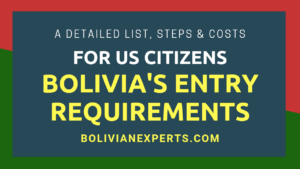
Do US Citizens Need a Visa for Bolivia? All the Details, Steps & Requirements

The Best Currency to Use in Bolivia, All the Details & Precautions

The Best Beaches in Bolivia: Full Overview & All the Details

Is a Visa Required to Visit Bolivia? All Country Lists & Details

Visa-Free Countries for a Bolivian Passport, A Complete Overview

The Best Bus Companies of Bolivia, All the Facts Services & Details
Leave a reply cancel reply.
Save my name, email, and website in this browser for the next time I comment.

- Skip to main content
- Skip to primary sidebar
Truth of Traveling
August 9, 2019 By Dave
How Much Does It Cost To Travel In Bolivia? Budget Breakdown
When researching for our trip I spent a lot of time trying to budget for different locations around the world. Cost of living varies dramatically between each country that we are visiting, however, we still try to set an average daily budget of $75.00 USD. We know if we stay around this amount that we can visit all of the locations we hope to. In this post I am going to break down all of our expenses and answer the question, how much does it cost to travel in Bolivia?
*Disclaimer: We are attempting to travel more on the budget side of things so obviously costs can vary dramatically. You can easily spend significantly more or less than what we did depending on your preferences.
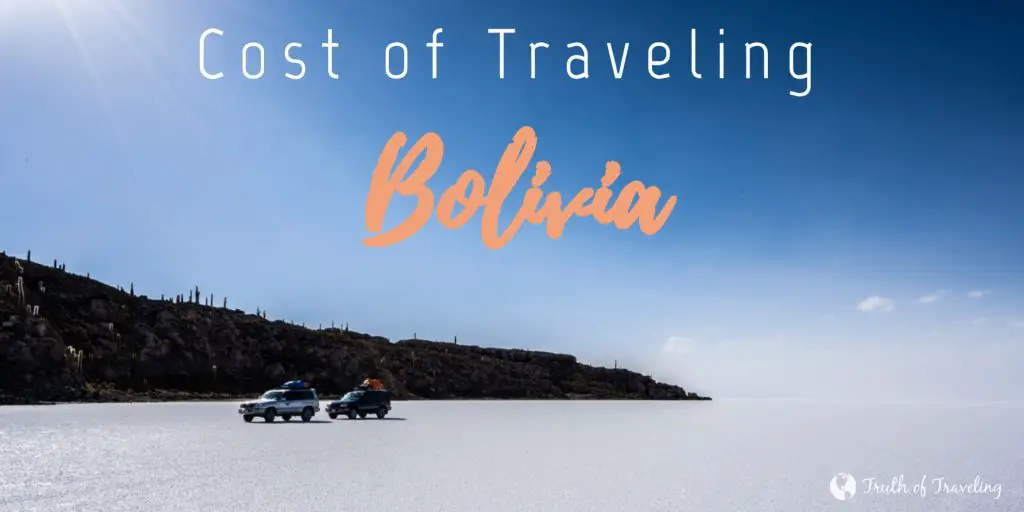
We spent 8 nights and 9 days in Bolivia . Within that we spent 2 nights on an overnight bus (between Uyuni and La Paz) and 2 nights during our Salt Flat tour. The Salt Flat tour was something that we budgeted for separately because it was a huge reason as to why we were visiting Bolivia. While significantly cheaper than the Inca Trail trek, we still spent a little over $400 USD between the two of us on it so it was a significant amount of money that we accounted for before arriving.
After visiting Bolivia we both highly recommend it as a place to go in South America! It definitely does not get the same publicity as its neighboring countries, but Bolivia is incredibly affordable and has a great culture with some awesome sights to see . Hopefully this post is helpful in persuading you to visit this amazing country!
Our TOTAL cost of traveling in Bolivia for 9 days, including the Salt Flat tour, was $774.75 USD. Of that, $548.55 was the Salt Flat tour and the overnight buses between Uyuni and La Paz. $226.20 was what we spent as “daily expenses” while staying in La Paz for 6 days.
La Paz is the administrative capital of Bolivia and is where most travelers will fly in and out of. We spent 6 days and 4 nights in La Paz. Our total daily expenses including the time we spent there before and after the Salt Flat tour were…….. $226.20 USD for an average of $37.70 USD per day . These costs only include our normal daily expenses for meals, grocery, accommodations, transportation, etc. This does NOT include the cost of our flights from Cusco to La Paz because that differs for everyone depending on the time of year and where you’re flying from. This also does not include the cost of our time in Uyuni for the Salt Flat tour as I will break that out separately below.
Read More: Is La Paz, Bolivia Worth Visiting?
Accommodations – $123.41 USD total / $30.85 per night
In La Paz we spent $123.41 USD for 4 nights. 3 nights were spent in an apartment rental through Booking.com and 1 night was spent in a budget hostel.
- We actually paid extra at the hostel to check in around 7 AM because our overnight bus got in early and we were exhausted and wanted to sleep more. The cost of this was a half night rate (about $10 USD extra) but was totally worth it.
Transportation – $28.90 USD total
We took a taxi to and from the airport in La Paz. The airport is actually in El Alto which is a separate city immediately next to La Paz. The rate was pre-negotiated at 70 Bolivianos each way, or about $10.12 USD.
Public Transportation
La Paz, Bolivia has one of the most unique public transportation systems either of us have ever seen. They utilize a system of cable cars all over the city and are continuing to add new lines. The name of the system is called Mi Teleferico . It is an extremely affordable option to get almost anywhere in the city and provides amazing views everywhere you look! It costs about 3 Bolivianos per person per ride, or about $0.43 USD. In total we spent $8.68 for all of our rides.
Meals – $35.84 USD total
When we got to Bolivia we were actually craving home cooked food so we only ate out for 2 meals in La Paz. The rest of the time we cooked our own food in the apartment we rented! We spent $35.84 between the two dinners.
- Because we rented an apartment for the majority of our time in La Paz we had a kitchen that was very well stocked with kitchen utensils. We took advantage of this and also to save a little bit of money before our big salt flat tour.
Groceries – $37.04 USD total
Because we opted to cook rather than eat out as much in Bolivia, we spent a bit more on groceries. In total for 6 days worth of food it cost us $37.04.
Water in Bolivia cost about 10.50 Bolivianos, or $1.52 USD for a 6 liter bottle.
Excursions – $1.01 USD total
While not really an “excursion” we did have to spend 7 Bolivianos on an entrance fee to a park in La Paz that had a great viewpoint overlooking the city.
Salt Flat Tour – $377.16 USD total (for two of us)
We spent $377.17 on our Salt Flat Tour with Salty Desert Aventours and would definitely recommend them! Our guide was great and was extremely passionate about teaching us about the history of Bolivia and promoting tourism there. We paid a bit extra to have an English speaking guide as well since we were going to be with them for 3 days and 2 nights. The cost for the salt flat tour includes the tips we gave the guide and drivers at the end as well. The base price we paid for the tour was about 1200 Bolivianos each, or $173.41 USD each.
Read More: 3 Day Bolivian Salt Flat Tour
Overnight Buses From La Paz to Uyuni and Back – $144.51 USD total
The overnight bus tickets cost us 500 Bolivianos each (250 per person each way). We could have upgraded to the “VIP” section for an additional 50 Bolivianos per person each way which had much larger lay-flat chairs. Ours laid back partially and were plenty comfortable so we opted to save the money.
Meals – $13.73 USD total
When you arrive in Uyuni you have some time to grab breakfast before the tour starts. Our bus arrived at 8 AM and our tour left at 10 AM. Similarly, on the way back we arrived back to Uyuni around 5:30 and our overnight bus did not leave until 8:30 so we grabbed dinner. There are a handful of food options in Uyuni.
Misc. – $3.18 USD total
Most of the bathrooms on the salt flat tour, outside of the ones in your accommodations, will charge between 1 and 5 Bolivianos to use. We spent 22 Bolivianos, or $3.18 USD on bathrooms.
Groceries – $9.97 USD total
There were a few different chances to buy water and snacks at local markets during the tour. We spent $9.97. By far the best deal of the trip was a 1/4 KG bag of salt at the salt flats that we watched the guy bag and seal right in front of us. It only cost 1 Boliviano, or $0.14!
Overall traveling in Bolivia was very affordable! We spent less than $20 per person per day while in the city of La Paz! The Salt Flat tour is definitely where the major expenses come in while in Bolivia, but we absolutely loved going on the tour. The landscape is unlike anything either of us have ever seen before and we would do it again in a heartbeat!
Interested in More Posts about Bolivia? Read Here!
Pin it for later:.
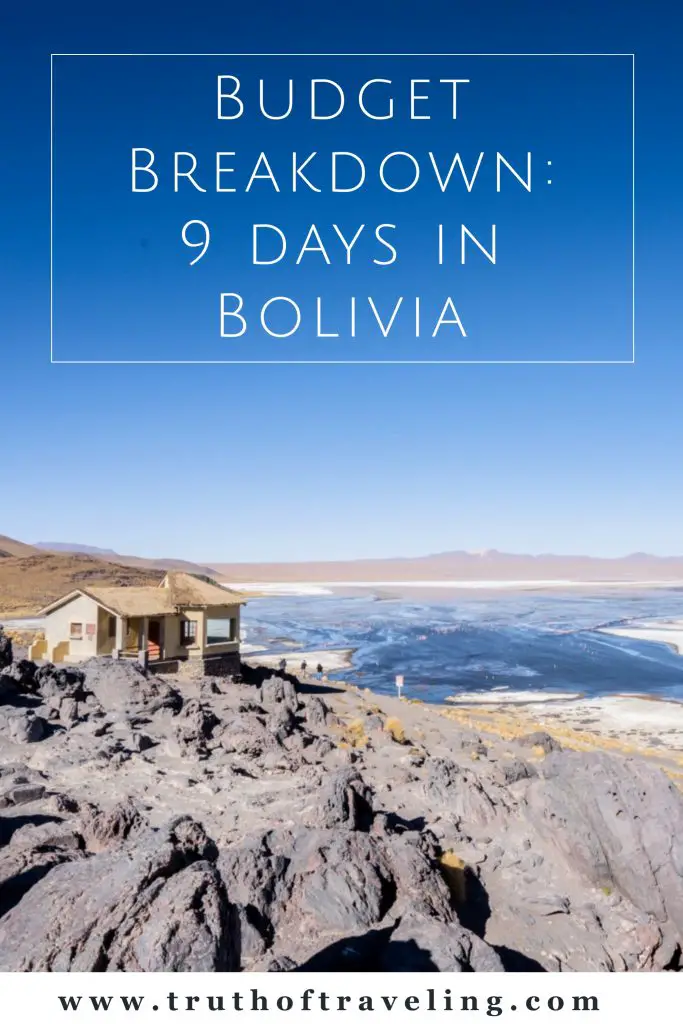
Privacy Overview

Bolivia Travel Guide
Looking for an in-depth Bolivia travel guide ?
Then you’re in the right place!
One of the more underrated gems of Latin America, Bolivia is a vibrant country full of incredible sights, friendly people and unique culture.
From breathtaking salt flats to lush jungles to exciting cities, there’s something for every kind of traveler in Bolivia. And if you’re looking to visit some record-breaking places, this is the country to visit.
Bolivia is home to the tallest monument to Jesus Christ on Earth, the world’s largest navigable lake, the largest population of Indigenous peoples, and much more.
With so many fascinating experiences, you’ll be bragging about your trip to your friends and family for weeks after you return.
Bolivia’s diverse landscape makes it the perfect destination for outdoor adventurers . From the Andes Mountains to the Amazon, there’s a lot to explore in this landlocked country.
Madidi National Park is the best place in the country to experience the mighty Amazon River, whether you’re hiking through the rainforest or checking out the local wildlife. Be sure to build in extra time to reach the park, though, as rides on public transport from major cities can take several hours, especially in the wet season.
Up in the highlands, you’ll find incredible mountain views at Lake Titicaca, a top spot for international travel. This giant lake is home to sights and experiences you won’t soon forget.
Wherever you decide to go, read up on travel health before your trip. Altitude sickness can take its toll here, so make sure you’re prepared for whatever adventure you have planned.
Not much of an outdoorsy type? Bolivia’s cities have tons to offer travelers.
Santa Cruz, located in southern central Bolivia, is considered the country’s commercial center and has tons of great museums, galleries, and cultural institutions to visit — as well as a vibrant nightlife scene.
In La Paz, you can browse the colorful markets and learn more about the Indigenous Incan culture that has endured in the area for centuries.
And in Sucre, you can see real dinosaur footprints and chow down on authentic empanadas all in the same day (a perfect itinerary if you ask us).
Ready to travel Bolivia?
Keep reading to dive into resources that will help you with planning a trip to Bolivia in South America.
Note: This ultimate guide to Bolivia travel contains affiliate links to trusted partners!

Bolivia Map
Use this Bolivia travel map to begin planning your trip to this incredible country!
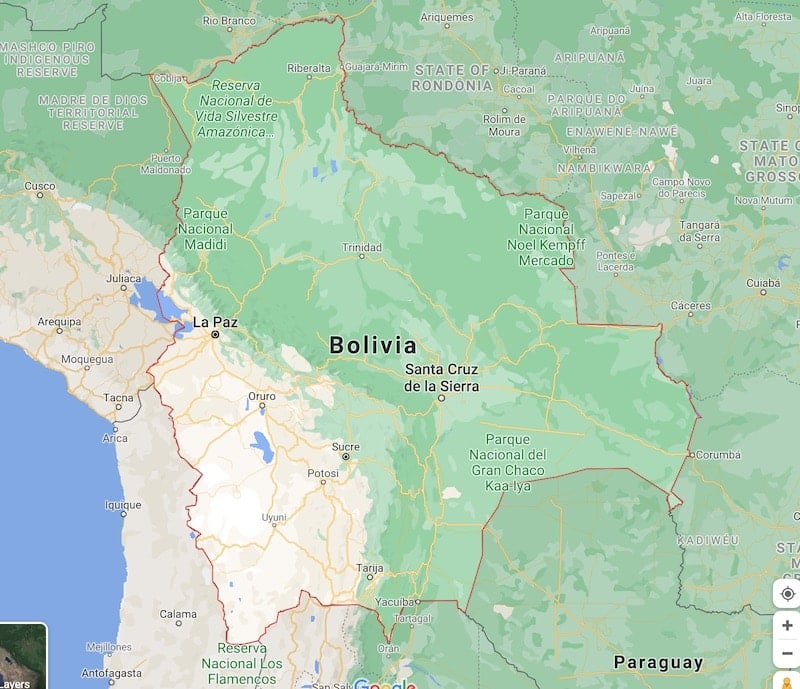
Click here for an interactive Google Map version of the above graphic.
Bolivia Salt Flats Experiences
Looking to travel to the Bolivia Salt Flats (ie Salar de Uyuni)? These guides can help!
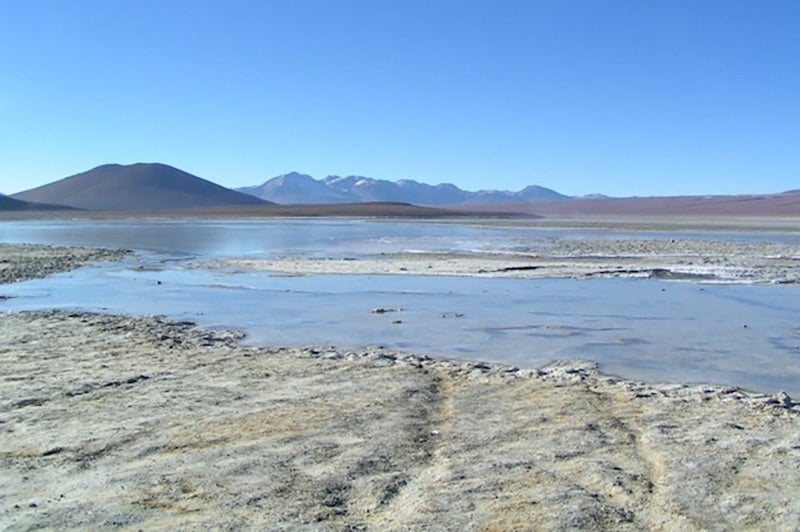
Touring Bolivia’s Salt Flats: A Memorable Experience
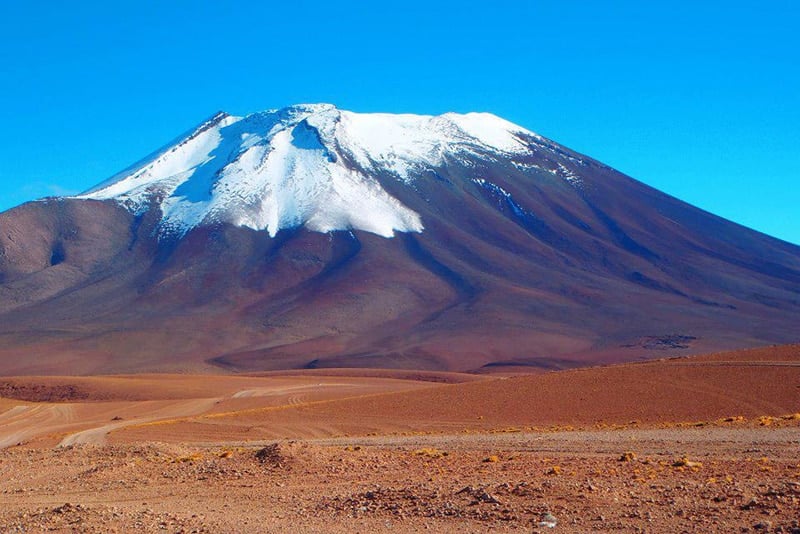
Awkward Moments In Bolivia’s Siloli Desert
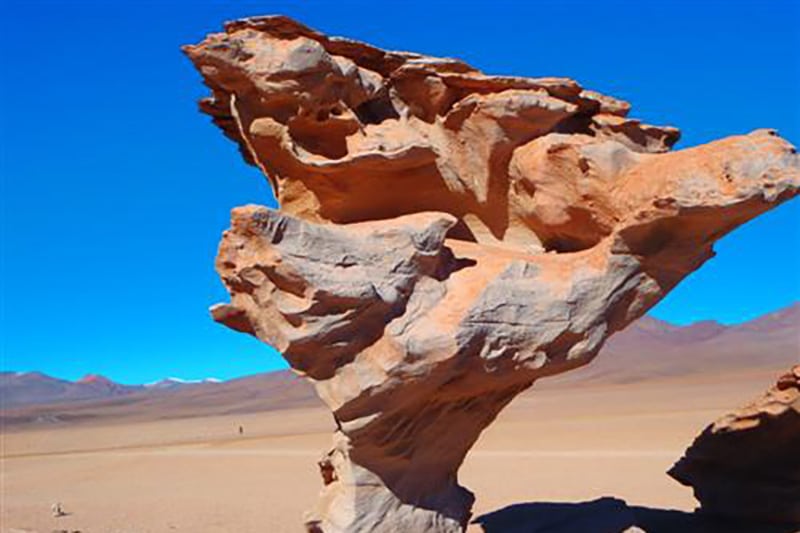
The Lesser-Known Sites Of Salar de Uyuni In Bolivia
La Paz Travel Guide
La Paz is a must-stop when traveling in Bolivia !
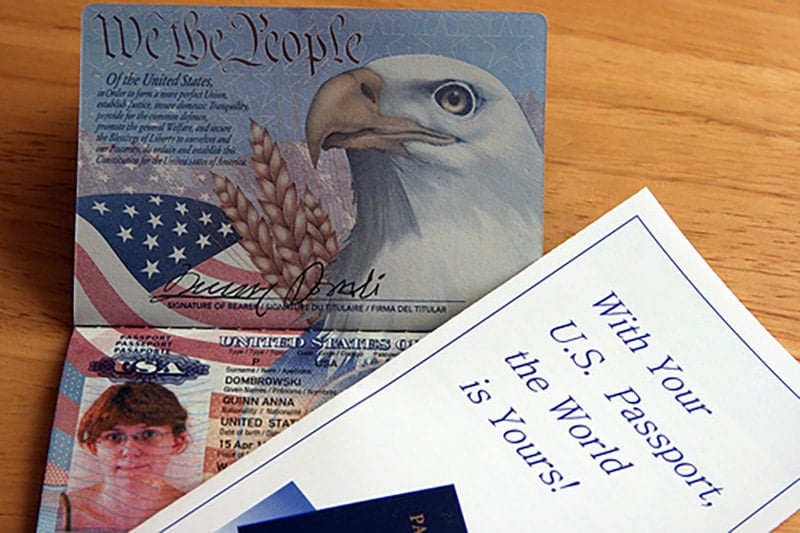
My Humorously Painful Story About Obtaining A Visa In La Paz, Bolivia
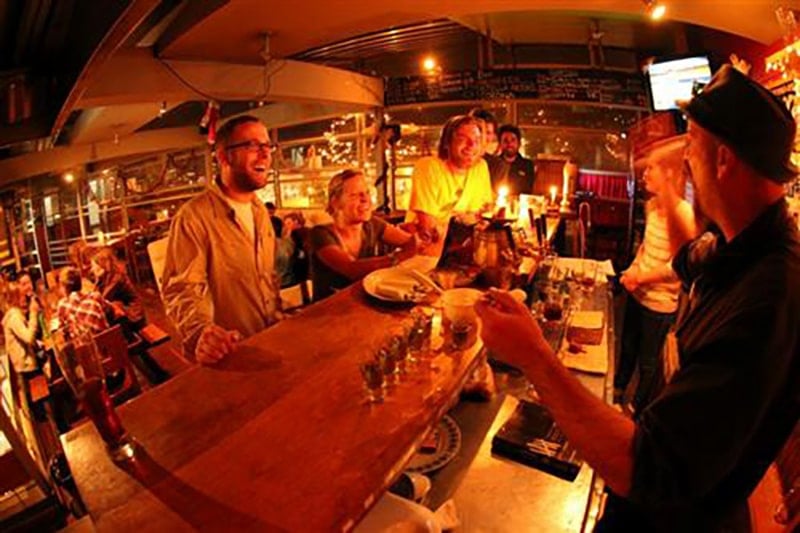
Hostel Review: The Adventure Brew B&B In La Paz, Bolivia
Bolivia Travel Tips
This advice can help you with planning a trip to Bolivia !
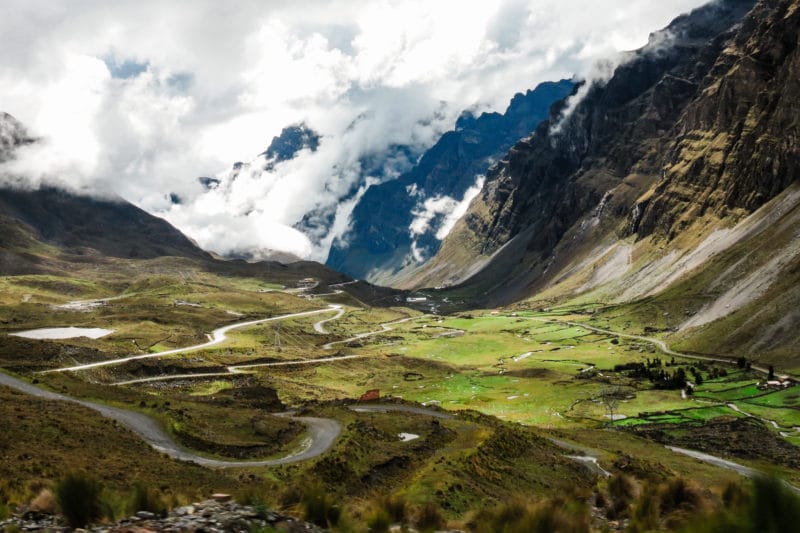
Why Bolivia Should Be Your Next Travel Destination
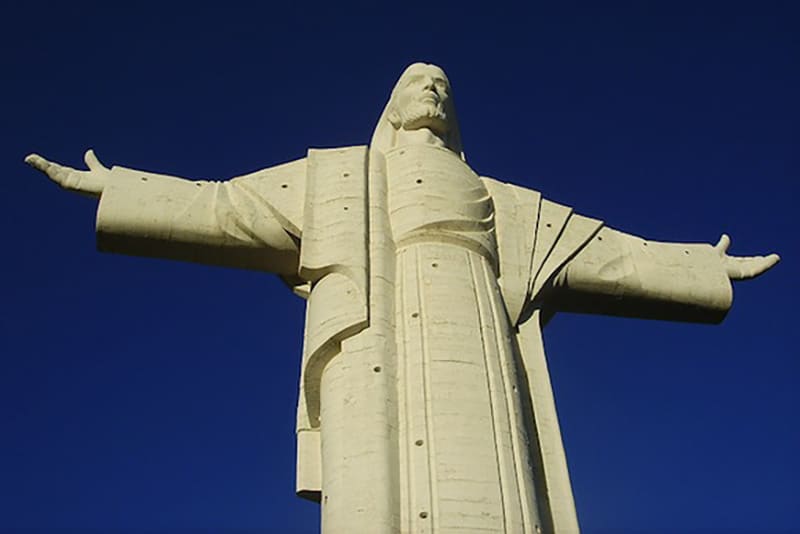
15 Fascinating Things You Didn’t Know About Bolivia
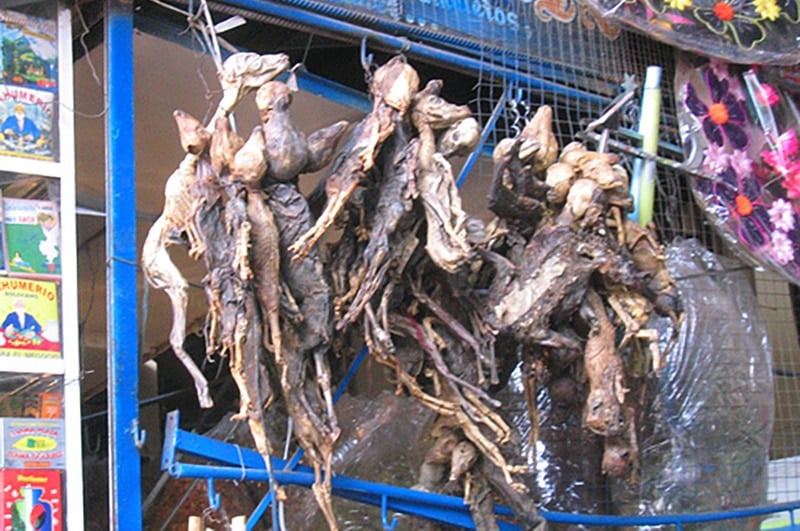
Want Good Luck In Bolivia? Buy A Llama Fetus!
Things To Do In Bolivia
Book the following Bolivia tourist attractions & experiences for an incredible trip!
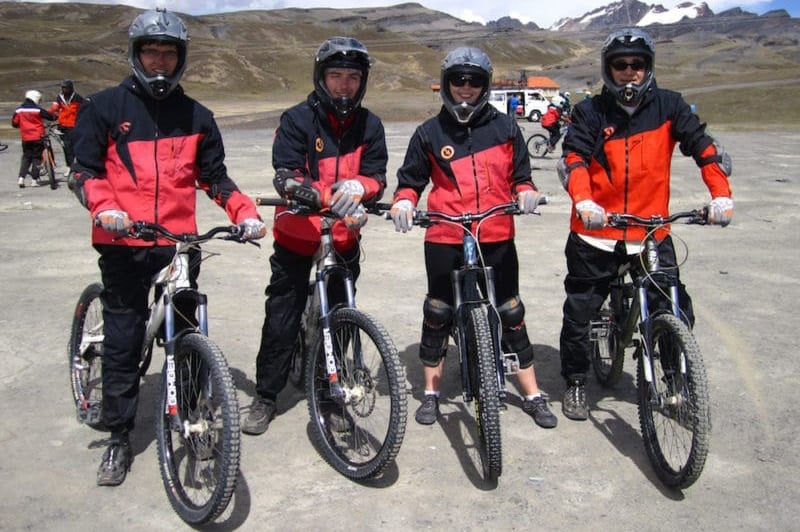
How To Bike Bolivia’s Death Road (& Survive)
Traveling In South America
These guides share Bolivia travel advice as well as tips for exploring South America in general!
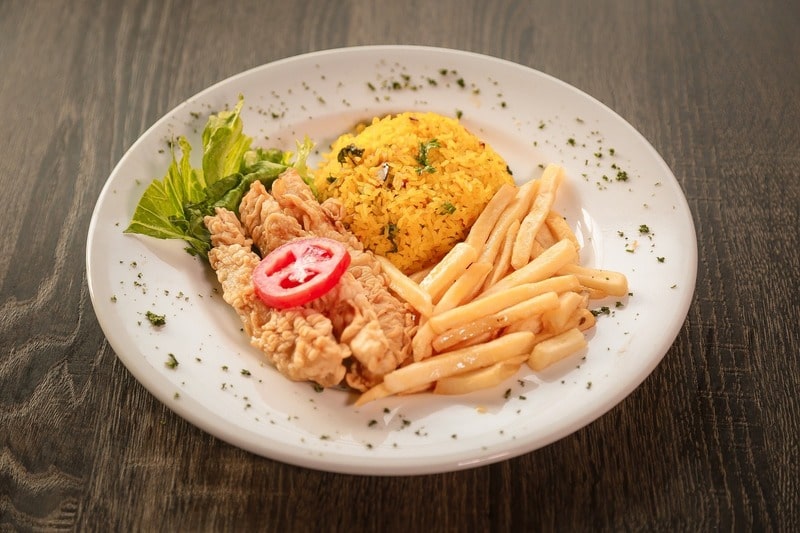
14 Essential Tips For Backpacking South America

My Most Ridiculous Bus Encounters Backpacking South America
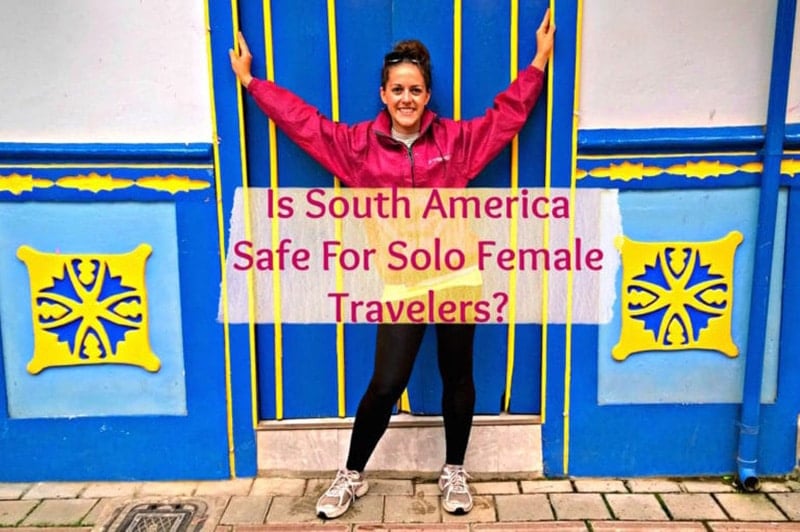
Is South America Safe For Solo Female Travelers?
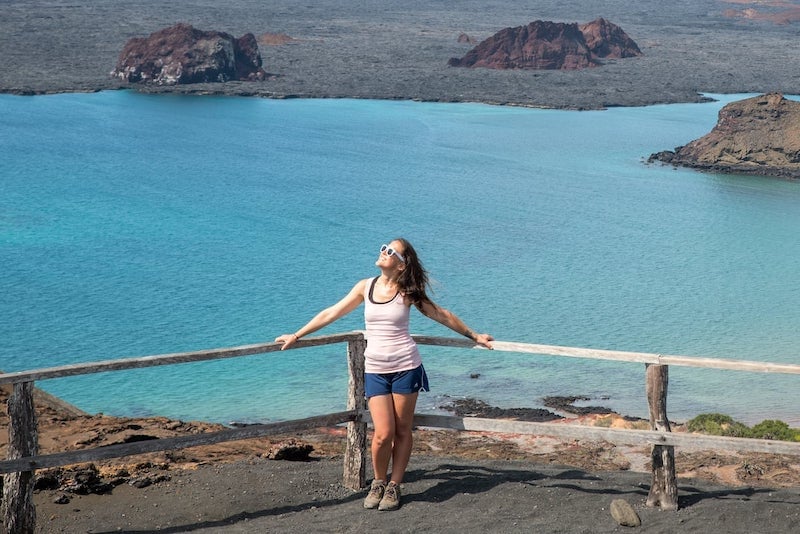
21 Best Places For Solo Travel In South America
Best Bolivia Tours
Explore local culture with a Bolivia tour guide through these unique excursions:
- 3-Day Tour to Salt Flats and Lagoons from Uyuni
- La Paz City Walking Tour Including Historical Streets
- Chacaltaya + Moon Valley from El Alto
- Death Road: Mountain Bike Tour on the World’s Most Dangerous Road from La Paz
- Climbing Huayna Potosí from La Paz
- Day Tour to Titicaca Lake from La Paz
Bolivia Hotels
Click here to browse the best Bolivia travel hotels!
Prefer self-contained stays?
Click here to check out unique local rentals !
You can also use this map to search for local stays:
Renting A Car In Bolivia
Need a rental car for your Bolivia trip?
Use Discover Cars to quickly compare your car rental options.
Bolivia Travel Insurance
It doesn’t matter if you’re traveling solo or with a group on a Bolivia tour. When visiting Bolivia — or any other country in the world — make sure to get travel insurance to protect your health and safety.
In my opinion, the best travel medical insurance for travelers is SafetyWing as they’ve got a large network and offer both short-term and long-term coverage — including coverage if you’re traveling for months as well as limited coverage in your home country).
Additionally, SafetyWing is budget-friendly and offers $250,000 worth of coverage with just one low overall deductible of $250.
With coverage, you’ll have peace of mind as you embark on your Bolivia travel itinerary.
Click my referral link here to price out travel insurance for your trip in just a few clicks .
Bolivia Travel Guide FAQ
Below, find answers to frequently asked questions about traveling in Bolivia .
Q: What are the best places to visit in Bolivia?
Bolivia is an amazing place to get outside and enjoy the wonders of nature and see truly once-in-a-lifetime sights.
One of the country’s most popular attractions is Salar de Uyuni , the world’s largest salt flat. Stretching nearly 11,000 square kilometers (4,247 square miles), this former prehistoric lake will make you feel like you’ve stepped onto another planet, with reflective landscapes as far as the eye can see.
The salt flat offers plenty of unique experiences, like an overnight stay in a salt hotel or a relaxing dip in the local hot springs. This is definitely one stop you won’t want to miss.
Truly daring bikers will want to take a ride on Death Road , a 40-mile downhill road that winds through Bolivia’s mountains.
As the name suggests, this isn’t exactly an experience for first-time bikers, and even if you’re experienced you still might want to ride with a tour guide. But the views from the cliffs and the adrenaline rush from the ride have made this road famous for a reason.
For a somewhat more relaxed experience, head to the famous Lake Titicaca , the largest lake in South America. Here, you can enjoy incredible views, explore Incan ruins, and check out man-made floating islands.
Bolivia is also home to many vibrant cities that are definitely worth exploring. The nation’s capital, La Paz , is a gorgeous city nestled into the mountains with tons of amazing sights to see and culture to take in.
Take a cable car up to the city’s highest peaks for incredible views of La Paz and the surrounding mountains. Explore old colonial cobblestone streets and stroll by colorful houses that date back to the 16th century.
And the adventurous can check out the Witches Market stocked with everything you need to commune with the divine, or just manifest some good luck (including llama fetuses ).
Beyond La Paz, the city of Sucre is the perfect place to check out Spanish colonial architecture and brush up on your language skills with fellow international travelers. The surrounding mountains and mild weather also make Sucre the perfect spot for hiking some of the world’s best trails .
For a look into Bolivia’s history, head to Potosi , home of the Cerro Rico silver mines. Once one of the most populous cities in the Americas, the city showcases gorgeous historic architecture that really tells the story of this country’s long history.
Q: Is Bolivia expensive for tourists?
Compared to other South American destinations, Bolivia is quite inexpensive for travelers. The average traveler spends about $42 USD per day in Bolivia on food, transportation, accommodations, activities, and other travel expenses.
You can generally find apartment rentals for less than $50 USD per night and hostels are easy to find, particularly in cities.
Food is also generally pretty inexpensive regardless of whether you’re eating at restaurant or from a street food vendor.
Q: What is the best way to travel around Bolivia?
Air travel is usually the quickest and most comfortable way to get around the country. Flights in Bolivia are pretty inexpensive and will help you get to out-of-the-way destinations without losing days to travel.
Buses are a popular (and inexpensive) mode of transportation in the country, but they can be uncomfortable and journeys can take much longer than advertised. If your plans are flexible (and you’re on a tight budget), this might be the best way to get around.
You can also book a direct route on a tourist-class bus for a bit more money for a quicker, more comfortable ride.
Q: Is Bolivia safe for travel?
Bolivia is relatively safe for travelers but does pose some more risks than other destinations. Violent crime rates have risen here in recent years and petty crime is a constant issue.
Pickpocketing and bag snatching does happen, particularly in cities and more tourist-heavy areas. Always stay aware of your surroundings and don’t flaunt any obvious signs of wealth when you’re out in public to avoid pickpockets .
You’ll also want to keep your valuables hidden and separate your money so it’s not all in one place.
Bolivia is also a bit riskier for solo female travelers , but you should be fine if you stay on the backpacker route and avoid going out alone after dark.
Q: What do I need to know before going to Bolivia?
Bolivia’s landscape is very diverse, which means that the weather can vary from place to place. The high altitudes of mountain destinations can leave you shivering in the cold if you’re not prepared, while you may find yourself facing high temperatures in the lowland regions.
If you’re doing a big tour of the country and visiting several different destinations, pack accordingly. Do some research on each place you plan to visit and make sure you’re prepared with appropriate clothing.
Also, the sun is also strong wherever you go in Bolivia, so don’t forget the SPF!
If you’re not used to high altitudes, you may find yourself feeling a little woozy once you enter the highlands. If you’re facing altitude sickness, the best thing to do is to take care of yourself as best you can. Rest when you need to, drink lots of water, limit your alcohol intake, and ascend slowly if you can.
You might also want to pack appropriate medications in case you experience symptoms. Ibuprofen is always great for headaches and acetazolamide and dexamethasone can help with more specific altitude sickness symptoms. Be sure to ask your doctor if these medications are appropriate for you before your trip.
Most businesses in Bolivia don’t accept credit cards, so you’ll want to make sure you have cash on hand. Better yet, keep some spare cash in your luggage — you’ll find ATMs in most towns here but they’re not always reliable. It’s always helpful to have a backup stash in a safe place just in case you can’t access your funds.
Q: How many days should you spend in Bolivia?
Most experts suggest spending about a week in Bolivia. This should give you enough time to see the major sights like Salar de Uyuni, Lake Titicaca, and La Paz and will give you enough wiggle room to travel from destination to destination.
On a 10-day trip, you can build in some time to visit other great destinations like Sucre and Tupiza.
Q: What is the best month to visit Bolivia?
Bolivia’s climate varies throughout the country, but you’ll find that the dry season (April through October) is usually the best time to visit. Temperatures are a bit cooler but without the extreme weather of the wet season, traveling around the country is much easier.
The country’s peak season runs from June through September so plan to visit during a different time if you want to avoid the crowds.
Q: Do I need a Bolivia travel visa?
Visitors from the United States do need a visa to visit Bolivia. U.S. citizens can obtain a tourist visa for free prior to their trip from their local Bolivian Embassy or Consulate or purchase a visa at the border.
Visitors with a visa can stay in the country for up to 30 days per trip, not to exceed 90 days per year. To obtain a visa, visitors must show proof of a round-trip ticket and lodging in Bolivia (i.e. a hotel reservation or, if you’re staying with family or friends, a letter of invitation). Visitors also must show an International Certificate of Yellow Fever Vaccination.
Travelers from Canada, the United Kingdom, the European Union, and Australia do not need a visa to enter Bolivia.
It’s recommended to view your country’s Bolivia International Travel Information page for the most up-to-date information on entry and exit rules and Bolivia Travel Requirements. You can also contact the Consulate General of Bolivia.
Q: Where is Bolivia?
Bolivia is located in west-central South America. It shares borders with Brazil (north and east), Paraguay (southeast), Argentina (south), Chile (southwest and west), and Peru (northwest).
Q: Are credit cards accepted in Bolivia?
Credit cards — particularly Visa and Mastercard — are typically accepted at larger establishments in Bolivia, though it is always wise to carry some cash for smaller establishments and in case of emergency.
Q: Can you drink the tap water in Bolivia?
The tap water is typically not safe to drink in Bolivia. Luckily, it is easy to find bottled water throughout the country. Or, better yet, you can bring a filtration bottle to limit your plastic usage.
Q: What is the local currency in Bolivia?
The local currency in Bolivia is the Bolivian boliviano (BOB).
What would you add to this Bolivia travel guide?

Enjoyed this ultimate Bolivia travel guide? Pin it for later!
- Car Rentals
- Airport Transfers
- Attractions & Tours
- Bundle & Save
- Destinations
- Trip.com Rewards
The Ultimate Guide to the Trip to Bolivia Cost in 2024

by Trip.com
August 2, 2023

Bolivia, a mesmerizing country in South America, offers travelers a unique and enriching experience. Planning a trip to Bolivia can be both exciting and daunting, especially when it comes to budgeting. In this article, we aim to provide you with the best tips for saving money without compromising on quality. From affordable accommodations to delicious local cuisine, we've got you covered. So, if you're wondering about the trip to Bolivia cost, read on to discover how you can make the most of your adventure while keeping your wallet happy.
When it comes to the cost of traveling to Bolivia, it's important to consider various aspects. For a round-trip ticket, flights to Bolivia can range from approximately $500 to $1,500, depending on the season and departure location. Accommodation costs vary as well, with budget hotels or hostels starting at around $10 per night and luxury hotels reaching up to $200 per night. While Bolivia's public transportation system may not be as extensive as in some other countries, it is still efficient and affordable. A one-way subway or train ticket can cost between $0.50 and $1.50. As for food, you can enjoy a delicious meal at a budget restaurant for around $5, while mid-range restaurants may charge around $15 per person.
For budget travelers, planning ahead is crucial. On average, a budget traveler can expect to spend around $30 to $50 per day in Bolivia, including accommodation, meals, transportation, and activities. However, keep in mind that costs can vary depending on your preferences and the activities you choose. Mid-range travelers, on the other hand, can expect to spend approximately $70 to $100 per day, allowing for a bit more comfort and flexibility. It's always a good idea to research activities and costs in advance to create a budget that suits your needs and ensures a memorable trip to Bolivia without breaking the bank.
- How much does it cost for 2 nights and 3 days when traveling to Bolivia?
Planning a trip to Bolivia? Wondering how much it would cost for a 2-night, 3-day adventure in this beautiful country? Well, the cost can vary depending on several factors such as your travel style, choice of accommodation, transportation, and activities. But fret not, we're here to give you a rough estimate of the expenses for a budget traveler.

Let's break down the costs for you:
The cost of flights to Bolivia can vary depending on your departure city. From major cities around the world, you can expect round-trip ticket prices ranging from $500 to $1500 in US dollars.
Accommodation:
For budget travelers, there are plenty of affordable options available. Budget hotels in Bolivia can cost anywhere between $20 to $60 per night. So, for a 2-night stay, you can expect to spend around $40 to $120 on accommodation.
Transportation:
Getting around Bolivia is relatively inexpensive. A one-way subway or train ticket can cost you around $1 to $3. So, for 3 days of transportation, you can expect to spend approximately $6 to $18.
Food and drinks:
When it comes to food, Bolivia offers a variety of options to suit every budget. At budget restaurants, a meal can cost you anywhere between $5 to $10. However, if you opt for street food or convenience store meals, you can save even more. As for drinks, prices can vary depending on the type and location. Expect to spend around $1 to $3 for a drink. For 3 days of food and drinks, you can estimate a cost of $60 to $120.
Sightseeing and activities:
Bolivia is known for its stunning attractions, and luckily, some of them are free or have a small entrance fee. Popular attractions such as the Uyuni Salt Flats or Lake Titicaca may cost you around $10 to $20 per person. If you're looking for more adventurous activities like hiking or guided tours, the cost can be a bit higher, ranging from $50 to $100 per person. For 3 days of sightseeing and activities, you can expect to spend approximately $30 to $200.
So, for a budget traveler planning a 2-night & 3-day trip to Bolivia, the estimated cost would be:
- Flights: $500 to $1500
- Accommodation: $40 to $120
- Transportation: $6 to $18
- Food and drinks: $60 to $120
- Sightseeing and activities: $30 to $200
Please note that these are rough estimates and actual costs may vary depending on your travel style, activities, and other expenses. However, we hope this gives you a good starting point for planning your trip to Bolivia.
- How much does it cost for flights when traveling to Bolivia?
Planning a trip to Bolivia? One of the first things that comes to mind is the cost of flights. And let me tell you, it can vary depending on a multitude of factors. From your departure location to the time of year, airline, and availability, these variables can have a significant impact on your wallet. So, let's dive into the nitty-gritty details and give you a general idea of what to expect when it comes to the cost of flights to Bolivia.
When it comes to booking flights, the departure location plays a crucial role in determining the overall cost. If you're flying from a major city like New York, London, or Sydney, you can expect a wider range of options and potentially better deals. On the other hand, if you're departing from a smaller city, the choices might be limited, and prices could be higher.
Another factor to consider is the time of year. Just like any other popular travel destination, Bolivia has its peak seasons, where demand is high, and prices tend to skyrocket. These peak seasons usually coincide with holidays or specific events. So, if you're flexible with your travel dates, you might be able to snag a better deal during the off-peak periods.
Now, let's talk about airlines. With several airlines operating flights to Bolivia, you have the luxury of choosing the one that suits your preferences and budget. Keep in mind that different airlines offer different levels of comfort and service, which can affect the overall cost. So, it's essential to weigh the options and find the right balance between price and comfort.
Lastly, availability is a crucial factor in determining flight costs. If you're booking last-minute or during a peak season, the chances are that prices will be higher due to limited availability. On the other hand, booking in advance can often lead to better deals and more affordable options.
Now, let's get down to numbers. Please note that the following figures are approximate and can vary depending on the factors mentioned above. For one-way tickets from major cities to Bolivia, prices can range from around $500 to $1500 in economy class. If you're looking for a bit more comfort, premium economy tickets can go up to $2000, while business class tickets can range from $2500 to $4000.
For round-trip tickets, the cost can be slightly higher due to the added convenience and flexibility. Economy class round-trip tickets can range from $800 to $2000, premium economy from $2500 to $3000, and business class from $4000 to $7000.
Remember, these figures are just a general range, and it's always a good idea to check with various airlines, travel agencies, and online platforms to find the best deals that suit your specific requirements.
So, there you have it - a glimpse into the cost of flights when traveling to Bolivia. Now that you have an idea of what to expect, start planning your adventure and get ready to immerse yourself in the breathtaking beauty of this South American gem!
- How much does it cost for hotels when traveling to Bolivia?
Planning a trip to Bolivia? One of the essential aspects to consider is the cost of accommodation. The price of hotels in this captivating South American country can vary depending on several factors, such as location, season, and the type of accommodation you're seeking. Let's delve into the details and give you a clearer picture of what to expect.
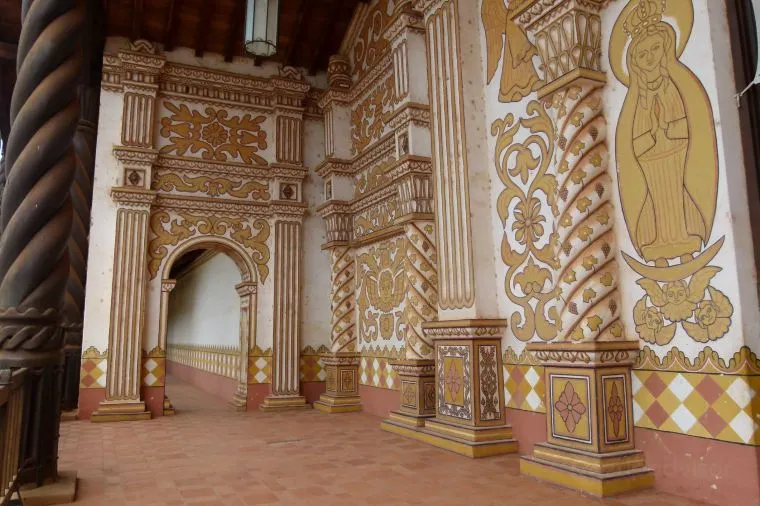
When it comes to hotels in Bolivia, the cost can differ significantly between major cities and smaller towns or rural areas. In bustling cities like La Paz, Santa Cruz, and Sucre, you'll find a wide range of options catering to different budgets. However, it's important to note that hotels in major cities generally tend to be pricier compared to those in smaller cities or rural areas.
Now, let's talk numbers. In major cities like La Paz, the average cost range for a mid-range hotel room per night is around $50 to $100. If you're looking for a touch of luxury during your stay, be prepared to spend anywhere from $100 to $300 per night for a high-end hotel room.
On the other hand, in smaller towns and rural areas such as Potosi, Tarija, and Copacabana, the hotel prices are generally more affordable. For a mid-range hotel room, you can expect to pay around $30 to $70 per night. If you're in the mood to splurge, luxury hotel rooms in these areas can range from $70 to $200 per night.
It's worth mentioning that these price ranges are approximate and can vary depending on the specific hotel, season, and availability. It's always a good idea to check with your preferred hotel or booking platform for the most up-to-date prices.
So, whether you're exploring the vibrant streets of La Paz or immersing yourself in the tranquility of smaller towns, Bolivia offers a range of accommodation options to suit every traveler's budget. Remember to plan ahead, compare prices, and book in advance to secure the best deals for your trip to Bolivia.
- How much does it cost for food when traveling to Bolivia?

When planning a trip to Bolivia, it's important to consider the cost of food and dining. The prices can vary widely depending on several factors, such as the type of food, the restaurant's location, and the level of formality or luxury.
Let's take a look at some general price ranges in US dollars per meal for different food options in Bolivia. Please note that these are approximate ranges and may vary depending on the specific establishment.
Street food or fast food: $2 - $5
Casual dining or local restaurants: $5 - $10
Mid-range restaurants: $10 - $20
High-end or luxury restaurants: $20 and above
It's worth mentioning that Bolivia also offers other affordable options for food. Convenience stores and supermarkets are great alternatives for those looking to save some money. You can find a variety of snacks, sandwiches, and ready-to-eat meals at reasonable prices.
As for tipping, it is not customary in Bolivia. However, if you receive exceptional service and wish to show your appreciation, leaving a small tip is always welcomed.
- How much does it cost for souvenirs when traveling to Bolivia?

Well, let me tell you, amigo, the cost of souvenirs in Bolivia can vary like the weather in the Andes. It all depends on what you're looking for, where you're shopping, and the quality of the item. So, if you're on a tight budget, don't fret, because there are plenty of affordable options that will still make your heart skip a beat. For instance, you can snag a colorful alpaca wool scarf for around $10 to $20, or maybe a handcrafted silver necklace for $30 to $50. If you're feeling a bit more adventurous, why not bring home a traditional Bolivian poncho for $40 to $80? And for those with a taste for the exotic, you can find intricate handmade ceramics ranging from $20 to $100. Now, keep in mind that many souvenir shops in tourist areas have fixed prices, but if you're up for a little haggling, head to the flea markets or antique shops where you might just strike a bargain. So, my friend, when planning your trip to Bolivia, don't forget to set aside some extra cash for those irresistible souvenirs!
- How much does it cost for transportation when traveling to Bolivia?

When planning a trip to Bolivia, it's essential to consider the cost of transportation. The expenses can vary depending on the mode of transportation and the distance you plan to travel. Let's take a closer look at the different options and their associated costs.
Train: While Bolivia doesn't have an extensive train network, there are a few scenic train routes available for tourists. The cost of train tickets can range from $10 to $50, depending on the length of the journey and the class of service.
Subway: Unfortunately, Bolivia doesn't have a subway system in place.
Bus: Buses are the most common mode of transportation in Bolivia. The cost of bus tickets can vary depending on the distance traveled and the level of comfort. For short journeys within a city, you can expect to pay around $0.50 to $1. For longer intercity trips, prices can range from $5 to $20.
Taxi: Taxis are readily available in Bolivia's major cities. The fares are usually metered, but it's always a good idea to confirm the price before getting in. Taxi rides within the city can cost between $2 and $5, depending on the distance.
Rental Car: Renting a car in Bolivia can be a convenient option if you prefer to have more flexibility and independence. The cost of renting a car starts at around $30 per day, excluding fuel and insurance.
It's worth noting that Bolivia offers transportation passes and discount tickets for visitors. These passes can be a great value if you plan to do a lot of traveling in a short period. For example, the "Bolivia Hop" pass allows unlimited travel on their bus network for a fixed price, making it an excellent choice for exploring multiple destinations.
In conclusion, the cost of transportation in Bolivia can vary depending on your chosen mode of travel and the distance you plan to cover. Whether you opt for trains, buses, taxis, or rental cars, it's essential to consider your budget and travel needs. Additionally, taking advantage of transportation passes and discount tickets can help you save money if you're planning to explore Bolivia extensively. So, pack your bags and get ready for an adventure-filled trip to Bolivia!
- How much does it cost for sightseeing when traveling to Bolivia?
Planning a trip to Bolivia? Wondering how much it will cost to explore the beautiful sights this country has to offer? Well, the cost of sightseeing in Bolivia can vary widely depending on the location, attraction, and activity you choose. But don't worry, we've got you covered with all the information you need to plan your budget-friendly adventure!

When it comes to sightseeing in Bolivia, there are plenty of options to choose from. Whether you're a nature lover, history enthusiast, or adventure seeker, Bolivia has something for everyone. Let's take a look at some of the popular tourist attractions and their cost ranges in good old US dollars:
- The majestic Salar de Uyuni - $80 to $150 for a full-day tour
- The breathtaking Lake Titicaca - $10 to $30 for a boat tour
- The ancient ruins of Tiwanaku - $10 to $20 for an entrance ticket
- The vibrant city of La Paz - Free to explore, but activities like cable car rides may cost around $5
- The stunning Madidi National Park - $50 to $100 for a guided tour
- The adrenaline-pumping Death Road - $50 to $100 for a biking excursion
- The picturesque Yungas Valley - $20 to $50 for a hiking tour
- The historic Potosi Silver Mines - $10 to $20 for a guided visit
Now, here's the exciting part - Bolivia also offers many free or low-cost sightseeing options that won't break the bank. You can explore the colorful markets of Sucre, visit the charming town of Copacabana, or take a leisurely stroll through the charming streets of Santa Cruz. These are just a few examples of the budget-friendly sightseeing opportunities that await you in Bolivia.
So, whether you're on a tight budget or ready to splurge on once-in-a-lifetime experiences, Bolivia has something for everyone. Remember, the cost of sightseeing can vary, but with a little planning and research, you can make the most of your trip to Bolivia without burning a hole in your pocket!
- How much does it cost for Wi-Fi & communication when traveling to Bolivia?
When planning a trip to Bolivia, it's essential to consider the cost of Wi-Fi and communication to stay connected while exploring this beautiful country. The options for accessing Wi-Fi in Bolivia are diverse, catering to different needs and budgets. Rental Wi-Fi routers are available through various companies, offering plans that range in cost depending on the rental company and the desired plan. Similarly, purchasing a SIM card is another popular option, with costs varying depending on the data plan and provider chosen. Additionally, free Wi-Fi can be found in certain locations, such as cafes, restaurants, and public spaces, allowing travelers to save on connectivity expenses. It's worth noting that some hotels and accommodations offer complimentary Wi-Fi for their guests, so it's always wise to check before booking. Moreover, certain smartphone apps, like "Wi-Fi Finder" and "Free Wi-Fi Map," provide access to free Wi-Fi hotspots throughout Bolivia, ensuring that travelers can stay connected without breaking the bank. The cost of Wi-Fi in Bolivia can fluctuate depending on the method of access and the data plan chosen. However, with the abundance of options available, travelers can find a suitable and affordable solution to stay connected during their time in Bolivia.
- How much does it cost for visa when traveling to Bolivia?
Planning a trip to Bolivia? Well, let's talk about the cost of visas and passports, shall we? It's essential to know the nitty-gritty details before embarking on your South American adventure. So, how much does a visa to Bolivia cost? The answer, my friend, depends on your country of citizenship and the type of passport application you're pursuing. Let's break it down for you.

Now, if you're a citizen of the United States, brace yourself for the visa application fees. For a tourist visa, you're looking at around $160, while a business visa will set you back approximately $200. But hey, if you're from Canada, it's a different story altogether. Canadians enjoy visa-free access to Bolivia, so no need to worry about those extra bucks. Lucky them!
But hold on, folks! The cost of visas can vary depending on your country of citizenship and the type of application. And that's not all. Some countries might require additional fees for visa applications or other travel documents. So, it's always wise to double-check with your local embassy or consulate for the most up-to-date information on passport and visa requirements and fees.
So, there you have it. The lowdown on the trip to Bolivia cost. Remember, it's not just about the breathtaking landscapes and vibrant culture; it's also about getting your paperwork in order.
- How much does it cost for insurance when traveling to Bolivia?
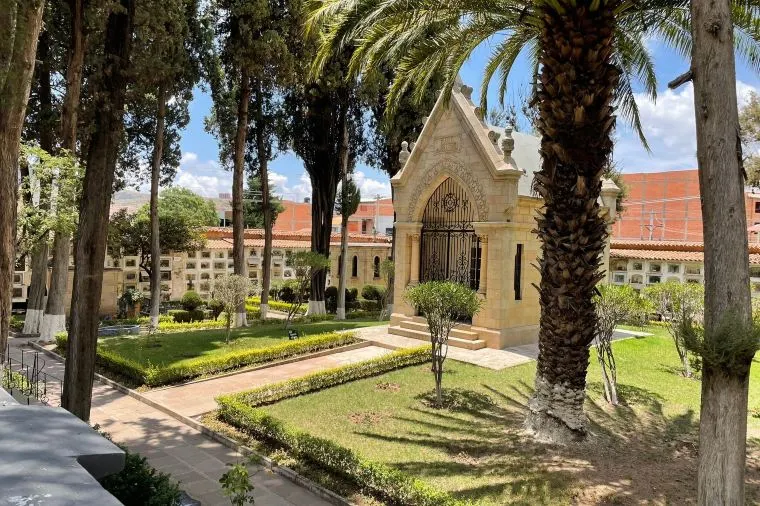
The cost range of travel insurance for a trip to Bolivia can vary depending on several factors. These factors include your age, the length of your trip, the type of coverage you need, and the insurance provider you choose. To give you a general idea, here are some guidelines for travel insurance costs:
For a single trip, the cost of travel insurance can range from as low as $50 to as high as $500. This range is influenced by factors such as the duration of your trip and the level of coverage you require. It's important to compare policies from different providers to find the one that best suits your needs and budget.
If you are a frequent traveler, an annual travel insurance policy might be a better option for you. The cost of an annual policy can range from $200 to $1000, depending on the coverage and duration of your trips. This type of policy provides coverage for multiple trips within a year, saving you the hassle of purchasing insurance for each individual trip.
If you want comprehensive coverage that includes not only medical expenses but also trip cancellation, baggage loss, and other unforeseen events, a comprehensive travel insurance policy is recommended. The cost of this type of policy can range from $100 to $1000, depending on the coverage limits and duration of your trip.
When comparing travel insurance policies, it's crucial to read the policy details carefully. Make sure you understand what is and isn't covered, as well as any deductibles or exclusions. Some credit cards and travel booking sites also offer travel insurance as a benefit or add-on, so be sure to explore those options as well.
In conclusion, the cost of travel insurance for a trip to Bolivia can vary significantly. It's essential to compare policies from different providers to find the coverage that best meets your needs and budget. Remember to carefully review the policy details and consider alternative options such as credit card or travel booking site insurance. Safe travels!
- How much does it cost for family, couples or single when traveling to Bolivia?

The cost of traveling to the country can vary widely depending on a number of factors, such as the length of the trip, the type of accommodation, the level of luxury, the activities planned, and the number of travelers. Here's the lowdown on what you can expect to spend on a trip to Bolivia:
Airfare: Let's talk about getting there first. The cost of airfare to the country can vary depending on where you're flying from and when you're flying. You can expect to pay anywhere from a few hundred to a couple of thousand dollars for a round-trip ticket from the United States to Bolivia per person.
Accommodation: Now, let's find a place to rest our weary heads. The cost of accommodation in Bolivia can range from budget-friendly to luxurious. For those on a tight budget, you can find a decent budget hotel or hostel for around $20 to $40 per night. If you're looking for a bit more comfort, a mid-range hotel will set you back around $50 to $100 per night. And for those who want to splurge, luxury hotels and ryokans can cost anywhere from $150 to $500 per night.
Food and drink: Let's not forget about satisfying our taste buds. The cost of food and drink in Bolivia can vary depending on your culinary preferences. If you're on a budget, you can enjoy a tasty budget meal at a local restaurant for around $5 to $10 per person. If you're looking for something a bit more upscale, a mid-range meal will cost you around $15 to $30 per person.
Transportation: Now, let's talk about getting around. The cost of transportation in Bolivia can vary depending on how you choose to travel. A single metro or train ticket will cost you around $0.50 to $1.50, while a long-distance bullet train ticket can set you back around $10 to $30. Taxis and car rentals are also available, but they can add to your transportation costs.
Overall, the cost of traveling to Bolivia can range from a few hundred to several thousand dollars per person, depending on your travel style and preferences. Whether you're traveling with your family, your significant other, or going solo, you can expect to spend around $500 to $3000 per person for a trip to Bolivia. So start saving up and get ready for an adventure of a lifetime!
- Methods to Save Money When Traveling to Bolivia
Planning a trip to Bolivia can be an exciting adventure, but it's essential to keep an eye on your budget. After all, nobody wants to break the bank while exploring the stunning landscapes and vibrant culture of this South American gem. Luckily, there are numerous ways to cut costs and make your trip to Bolivia more affordable. So, let's dive into some money-saving tips that will help you make the most of your adventure without compromising on the experience.
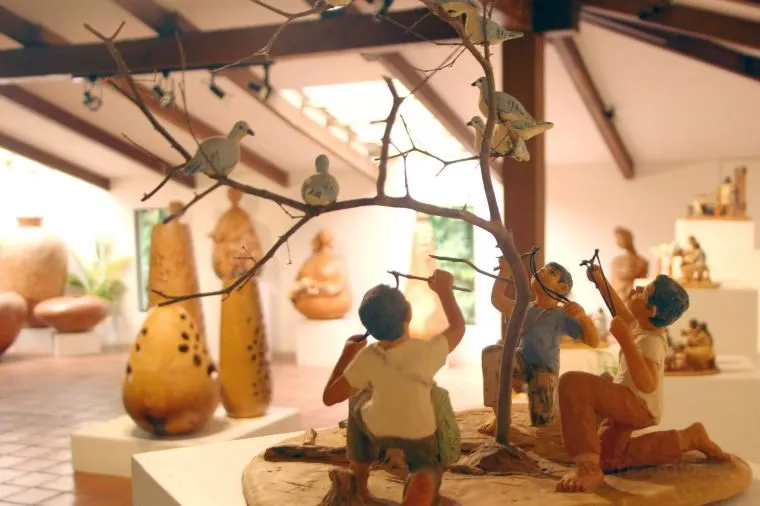
First and foremost, consider traveling during the off-peak season. This can significantly reduce your trip to Bolivia cost, as accommodation and flight prices tend to be lower. Plus, you'll avoid the crowds and have a more authentic experience, immersing yourself in the local culture without the hustle and bustle of peak tourist times.
Another great way to save money is by opting for budget accommodations. Bolivia offers a wide range of affordable hostels, guesthouses, and even homestays, allowing you to experience the local hospitality while keeping your expenses in check. Not only will you save money on accommodation, but you'll also have the opportunity to connect with fellow travelers and share valuable tips and recommendations.
When it comes to transportation, consider using public buses or shared taxis instead of private transfers. Public transportation in Bolivia is not only cheaper but also gives you a chance to mingle with the locals and witness the everyday life of Bolivians. Additionally, if you're up for an adventure, why not explore the country by renting a bicycle? It's an eco-friendly and cost-effective way to discover Bolivia's breathtaking landscapes at your own pace.
Furthermore, be sure to indulge in the local cuisine. Eating at local markets or street food stalls is not only a delicious experience but also a budget-friendly one. Bolivian street food is known for its flavorsome dishes, such as salteñas (meat-filled pastries) and anticuchos (grilled skewers). By trying the local delicacies, you'll not only save money but also immerse yourself in the vibrant culinary scene of Bolivia.
Lastly, don't forget to haggle and negotiate prices when shopping at local markets. Bargaining is a common practice in Bolivia, and you'll often find that vendors are open to negotiation. So, put your haggling skills to the test and snag some unique souvenirs or traditional handicrafts at a fraction of the initial price.
By following these money-saving methods, you can make your trip to Bolivia cost-effective without compromising on the incredible experiences and memories you'll create. So, start planning your adventure today and get ready to embark on a budget-friendly journey through the captivating landscapes and rich cultural heritage of Bolivia.
- Tips for Traveling to Bolivia
Are you ready to embark on an adventure to Bolivia? This South American gem is a treasure trove of natural wonders, vibrant culture, and rich history. Whether you're a seasoned traveler or a first-timer, here are eight essential tips to make the most of your journey:
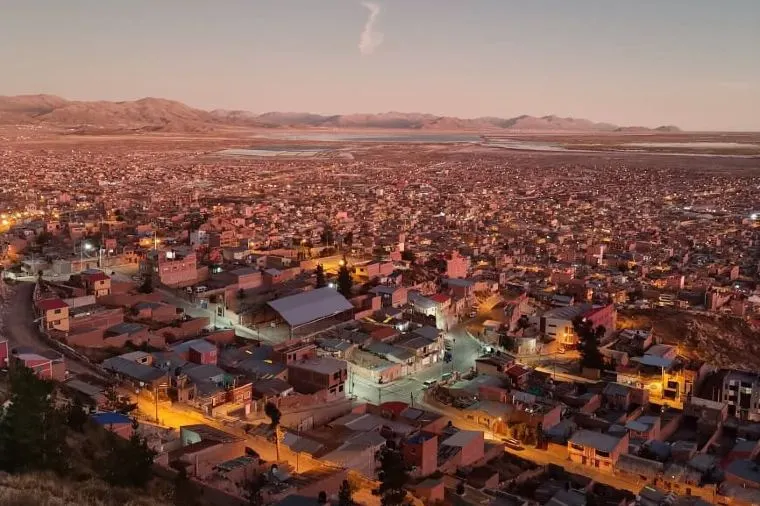
1. Get acclimated to the altitude: Bolivia's breathtaking landscapes are often located at high altitudes, so it's crucial to give your body time to adjust. Stay hydrated, take it easy, and listen to your body.
2. Explore the Salar de Uyuni: This otherworldly salt flat is a must-visit destination. Be sure to capture those mind-bending perspective photos and witness the mesmerizing sunset over the vast expanse.
3. Immerse yourself in local traditions: Bolivians are proud of their vibrant culture, so take the time to engage with locals, learn a few basic phrases in Spanish, and participate in traditional festivities.
4. Trek through the Amazon rainforest: Bolivia is home to a portion of the Amazon, offering incredible biodiversity. Embark on a guided tour to spot unique wildlife, explore lush jungles, and learn about indigenous communities.
5. Visit the ancient ruins of Tiwanaku: Step back in time and discover the remnants of an ancient civilization. Marvel at the intricate stone carvings, explore the archaeological site, and learn about the fascinating history of the Tiwanaku people.
6. Indulge in Bolivian cuisine: Don't miss the opportunity to savor traditional Bolivian dishes like salteñas (meat-filled pastries), anticuchos (grilled skewers), and the iconic salar de Uyuni-inspired dessert, the "Salar de Uyuni cake."
7. Take a boat trip on Lake Titicaca: As the highest navigable lake in the world, Lake Titicaca offers breathtaking views and a chance to visit the Uros floating islands. Immerse yourself in the local culture and witness the unique way of life on these man-made islands.
8. Explore the colonial charm of Sucre: Wander through the streets of Bolivia's constitutional capital and marvel at the well-preserved colonial architecture. Visit the Casa de la Libertad, where Bolivia's independence was declared, and soak in the city's relaxed atmosphere.
With these tips in mind, you're well-equipped to embark on an unforgettable journey through Bolivia. So pack your bags, embrace the unknown, and get ready to create memories that will last a lifetime!
* All user reviews in this article have been translated by machine.
* The information above is subject to change at any time. For the latest information, please check the websites of hotels and attractions.
Trip to Bolivia Cost in 2024
- Customer Support
- Service Guarantee
- More Service Info
- Website Feedback
- About Trip.com
- Terms & Conditions
- Privacy Statement
- About Trip.com Group
Other Services
- Investor Relations
- Affiliate Program
- List My Property
- Become a Supplier

How Much Does It Cost To Travel In Bolivia?
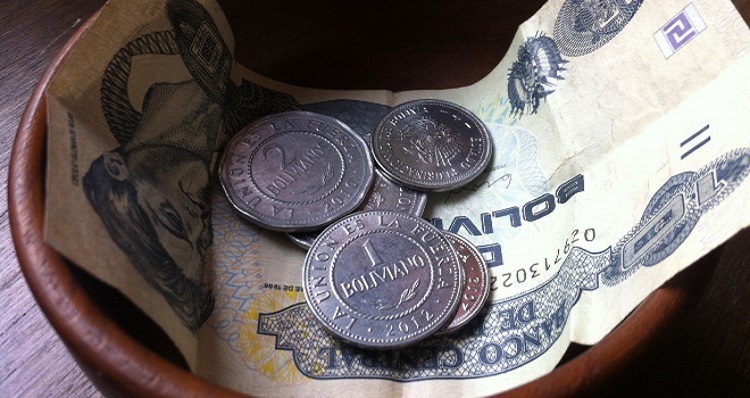
When it comes to cheap and cheerful travel, it’s hard to find a better destination than Bolivia. The country is a top choice for travelers looking to experience breathtaking scenery, adrenaline pumping activities, and unique cultures, all without breaking the bank.
On average, travelers can expect to spend less than $45 US a day which includes not only basic living but all the fun stuff too! Of course you can spend less than this, but keep in mind that quality and even safety could be compromised. People who love slow travel will appreciate the low day to day living expenses as will travelers looking to extend their travels when the savings dry up.
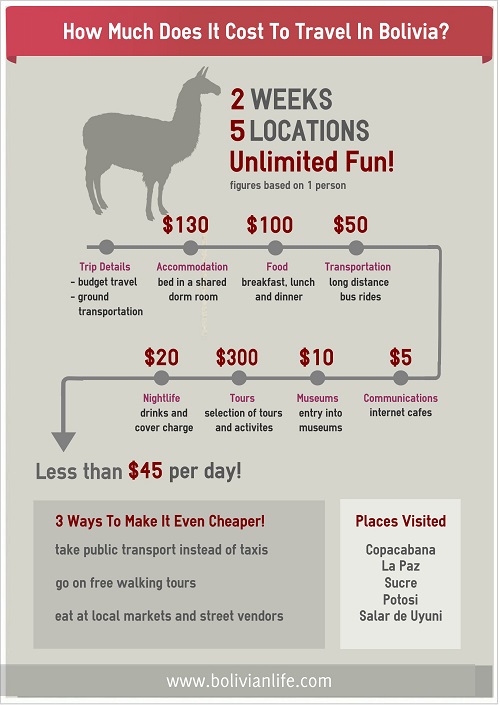
Below we have listed the types of costs you can expect to incur during your time in Bolivia:
Please Note: The below prices are in US Dollars and are based on our experience traveling in Bolivia in 2013/2014
Accommodation
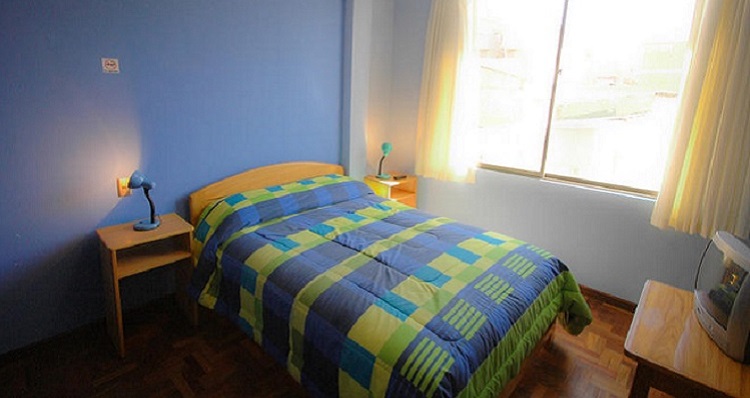
Bolivia offers a myriad of accommodation options, ranging from the down right terrible to the more homely and luxurious. Though accommodation prices in Bolivia are generally reflective of quality and service, we still recommend using the likes of Booking.com and Trip Advisor to ensure you’re getting what you pay for.
Hostels: Like most countries around the world, hostels are the most popular choice for backpackers traveling in Bolivia. Dorm beds go for as little as $8 per person and private double rooms with ensuite for around $25 per couple. If you plan on staying for more than a week, hostels will usually be open to negotiating a better price.
- Where To Sleep On A Budget In Bolivia
Hotels and Alojamientos: Hotels differ in price depending on quality and location. In most places expect to pay between $100 – $150 for a double room in a luxury hotel, between $50-$90 for a double room in a 3/4 star hotel and around $25 for a clean but basic no frills hotel.
- The Best Luxury Hotels In Bolivia
- A Guide To Homestays In Bolivia
Another option is to stay at a family run Alojamientos (bed and breakfast style accommodation). Alojamientos tend to be around $20 to $40 a night for a private double room and are a great option for those seeking a more homely vibe.
Apartments: Renting an apartment in Bolivia has now become much easier with the likes of Airbnb and other online listings. Those looking to stay on a more long-term basis can expect to pay anywhere between $300 to $500 a month for an apartment in the city center with options ranging from basic studios to 3 story houses.
- Renting an Apartment (or House) in Bolivia
Camping: Whilst Bolivia offers great conditions for camping, other than hiking, there are very few places around the country that have dedicated camp grounds. Colibri Camping near La Paz is one such place, providing grassy spaces with stunning views for $7 a night pitching your own tent and $11 to use one of theirs.
More on Accommodation:
- Top 10 Hostels in La Paz
- Top 10 Hostels in Sucre
- How To Use Airbnb To Find The Perfect Apartment In Bolivia
Food and Drink
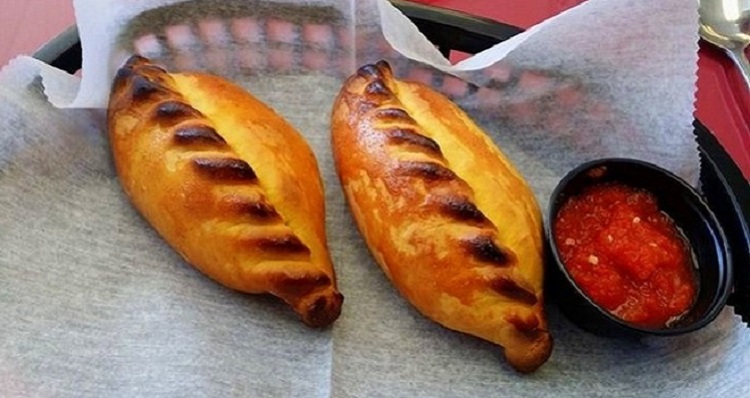
One of the best things about Bolivia is that it’s often just as cheap to eat out at a restaurant as it is to cook at your hostel or apartment.
Eating at local eateries is generally cheaper than dining at tourist establishments with a main meal costing around $2-$3 compered to $6-$8 for a ‘gringo-friendly’ meal. Menu del dia’s are a great option for lunch where you can get a three course set meal for around $3.
Drinks are affordable also with a 1L bottle of beer costing about $3 and even cheaper again if you make use of happy hours.
Keep in mind, you can eat and drink even cheaper than all this if you frequent the street vendors or head to the markets where you can get hot meals, amazing juices and fresh fruit salads for as little as $1.
Grocery items at supermarkets range in price depending on whether you purchase local or imported products, however to get the best deals your best option is to head to the central markets where you can pick up bags of beautiful fresh produce for a couple of dollars.
More on Food and Drink:
- Top 10 Vegetarian-Friendly Restaurants in La Paz
- Top 10 Vegetarian-Friendly Restaurants in Sucre
- Top 10 Places to Party in La Paz
- Top 10 Places to Party in Sucre
- A Guide To Bolivia’s Most Mouthwatering Foods
Transportation
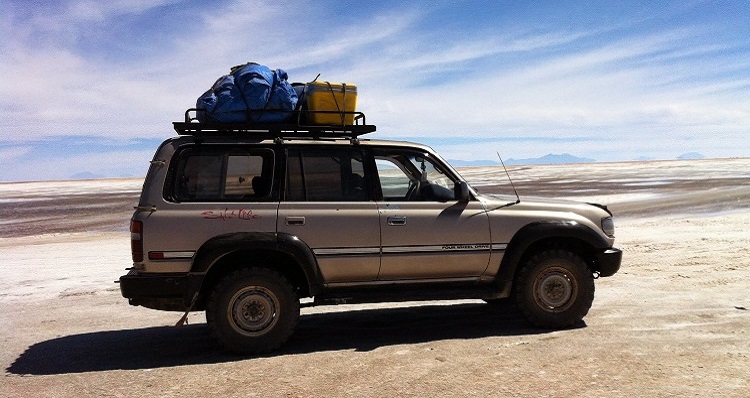
Transport within Bolivia’s main tourist destinations is safe and reliable.
Traveling anywhere by taxi within the city center will cost $0.60 per person and local buses are even cheaper again at $0.30 for a one way ticket. Longer journeys by bus tend to cost around $2 per hour, and flying, though more expensive, is an affordable option if you’re short on time.
More on Transportation:
- Getting To, From and Around Sucre on Public Transport
- Transport in La Paz
- Getting Around Bolivia on Public Transport
Bolivian Life Quick Tip:
As voted the best way to travel around Bolivia and Peru, we highly recommend choosing Bolivia Hop as your means of transport. Their safe, flexible and trustworthy service have proven to be the best way of getting the most out of your time in South America!
Tourist Activities
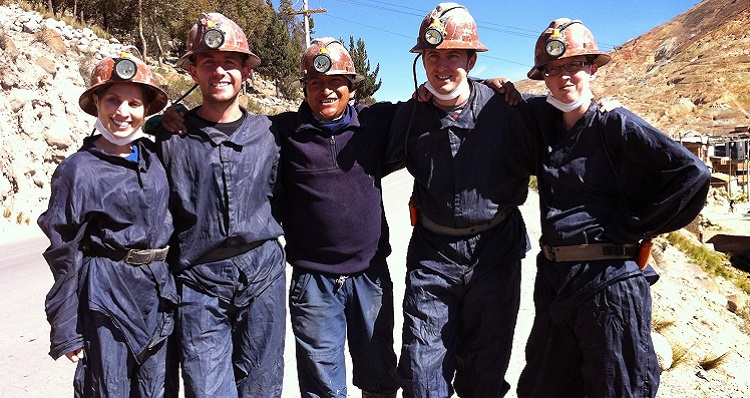
Keeping yourself entertained in Bolivia will not break the budget as most tours are completely affordable and many activities often free!
These are prices of some of the tours and activities we did in Bolivia:
- Red Cap Walking Tour of La Paz : Free
- 3 day/2 night Salt Flats Tour : $175 per person
- 2 day Maragua Crater Trek : $65 per person
- Museums and Churches : Often there is no charge, but if a ticket is required it will only cost you between $2-$4
- A Tour of the Potosi Mines: $14 per person
- A round of golf at the world’s highest course including a caddie and rentals: $80 per person
More on Tours and Activities:
- 10 Activities In Bolivia For Thrill-Seekers
- 11 Unmissable Tourist Attractions In Bolivia
- 16 Incredible (But Cheap) Things To Do In La Paz
- 14 Incredible (But Cheap) Things To Do In Sucre
Studying Spanish
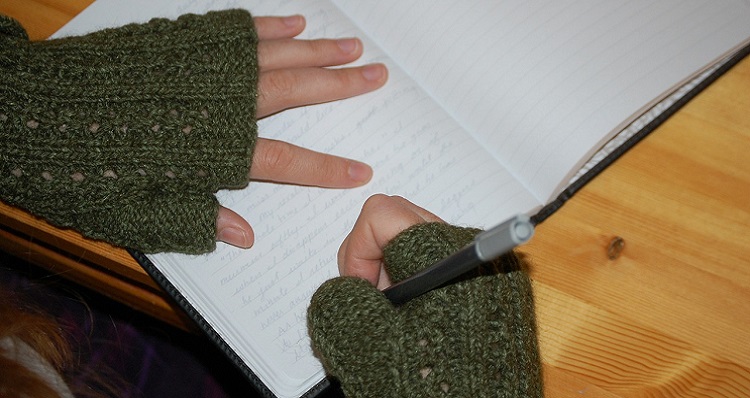
Bolivia is one of the cheapest places in Latin America to study Spanish . You can expect to pay $4 an hour for group classes or $7 an hour for a private tutor. Teachers are of excellent quality, with a number of instructors also speaking English, making lessons a little less daunting. Most Spanish Schools offer extra-curricular activities (cooking classes, sporting activities, etc.) to help you improve your Spanish and get to know other travelers. These activities are often free or, in the case of cooking classes, have a minimal cost (e.g. $2) just to cover the cost of ingredients.
There are many Spanish schools to be found in Bolivia, and whilst all offer similar experiences for similar prices, they do vary in quality. From personal experience, we can highly recommend studying in the beautiful city of Sucre at either Me Gusta Spanish School or Continental Spanish School.
Communication

Bolivia is WiFi friendly and growing more so every day. Many cafes and hostels have WiFi, and while not boasting the fastest speeds in the word, it does the job for those looking to get some work done or even Skype home.
- Internet cafe: $1 per hour
- Black and White Photocopying: $0.05 per copy
- Printing from the computer: $0.15 per copy
- Tigo Sim Card: $1.50
More on Communication:
- Internet Speeds in Sucre
- Buying a Sim Card in Sucre
- Best Cafes in Sucre for Digital Nomads
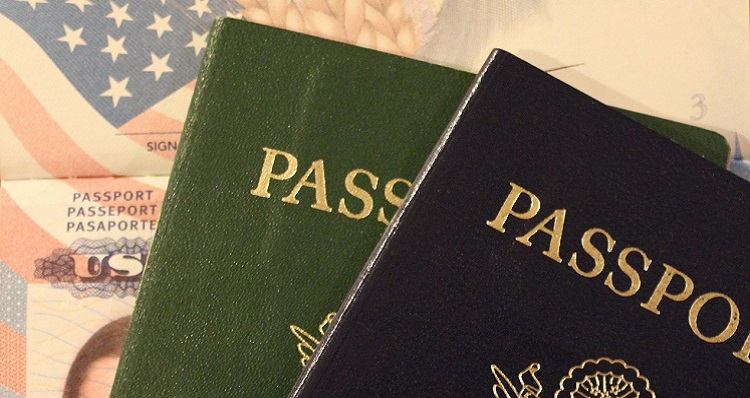
Fortunately, the majority of tourists entering Bolivia do not require a visa. Some travelers however, depending on which group they fall into, will require a consular tourist visa in order to enter the country.
To find out what the requirements are for your country, check out our post on Understanding Entry Requirements For Bolivia.
More on Visas:
- Extending Your Bolivian Tourist Visa In Sucre
- Applying For A 60-Day Student Visa in Sucre
- The 1 Year Temporary Residency Visa
- Staying Longer in Bolivia: Objeto Determinado Visa
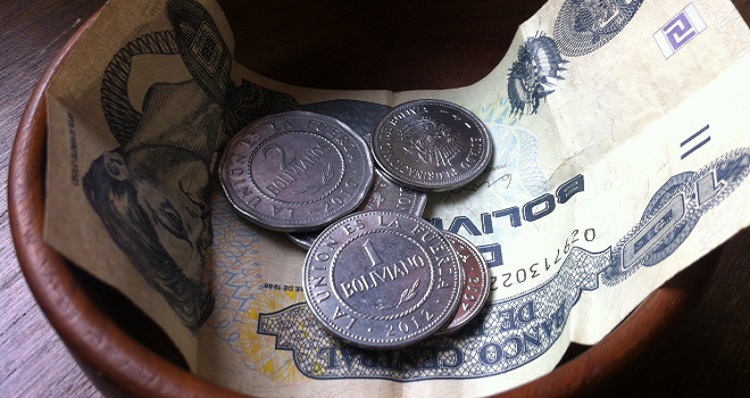
Service charges are rarely added to bills in Bolivia’s restaurants and bars. While tips are not usually expected and there is no customary tipping amount, the wages of the restaurant staff can be low and tips are definitely appreciated. If you are happy with the service, a tip of around 10-15% is appropriate. Small change is often in short supply in Bolivia, particularly smaller establishments, so leaving any coins you are given in your change will also be appreciated.
If you’ve been given a good service on a tour, you may like to consider tipping your guide and/or driver around $1 per hour, or around $7 per day.
More on Tipping:
- Tipping in Bolivia
Conscious Spending
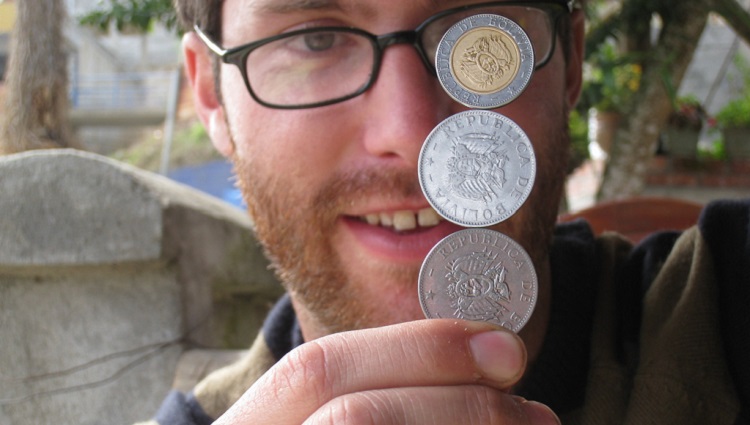
Photo Credit: Joãokẽdal
As you can see, Bolivia is a backpackers dream in terms of value for money. However, it should be noted that Bolivia is still a developing country where many locals struggle to make $300 a month.
Bolivia’s growing popularity as a tourist destination and economic growth as a whole is definitely seeing prices beginning to rise. As a result, many of the country’s low income earners (of which there are many) are struggling to meet their day to day expenses.
Our dilemma as travelers has always been – do we visit a country like Bolivia and risk exacerbating the economic inequalities, or do we keep our money for richer economies and deny Bolivia the opportunity to catch up?
One way for travelers to minimize their economic impact (or at least have the most beneficial impact) would be to choose establishments (restaurants, hostels, etc) which put a percentage of their profits into social projects to help the most needy.
Another area where travelers can be mindful of spending is at local markets. Although bargaining is expected and often part of the experience, be aware that what is considered loose change to you could make a world of difference to the seller.
If you’re looking to leave a positive impact during your travels in Bolivia, conscious spending is an effective way to make a difference.
How do you save money when traveling? Share in the comments below:
Submit a Comment Cancel reply
Your email address will not be published. Required fields are marked *
YOU MAY LIKE
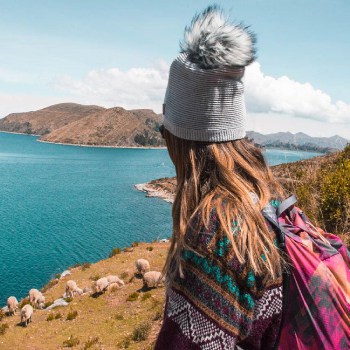
Discover The Real Bolivia
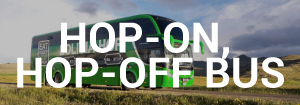
Popular Posts
- A Guide To Bolivia’s Most Mouthwatering Foods
- Weather and Climate in Bolivia
- 12 Unmissable Tourist Attractions In Bolivia
- 10 Bolivian Fun Facts That Will Blow Your Mind
- Carnival in Oruro (Carnaval de Oruro)
Get ready to discover
BOLIVIA in 2021
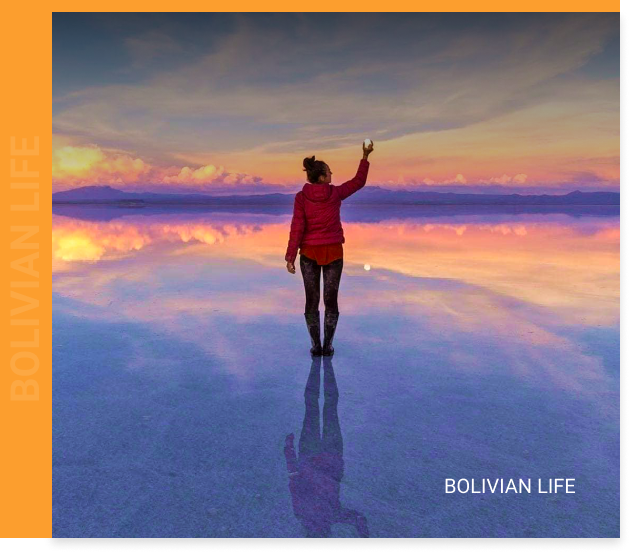
Sign up to stay up to date with all tips and recommendations for 2021 travel
A Budget Traveler’s Guide to Bolivia

As South America’s cheapest country, sticking to a budget in Bolivia must be pretty easy, right? Not necessarily. While bargains abound at every turn, those who aren’t in the know will find themselves paying too much, too often. But don’t despair, our budget traveler’s guide to Bolivia will help keep the bank balance in check while exploring this intriguing country.
Local digs usually work out cheaper than gringo orientated hostels, especially when traveling in a group. As an added bonus, there’s no need to share a room with random backpackers. Keep a look out for signs saying alojamiento, residencial or hostal . These cheap local options offer great bang for your buck. A word of warning though, examine the room and bathroom before paying because some of the cheapest places can get seriously nasty.

Learn the lingo

Eat like a local
Traditional Bolivian food is much cheaper than anything international. Keep an eye out for almuerzo (set lunch) which includes soup, a main course and dessert for as little as BOB10 (less than USD$1.50). Street stalls are ubiquitous and offer breakfast and dinner options for next to nothing. Self-catering is not really worth the time as it ends up just as expensive once everything is factored in, so get out there and enjoy the local flavors.

Become a Culture Tripper!
Sign up to our newsletter to save up to 500$ on our unique trips..
See privacy policy .

Avoid taking tours
Can the place you want to visit be reached on local transport? If so, that’s going to be cheaper than taking a tour. Sometimes, in places like the Salar de Uyuni for example, tours are unavoidable, so it’s logical to join up with a group. But, more often than not, it’s quite possible to go it alone. Bear in mind that a decent grasp of Spanish is useful when solo-navigating complex public transportation systems.
Ask for a discount
It’s quite normal for vendors in Bolivia to adjust their prices depending on what they think the customer can afford. This practice, known as mira de cara (looking at the face), even happens among Bolivians. It’s a logical assumption that a foreign tourist is reasonably wealthy, so it doesn’t hurt to politely ask for a discount in places like hotels, markets and travel agencies. But don’t get carried away. The bargaining culture in Bolivia isn’t as intense as in India, for example.

Take the night bus
Traveling overnight is an age-old backpackers’ trick to save on a night’s accommodation. There are plenty of overnight buses crisscrossing throughout the country, so this option is certainly valid in Bolivia. Be absolutely certain to bring warm clothes if traveling through the highlands, though, because nighttime temperatures drop well below freezing.

KEEN TO EXPLORE THE WORLD?
Connect with like-minded people on our premium trips curated by local insiders and with care for the world
Since you are here, we would like to share our vision for the future of travel - and the direction Culture Trip is moving in.
Culture Trip launched in 2011 with a simple yet passionate mission: to inspire people to go beyond their boundaries and experience what makes a place, its people and its culture special and meaningful — and this is still in our DNA today. We are proud that, for more than a decade, millions like you have trusted our award-winning recommendations by people who deeply understand what makes certain places and communities so special.
Increasingly we believe the world needs more meaningful, real-life connections between curious travellers keen to explore the world in a more responsible way. That is why we have intensively curated a collection of premium small-group trips as an invitation to meet and connect with new, like-minded people for once-in-a-lifetime experiences in three categories: Culture Trips, Rail Trips and Private Trips. Our Trips are suitable for both solo travelers, couples and friends who want to explore the world together.
Culture Trips are deeply immersive 5 to 16 days itineraries, that combine authentic local experiences, exciting activities and 4-5* accommodation to look forward to at the end of each day. Our Rail Trips are our most planet-friendly itineraries that invite you to take the scenic route, relax whilst getting under the skin of a destination. Our Private Trips are fully tailored itineraries, curated by our Travel Experts specifically for you, your friends or your family.
We know that many of you worry about the environmental impact of travel and are looking for ways of expanding horizons in ways that do minimal harm - and may even bring benefits. We are committed to go as far as possible in curating our trips with care for the planet. That is why all of our trips are flightless in destination, fully carbon offset - and we have ambitious plans to be net zero in the very near future.

Places to Stay
The best hotels to book in bolivia for every traveler.

Guides & Tips
7 ways to have a truly immersive experience in bolivia.


How Bolivians Celebrate Christmas

Stay Curious: Experience Bolivia From Your Living Room

Food & Drink
Snacks you must try in bolivia.

See & Do
These are bolivia's most beautiful hikes.

8 Traditional Bolivian Breakfasts You Must Try

Climbing Around La Paz, Bolivia: the Best Mountains To Summit

Everything You Need to Know About Visiting Isla del Sol, Bolivia

Takesi and El Choro: The Best Multi-Day Treks Near La Paz, Bolivia

How These Bolivian Ranches Are Helping to Conserve Endangered Jaguars

This Art Project Empowers Victims of Domestic Violence
- Post ID: 1064858
- Sponsored? No
- View Payload
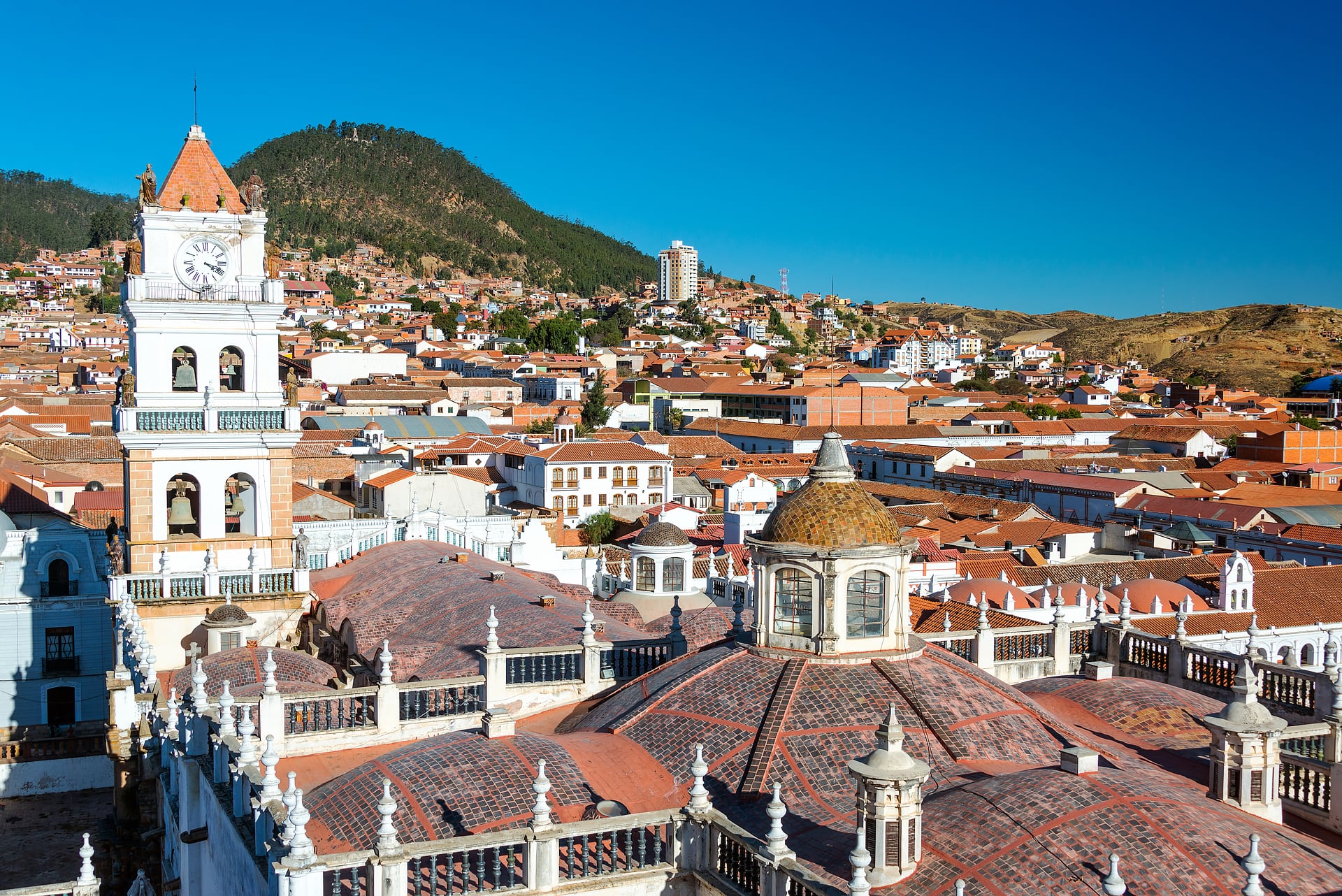
Prices and Cost of Living in Bolivia
- South and Central America
Travel Budget Calculator
Calculate how much money you will spend on your vacation in Bolivia. Sample budget for each type of traveler - food, transportation, sightseeing and accommodation expenses.
Transportation
Sightseeing
Accommodation
Backpacker's budget
Traveling with a backpack
from 23.46 USD to 27.04 USD
Daily budget for one person, assuming that two people travel in a standard close to 1 star (hostels, public transport). When traveling alone, the cost may be slightly higher (hotel room) or the same (dormitory accommodation).
Average daily expenses were calculated on the basis of the prices of accommodation, food (restaurants and shops), transport (public transport and taxis) and some tourist attractions. Values may vary depending on the city, tourist season, or during major religious and public events. Update 14 April 2024.
How much do you spend per day on travel and sightseeing?
Traveling and sightseeing in a cheap way (hostels, cheap food), you can fit into a budget from 162 BOB (23.46 USD) to 187 BOB (27.04 USD). On the other hand, a slightly higher standard (3-star hotel, meals in restaurants) you should expect to spend from 453 BOB (65.49 USD) to 586 BOB (84.7 USD). You should additionally take into account that if you are traveling alone, the cost may be slightly higher.
Food Prices - Calculate the Cost of Living
The calculator allows you to quickly and easily calculate how much you will spend on average to buy food at grocery stores in Bolivia. Plan your daily, weekly and monthly food expenses.
Select the appropriate number of days to see how much you will spend on food during that period. Values given for one person.
Cheapest products
Here's how much you will spend in 1 day .
from 3.78 USD to 6.51 USD
Mid-range products
from 4.93 USD to 9.65 USD
Average values for capital or largest city. Purchase of food products in local stores and supermarkets corresponding to daily meals of 2,200 to 2,400 kcal was taken into account. Update 14 April 2024.
How much do you have to spend on groceries per day in Bolivia?
When shopping for groceries in local stores and markets, the average daily cost of food expenses will range from 26.15 BOB (3.78 USD) to 45.04 BOB (6.51 USD) when buying the cheapest products. However, if you choose slightly more expensive products, you can expect to pay from 34.11 BOB (4.93 USD) to 66.77 BOB (9.65 USD) per day. These figures are based on daily meals consisting of approximately 2200-2400 kcal and may vary slightly depending on the city.
Budget and shopping basket update: 14 April 2024
Estimated budget and daily food costs are always given per person and are only a suggestion to help you plan your total travel costs.
Budget was calculated on the basis of average prices of accommodation in each category (hotels and hostels), food costs (restaurants and grocery shopping), transport prices and some tourist attractions.
BACKPACKER'S BUDGET • accommodation in a hostel or cheap hotel, • travel by public transport, • dining in cheap local restaurants or buying food in local stores, • small number of paid tourist attractions, • two people travel (when traveling alone, prices may be higher, but only if we use a hotel room instead of a dormitory).
TOURIST'S BUDGET • accommodation in a 3 star hotel (with a small number of available facilities, average prices of 3* and 4* hotels), • traveling by taxis, • catering in middle-class restaurants and buying food in grocery stores, • average number of paid tourist attractions, • two people travel (they share costs of accommodation and transport).
FOOD EXPENSES • daily meals containing 2200 to 2400 kcal (applies to both price variants), • shopping for food in local stores or supermarkets (no meals in restaurants), • value per person & for the capital or largest city.
Prices in Bolivia
Below you will find a list of prices for products and services in Bolivia, which will help you determine what expenses you should prepare for when going on vacation in this country. City: La Paz.
Grocery Store Prices
Food and beverage prices in bolivia.
Popular food products found on store shelves in Bolivia include bananas, rice, bread, onions, eggs, tomatoes, cheese, beef and potatoes, among others. Prices for a kilo of these products range from 5.82 BOB (0.84 USD) for a kilo of onions to 44.51 BOB (6.43 USD) for a kilo of beef. The price of white rice is 7.41 BOB (1.07 USD) per kilo, while a loaf of fresh white bread costs 7.54 BOB (1.09 USD) per half kilo. Bananas cost 9 BOB (1.3 USD) per kilo, while apples cost 20.17 BOB (2.92 USD) per kilo.
Water, available in 1.5-liter bottles, costs 6.74 BOB (0.97 USD). Dairy prices in Bolivia, on the other hand, are as follows: 1 liter of milk costs about 6.54 BOB (0.95 USD), and 1 kilogram of locally produced cheese is an expense of 38.7 BOB (5.59 USD). Chicken filet, which is a common ingredient in meat dishes, costs in the range of 27.67 BOB (4 USD) per kilo. Eggs (12 pieces per package) are an expense of about 10.78 BOB (1.56 USD), and the average price of tomatoes is 7.02 BOB (1.01 USD) per kilo.
Restaurant Prices
What is the typical cost for an affordable meal.
Prices in restaurants in Bolivia vary and depend on several factors, such as the type of restaurant, location and time of day. For instance, a Cappuccino typically costs around 17.71 BOB (2.56 USD), while a 0.33-liter bottle of Coca-Cola or Pepsi is priced at approximately 6.81 BOB (0.98 USD). At a fast-food restaurant such as McDonald's, you can expect to pay 45 BOB (6.5 USD) for a meal, whereas a meal for two at a mid-range restaurant could cost around 140 BOB (20.23 USD). Budget-friendly dining options are also available, with some restaurants offering meals for as little as 20 BOB (2.89 USD).
Public Transportation Prices
How much does transportation cost in bolivia.
The average expense of a one-way trip using local transportation stands at approximately 2.8 BOB (0.4 USD), while a monthly ticket for public transportation has an average cost of roughly 215 BOB (31.08 USD). Choosing to travel by taxi would entail an initial fee of 10 BOB (1.45 USD), along with a per-kilometer charge of 12 BOB (1.73 USD).
Fuel Prices
Fuel prices in bolivia.
Average fuel prices in Bolivia are 3.75 BOB (0.54 USD) per liter of gasoline and 3.73 BOB (0.54 USD) per liter of diesel.
Entertainment Prices
Apartment rental prices, how much does it cost to rent an apartment in bolivia.
The cost of renting or buying an apartment in Bolivia varies according to its location. On average, renting an apartment with one bedroom and a living room outside the city center costs approximately 1547 BOB (224 USD) per month, while the same type of apartment in the city center can cost around 1905 BOB (275 USD) per month. In comparison, the purchase price of an apartment in the city center is 8871 BOB (1282 USD) per square meter.
Apartment Buying Prices
Average salary, hotel prices in bolivia.
A comprehensive list of the current prices of accommodations in various cities, ranging from budget-friendly hotels to high-end luxurious stays.
Accommodation prices based on data from 36 hotels in La Paz .
• Prices for products and services in La Paz . Prices may vary from town to town. • Updates: oldest data 03/2023, latest data 02/2024. • Prices were calculated based on several sources including Expedia.com, Booking.com, local supermarket websites, own sources, submissions from users. We do not guarantee their accuracy, however, we try, to keep them high. • If you have noticed an error, please report it .
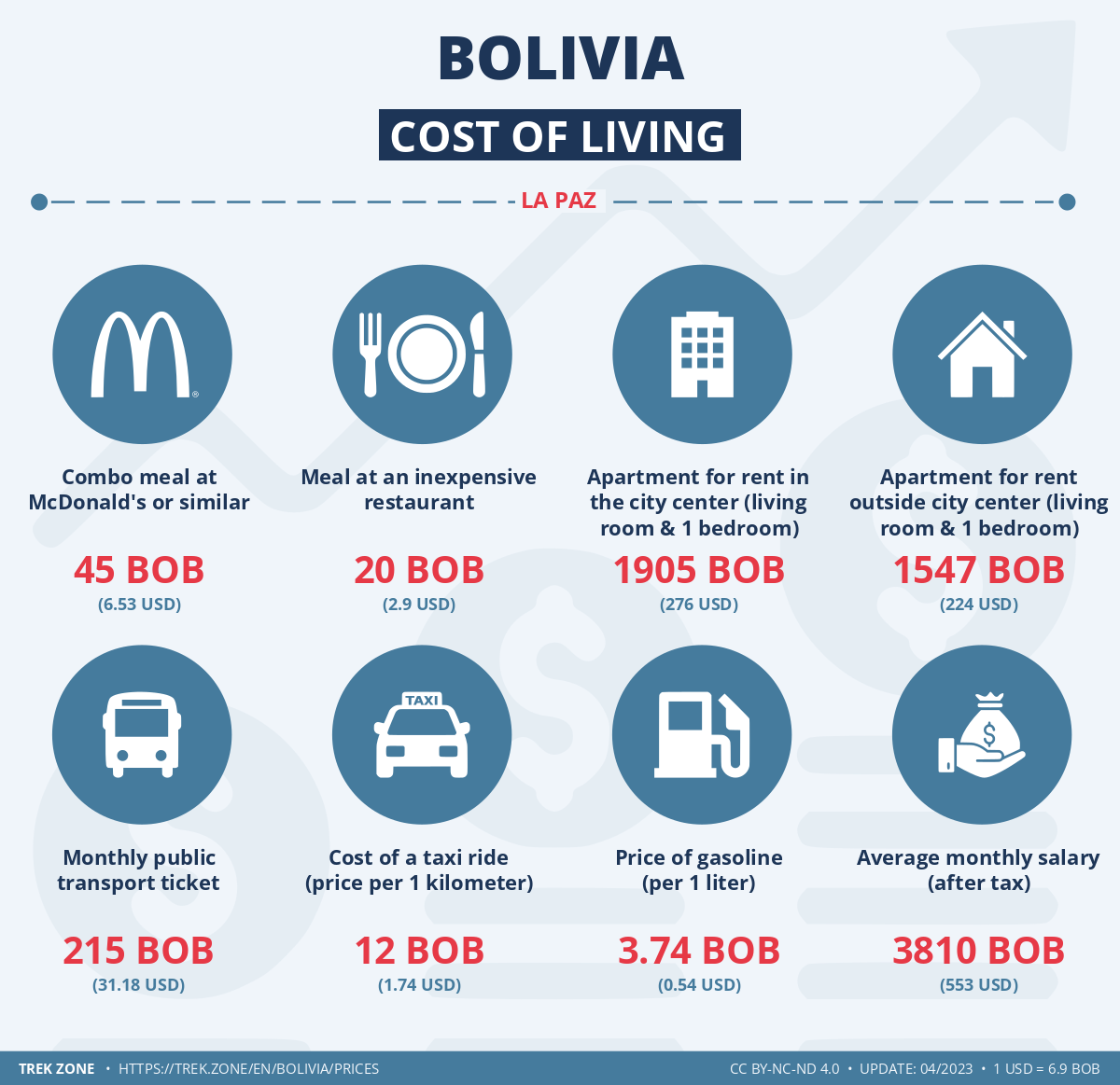
Winter is here! Check out the winter wonderlands at these 5 amazing winter destinations in Montana
- Travel Destinations
- Central & South America
What Things Cost In Bolivia
Published: September 20, 2023
Modified: January 3, 2024
by Fanny Messick
- Budget Travel
- Travel Tips
Introduction
Welcome to Bolivia, a landlocked country located in the heart of South America. With its rich cultural heritage, stunning landscapes, and affordable cost of living, Bolivia is becoming an increasingly popular destination for travelers and expats alike. In this article, we will explore the cost of living in Bolivia and provide an overview of essential expenses to help you plan your budget accordingly.
One of the main attractions of Bolivia is its affordability, making it an ideal destination for budget-conscious individuals. Whether you’re planning a short visit or considering a longer-term stay, understanding the cost of living can help you make informed decisions regarding accommodation, food, transportation, and leisure activities.
It’s important to note that Bolivia’s cost of living can vary depending on the region. Major cities like La Paz and Santa Cruz tend to have higher prices compared to smaller towns or rural areas. Additionally, personal preferences and lifestyle choices will also impact your overall expenses.
Now, let’s delve into the various aspects of daily life in Bolivia and find out what things cost in this vibrant and captivating country.
Food and Dining
Food in Bolivia embraces a blend of indigenous, Spanish, and international influences, offering a diverse culinary experience. Whether you’re a fan of traditional Bolivian dishes or crave international flavors, there are plenty of options available to suit all tastes and budgets.
Local markets are a great place to start when it comes to affordable food in Bolivia. You can find a wide range of fresh fruits, vegetables, and local ingredients at reasonable prices. A typical meal at a market stall or small eatery, known as a “comedor,” can cost around $2 to $5, including a main dish, rice, and salad.
If you prefer dining out at restaurants, the prices can vary depending on the establishment and location. In major cities, a mid-range restaurant meal for one person can range from $5 to $15. High-end restaurants and international cuisine may cost closer to $20 or more per person.
In terms of groceries, buying from supermarkets is convenient but can be more expensive compared to local markets. However, it offers a wider variety of imported and branded products. On average, a weekly grocery bill for a single person can range from $30 to $50, depending on your dietary choices and lifestyle.
In terms of beverages, Bolivia is known for its tasty and refreshing drinks. Traditional drinks like “api” (a warm purple corn beverage) and “mate de coca” (coca leaf tea) are popular and inexpensive. If you enjoy alcoholic beverages, a local beer can cost around $1 to $2 at a bar or restaurant, while spirits and imported drinks will be pricier.
Overall, Bolivia offers a range of dining options to suit different budgets. Whether you choose to explore local eateries or indulge in international cuisines, there are plenty of affordable and delicious choices to satisfy your appetite.
Transportation
Navigating through Bolivia is relatively easy thanks to its comprehensive transportation network. From buses and taxis to domestic flights, there are various options available to help you get around the country.
One of the most affordable ways to travel within Bolivia is by taking local buses. These buses are widely available and connect major cities and towns. The fares are generally inexpensive, with short journeys costing around $1 to $2, and longer trips costing up to $10, depending on the distance.
Taxis are another popular mode of transportation in Bolivia. In cities like La Paz and Santa Cruz, you can find a plentiful supply of taxis, both metered and unmetered. Metered taxis are generally cheaper and more reliable, with fares starting around $1.50 for short distances. Negotiating the price beforehand is common with unmetered taxis.
For a faster way to travel between cities, domestic flights are available. Airlines like Boliviana de Aviacion (BOA) and Amaszonas offer regular flights to various destinations across Bolivia. The cost of domestic flights can vary depending on the distance and time of booking, ranging from $50 to $200 or more.
It’s worth keeping in mind that Bolivia’s terrain can be challenging, especially in rural areas and mountainous regions. Some regions may not have well-maintained roads, and the quality of transportation may vary. Therefore, it’s advisable to research and plan ahead when traveling to remote areas.
For those who prefer to drive, renting a car is an option. Car rental prices vary depending on the type of vehicle and rental duration, with rates averaging around $30 to $60 per day. However, it’s essential to consider factors such as road conditions, traffic rules, and parking availability before opting for a rental car.
Overall, Bolivia offers a range of transportation options to suit different needs and budgets. Whether you choose to explore the country by bus, taxi, or domestic flight, getting around Bolivia is relatively affordable and convenient.
Accommodation
When it comes to finding accommodation in Bolivia, there are options to fit various budgets and preferences. From budget-friendly hostels to luxurious hotels, you can find suitable places to stay across the country.
In major cities like La Paz, Santa Cruz, and Cochabamba, you’ll find a range of accommodation choices, including budget hostels, mid-range hotels, and upscale resorts. Budget hostels are popular among backpackers and budget travelers, with prices ranging from $5 to $15 per night for a dormitory-style room. Private rooms in hostels or budget hotels can cost around $20 to $30 per night.
If you prefer more comfort and amenities, mid-range hotels are available at affordable prices. The rates for these hotels can range from $40 to $80 per night, depending on the location and facilities offered. These hotels often include breakfast and may have additional amenities such as Wi-Fi, air conditioning, and onsite restaurants.
For those seeking luxury and indulgence, Bolivia also has several high-end hotels and resorts. These establishments offer top-notch services, spacious rooms, and upscale amenities. The prices for luxury accommodation can range from $100 to $300 or more per night.
In addition to traditional hotels and hostels, alternative options like vacation rentals and guesthouses are gaining popularity in Bolivia. Platforms like Airbnb offer a variety of accommodation choices, including apartments, houses, and private rooms. The prices for vacation rentals vary depending on factors such as location, size, and amenities.
It’s important to consider the location when choosing accommodation in Bolivia. Prices in major cities are generally higher compared to smaller towns and rural areas. Additionally, it’s advisable to book your accommodation in advance, especially during peak tourist seasons, to secure the best rates and availability.
Overall, Bolivia provides a range of accommodation options to suit different budgets and preferences. Whether you’re looking for a budget-friendly hostel, a comfortable hotel, or a luxurious resort, you can find suitable places to stay during your time in Bolivia.
Entertainment and Activities
When it comes to entertainment and activities, Bolivia offers a wide range of options to suit different interests and budgets. Whether you’re a nature enthusiast, history buff, or adventure seeker, there’s something for everyone in this diverse country.
One of Bolivia’s biggest draws is its breathtaking natural landscapes. From the towering peaks of the Andes to the vast expanse of the Amazon rainforest, there are numerous opportunities for outdoor activities. Hiking, trekking, and climbing are popular pursuits for those seeking adventure, and prices for guided tours or equipment rentals can range from $20 to $100 or more, depending on the complexity and duration of the activity.
Bolivia is also home to several mesmerizing national parks and natural landmarks. Entrance fees to these sites can vary, but generally range from $5 to $20 per person. Popular destinations like Salar de Uyuni, Lake Titicaca, and Madidi National Park offer breathtaking views and unique experiences that are well worth the cost.
If you’re interested in cultural activities, Bolivia has a rich heritage with a vibrant arts and music scene. Museums and art galleries can be found in major cities, and admission fees are typically affordable, ranging from $2 to $10 per person. Attending traditional music and dance performances is also a great way to immerse yourself in Bolivian culture, with ticket prices averaging around $10 to $20.
For those seeking nightlife and entertainment, Bolivia has a range of bars, clubs, and live music venues. Prices for drinks at bars and clubs vary depending on the location and establishment. In major cities, a beer can cost anywhere from $1 to $5, while cocktails and imported beverages may be pricier.
When it comes to watching movies, Bolivia has various cinemas that screen both domestic and international films. Ticket prices are generally affordable, ranging from $3 to $8, depending on the location and type of movie.
From exploring the natural wonders to immersing yourself in the rich cultural heritage, Bolivia offers a diverse range of entertainment and activities to suit every interest and budget.
Healthcare and Medication
When it comes to healthcare in Bolivia, the country offers a mix of public and private healthcare facilities. While the quality of healthcare can vary, there are options available for both residents and visitors in need of medical services.
The public healthcare system in Bolivia is known as the Sistema Único de Salud (SUS). It provides free or low-cost healthcare services to Bolivian citizens and residents. However, it’s important to note that public hospitals and clinics may face challenges such as long wait times and limited resources.
For those who prefer private healthcare, Bolivia has a number of clinics and hospitals that provide quality medical services. Private healthcare facilities are often better equipped and offer a higher standard of care. However, it’s important to have health insurance or be prepared to pay out-of-pocket for private medical services.
When it comes to medication, Bolivia has pharmacies where you can purchase both over-the-counter and prescription drugs. It’s advisable to bring any necessary prescription medications with you from your home country and consult with a healthcare professional before you travel.
Medication costs can vary depending on the type of drug and the pharmacy. Generally, generic medications tend to be more affordable compared to brand-name drugs. It’s important to note that some medications may require a prescription from a Bolivian doctor.
It’s always recommended to have adequate travel insurance that covers healthcare expenses in case of emergencies. This will ensure you have access to necessary medical services and medications without incurring significant costs.
If you require specialized medical treatments or procedures, it’s advisable to research and consult with healthcare providers in Bolivia beforehand to ensure you have access to the necessary services.
In summary, Bolivia provides both public and private healthcare options for residents and visitors. It’s important to have appropriate insurance coverage and be knowledgeable about healthcare facilities and pharmacies in the area you are visiting.
Utilities and Bills
When living or staying in Bolivia, it’s important to budget for monthly utility expenses. These include electricity, water, internet, and other common services.
Electricity prices in Bolivia can vary depending on the region and the type of property you reside in. In major cities, the average monthly electricity bill for a small apartment can range from $30 to $60, depending on usage. In rural areas, the costs may be lower due to lower consumption rates.
Water bills in Bolivia are typically calculated based on usage. The average monthly water bill for a small apartment can range from $10 to $30. It’s important to note that in some rural areas, access to clean water may be limited, and additional precautions may need to be taken.
Internet service is widely available in Bolivia, especially in major cities. The cost of internet plans can vary depending on the provider and speed. Basic internet packages start at around $20 per month. Higher-speed and unlimited data packages are also available at higher prices.
Another utility expense to consider is gas. Many households in Bolivia use gas for cooking and heating, and the monthly cost will depend on usage. Gas cylinders can range from $10 to $30, depending on the size and provider.
When it comes to mobile phone plans, there are several providers in Bolivia offering prepaid and postpaid options. The cost of mobile phone plans will depend on the provider, package, and services included. Basic plans can start at around $10 per month.
In addition to these basic utilities, it’s important to budget for other bills such as garbage collection, which can cost around $5 to $10 per month. It’s also worth considering additional expenses for services like cable television, which can range from $20 to $50 per month.
It’s advisable to inquire about utility costs with the landlord or previous tenants if you are renting a property, as these costs can vary depending on the location and type of accommodation.
It’s essential to budget for monthly utility expenses in Bolivia to ensure a smooth and comfortable living experience. By including these costs in your overall budget, you can plan and manage your finances effectively during your stay in the country.
Education and Tuition Fees
Bolivia offers a variety of educational opportunities for residents and expatriates. From preschool to university, there are both public and private institutions available. Understanding the costs associated with education can help you plan your finances accordingly.
Public education in Bolivia is free and compulsory for children between the ages of 6 and 14. Public schools are funded by the government and provide education at no cost. However, it’s important to note that public schools may have limited resources and facilities.
Private schools are also available in Bolivia, offering a higher standard of education and more extensive facilities. Tuition fees for private schools can vary depending on the institution and the level of education. On average, private school fees can range from $100 to $500 per month.
For those seeking higher education, Bolivia has universities and technical institutes that offer a range of programs. Tuition fees for higher education vary depending on the university, program, and level of study. On average, tuition fees for undergraduate programs in Bolivia can range from $500 to $2,500 per year.
It’s important to note that international students may have different tuition fee structures compared to Bolivian residents. International students should research specific institutions and programs for accurate information regarding tuition fees.
In addition to tuition fees, it’s important to consider other educational expenses such as textbooks, school supplies, uniforms, and extracurricular activities. These additional costs can vary depending on the school and level of education.
Scholarship opportunities and financial aid may be available for both domestic and international students in Bolivia. It’s advisable to research and inquire about scholarships and grants provided by the government, educational institutions, or international organizations to alleviate educational costs.
Overall, the cost of education in Bolivia can vary depending on the level of education and the type of institution. By considering tuition fees and additional expenses, you can effectively plan for educational costs and ensure access to quality education for yourself or your family members.
Shopping and Groceries
When it comes to shopping and groceries in Bolivia, there are various options available to cater to different needs and budgets. From local markets to supermarkets and shopping malls, you can find a wide range of products and prices to suit your preferences.
Local markets are a popular choice for grocery shopping in Bolivia. Here, you can find fresh produce, meat, dairy products, and other essentials at affordable prices. Bargaining is common in markets, so don’t hesitate to negotiate for a better price. Additionally, shopping at local markets not only supports local farmers and vendors but also provides an opportunity to immerse yourself in the vibrant culture of Bolivia.
Supermarkets are also widely available in major cities and towns throughout the country. These offer a convenient way to buy groceries and other household items. Supermarkets generally have a wider selection of imported and branded products compared to local markets. While supermarket prices may be slightly higher, they provide a reliable source for all your grocery needs.
The cost of groceries in Bolivia can vary depending on factors such as location and brand. On average, a weekly grocery bill for a single person can range from $30 to $50, depending on your dietary preferences and consumption habits. Basic food items like rice, fruits, vegetables, and local products are usually more affordable compared to imported goods.
When it comes to clothing, Bolivia offers various shopping options. From small boutiques to department stores and shopping malls, you can find clothing items to fit different styles and budgets. The prices of clothing can vary depending on the brand, quality, and location. It’s possible to find affordable clothing options at local markets or discount stores, while high-end brands may be pricier.
It’s important to note that sales tax is applied to most goods and services in Bolivia. The standard tax rate is 13%, which is included in the displayed prices. Therefore, the final amount you pay at the cashier will include the sales tax.
Overall, Bolivia offers a range of shopping options for groceries and other products. Whether you choose to explore local markets for fresh produce or shop at supermarkets and malls for convenience, there are choices available to suit different needs and budgets.
Miscellaneous Expenses
In addition to the essential expenses mentioned earlier, there are various miscellaneous expenses to consider when living or staying in Bolivia. These expenses can vary depending on personal preferences and lifestyle choices.
One important area to consider is personal hygiene and toiletries. The cost of items like shampoo, soap, toothpaste, and other personal care products can vary depending on the brand and where you purchase them. It’s advisable to budget around $20 to $50 per month for personal care items.
Transportation expenses beyond daily commuting should also be taken into account. If you plan on traveling around the country, consider the costs of bus tickets, domestic flights, or renting a car. These expenses can vary significantly depending on your destinations and travel preferences.
Leisure activities and entertainment expenses can vary depending on your interests. Whether you enjoy going to movies, visiting museums, or participating in outdoor activities, set aside a portion of your budget for these experiences. Prices for these activities can range from a few dollars to tens of dollars, depending on the nature of the activity and any additional costs involved.
If you’re an expatriate or planning to stay in Bolivia for an extended period, it may be necessary to factor in visa fees and immigration expenses. The costs for obtaining a visa and fulfilling visa requirements can vary depending on your nationality and visa type. Research the specific requirements and associated fees to plan accordingly.
Maintaining a social life often involves occasional dining out and socializing with friends and family. Consider allocating a portion of your budget for meals at restaurants, drinks at bars, and other social activities. These costs can vary depending on the location and your preferences.
Another miscellaneous expense to consider is insurance coverage. It’s essential to have health insurance and consider other types of coverage such as travel insurance or property insurance, depending on your circumstances and needs. Research different insurance providers to find the most suitable coverage for your requirements.
It’s important to reassess and adjust your budget regularly to accommodate unexpected expenses that may arise. Having a buffer for miscellaneous expenses ensures that you have the flexibility to comfortably manage any unforeseen costs.
By accounting for miscellaneous expenses in your budget, you can have a more accurate understanding of your overall financial commitments while living or staying in Bolivia.
Bolivia offers a unique and captivating experience for both travelers and expats. With its affordable cost of living, diverse cultural heritage, and stunning natural landscapes, Bolivia has become an increasingly popular destination in South America.
Understanding the cost of living in Bolivia is crucial for effective financial planning. From food and dining to transportation, accommodation, and miscellaneous expenses, there are various factors to consider when budgeting for your time in the country.
Food choices in Bolivia range from the vibrant and affordable local markets to restaurants offering traditional and international cuisines. Similarly, transportation options, including buses, taxis, and domestic flights, allow for convenient exploration of the country’s breathtaking landscapes and cultural sites.
Accommodation options in Bolivia cater to diverse budgets and preferences. From budget-friendly hostels to luxury resorts, there is something for everyone. Education costs vary depending on the level of study and institution, while healthcare services are available through both public and private facilities.
Other monthly expenses, such as utilities, groceries, entertainment, and miscellaneous items, should also be budgeted for. Consider personal preferences and lifestyle choices when determining these costs.
Ultimately, living or staying in Bolivia can be an enriching experience that offers a unique blend of affordability, cultural diversity, and natural beauty. Understanding and planning for the cost of living will ensure a smooth and enjoyable stay in this captivating country.
Whether you’re a traveler exploring the wonders of Bolivia or an expat making it your new home, embracing the vibrant culture and managing your finances wisely will allow you to make the most of your time in this remarkable country.

- Privacy Overview
- Strictly Necessary Cookies
This website uses cookies so that we can provide you with the best user experience possible. Cookie information is stored in your browser and performs functions such as recognising you when you return to our website and helping our team to understand which sections of the website you find most interesting and useful.
Strictly Necessary Cookie should be enabled at all times so that we can save your preferences for cookie settings.
If you disable this cookie, we will not be able to save your preferences. This means that every time you visit this website you will need to enable or disable cookies again.
Budget travel in Bolivia: How much do you need
By: Author Ruben Arribas
Posted on September 14, 2023
Categories Bolivia
Bolivia is a country in central South America, with a varied terrain spanning Andes Mountains, the Atacama Desert and Amazon Basin rainforest. Bolivia may well be rough round the edges, but it enchanted us in our visit nonetheless. It is a multi-ethnic country housing approximately 3 dozen different native groups so you can see how diverse their culture will be.
This post will be all about budget travel in Bolivia and how much do you need per day to travel and preferably enjoy Bolivia without breaking the bank. We aim to guide or help travelers or people who would like to visit and explore the amazing things that Bolivia can give them.
Read here Bolivia travel tips , best breakfast in Bolivia , how to get from La Paz airport to city center and Backpacking guide to Bolivia
Table of Contents
Is is safe/difficult to travel to Bolivia?
As a responsible traveler, it is a must to visit a doctor in your country to have vaccines . Routine vaccines like MMR vaccine, diphtheria-tetanus-pertussis vaccine, chickenpox vaccine, polio vaccine should be up to date before traveling. Bolivia’s rural areas lack proper sanitation so make sure to bring insect repellents.
Bolivians are calm and relaxed, but we recommend for you to be mindful and be careful when walking around at night. Personally, I found Bolivia a pretty safe country , one of the safest in South America.
BOOK YOUR TRAVEL INSURANCE
You can read Heymondo Vs Safetwing cheapest travel Insurance . You can get for $135 USD your Heymondo Travel Insurance with Heymondo discount code valid for 90 days. Read our full Heymondo Travel Insurance Review
You can get Safetywing Travel Insurance for Digital Nomads valid for 28 days Safetywing for $50 USD per month with kids until 10 years old included
Best time to visit Bolivia
The best time to visit Bolivia is during the months of May to October . This is because the dry weather brings sapphire skies and less travel disruptions.
Keep in mind that this period is also the peak season for tourism , where attractions are busier and prices go up. Though majority of the festivals fall from February to April, this is not the best time for tourist . Carnivals and Easter fall on this months resulting heavy traffic and closed attractions.
If you are up for adventure including trekking and hiking , the best months for you June to July . In this months, days are shorter but usually sunny , and the skies are crystal clear.
Click here to check the weather in Bolivia.
Visa in Bolivia
Bolivia’s visa policy has three groups- 1,2, and 3. Those countries that belong to Group 1 may enter Bolivia without visa . For Group 2 , these countries may have to secure a visa upon arrival . And for Group 3 , they must apply for further authorization from a Bolivian Embassy.
Some countries including Philippines, New Zealand and Australia are in Group 1. United States of America and China belong to Group 2. Click this to see which group your country belongs to.
Cash and ATM in Bolivia
Up until 1963, the currency of Bolivia is Boliviano , and then it was changed to Bolivian Peso . But in 1986, it was changed back to Bolivian Boliviano (BOB) because of the New Economy Policy.
More or less, 1 USD = 7 BOB . There are many currency exchange outlets all over the Bolivia. However, you might find it hard to exchange your own country’s currency to BOB so it’s better to have your currency exchanged to USD first.
There are a lot of ATMs in the country and it is always near banks . Always keep that in mind so you will not have a hard time finding where to withdraw your money. Click here to know the exact exchange rate.
Internet in Bolivia
Nearly every corner of Bolivia has a cyber cafe and wi-fi is now standard in most mid-range and top-end hotels. Among cities in Bolivia, the two biggest cities, La Paz , and Santa Cruz de la Sierra , are the ones with fastest connections and lowest prices for the Bolivian market.
and Bolivia sim card for tourist and best Bolivia eSim
You can find the cheapest Bolivia eSim with Airalo Bolivia eSim prepaid for $8 USD with 1 GB data valid for 7 days and $16 USD with 2 GB data valid for 15 days. For $23 USD with 3 GB data and $36 USD with 5 GB data. ( USING DISCOUNT CODE GAMINTRAVELER 10% ).
Rates run from B$4 to B$6 per hour . In remote areas, internet access is sometimes only possible via a cell phone signal. Consider buying a local chip/SIM with data especially if you are a tourist so you can have internet wherever you are in Bolivia. There is a small stores in the cities and also in small towns like Uyuni.
Food budget travel in Bolivia
Since Bolivia is relatively cheap, budget travelers will surely love to visit and explore Bolivia. If you’re a budget traveler and want the best deals, you can look for local food stalls or corner food shops that sells a meal for at least $2 to $3 it means 15-20 BOB . Most of the dishes are with meat and chicken, though.
So be prepared for that. As street food saltenas empanadas and bolivianas are served all over the country as cheap as half dollar. On an average, $10 a day is a good food budget travel in Bolivia. You can afford to go to local restaurants since is affordable.
Accommodation budget travel in Bolivia
One way to lessen your accommodation expenses is if you have to go to a certain place via bus or any transportation on a long-distance trip, it will be nice to hop on that ride at night so you can sleep while on the road. But if you plan to stay within the city, private hostel rooms will cost at least $10 to $15 a night.
The best value in the country are family-run hotels which are often called Hostals or Alojamientos . It may be a bit pricier than the usual hostel room for $50 and up but it will make you feel home and comfortable.
CLICK HERE TO BOOK YOUR ACCOMMODATION BEFORE YOUR TRIP WITH BOOKING .
Tours/Entrance fees in Bolivia
If you want to visit attractions and/or join trips and tours around Bolivia, there are expensive and cheap ones. Depending on where you want to go or what experience you are looking for, you can go on Salt Flat tour in 1 day for $20-25 to $90 if you decide to explore the salar for a few days.
Other museums has no charge, as well as the churches. A 2 day Maragua Crater Trek costs $65 per person while a tour of the Potosi Mines costs $14 per person.
Local transportation in Bolivia
Bus is the main mode of transportation in Bolivia. There are buses for longer trips on terminals and some that are for shorter trips. They follow set routes, with the route numbers or letters usually marked on a placard behind the windshield. Their buses also differ on the way the seats recline. Shorter bus routes in Bolivia are serviced by minibuses , referred to locally as “micros”.
These buses generally travel along a predetermined route, leaving at any time when full and stopping whenever a passenger wants to get on or off. Prices are regulated and all routes cost the same; approximately Bs 1 ($0.15 US) one way. Local transportation in Bolivia can be one of the cheapest that you can find around the world.
Prior to today’s expansive bus network, camiones (flatbed trucks) were often the only way for travelers to venture off the beaten track. Camiones generally cost about half the bus fare . You’ll need time and a strong constitution, as travel can be excruciatingly slow and rough, depending on the cargo and number of passengers. A major plus is the raw experience, including the best views of the countryside.
Different types of travelers would have different type of daily costs. But for budget travelers $20-25 or so a day in Bolivia is already living the life. It already consist your accommodation, food, and transportation expenses. If you can go to a free entrance museums and churches, then that’s a way to lessen your budget and allot it to either food or the budget the next day.
If you want to have full information about Bolivia, read our full travel guide on a budget. For more related budget travel guides in South America, read our budget travel in Colombia, Ecuador, Costa Rica and Panama .
About the Author : Ruben , co-founder of Gamintraveler.com since 2014, is a seasoned traveler from Spain who has explored over 100 countries since 2009. Known for his extensive travel adventures across South America, Europe, the US, Australia, New Zealand, Asia, and Africa, Ruben combines his passion for adventurous yet sustainable living with his love for cycling, highlighted by his remarkable 5-month bicycle journey from Spain to Norway. He currently resides in Spain, where he continues to share his travel experiences alongside his partner, Rachel, and their son, Han.
Best Bolivia Sim Card For Tourist And How To Buy A Prepaid Sim Card in Bolivia - Gamintraveler
Friday 28th of January 2022
[…] here how to get from La Paz airport to city center, budget travel in Bolivia, Bolivia travel tips and Bolivia backpacking […]
Best Chile Sim Card For Tourist And How To Buy A Prepaid Sim Card in Chile - Gamintraveler
Saturday 6th of November 2021
[…] are Movistar, Entel, Claro and WOM. If you are getting to Chile by bus from Argentina, Peru or Bolivia or you can also get your Chile tourist sim card in the Bus Station or around the city in kiosks […]
Best Argentina Sim Card For Tourist And How To Buy A Prepaid Sim Card in Argentina - Gamintraveler
Friday 15th of October 2021
[…] in Argentina are Claro, Movistar and Personal. If you are getting to Argentina by bus from Chile, Bolivia or Paraguay you can also get your Argentina tourist sim card in the Bus Station or around the city […]
40 Ecuador Travel Tips And Things To Know Before Visiting Ecuador - Gamintraveler
Friday 1st of October 2021
[…] thinking Central America and South America is cheap for traveling you are right. Ecuador, Peru and Bolivia are the cheapest in South America especially if we compare to Costa Rica and […]
Budget Travel in Ecuador: How much do you need - Gamintraveler
Tuesday 7th of September 2021
[…] breaking the bank, read our budget travel guide to the Philippines, Sri Lanka, Guatemala, Bolivia […]
The 17 best experiences Bolivia has to offer

Nov 12, 2023 • 15 min read
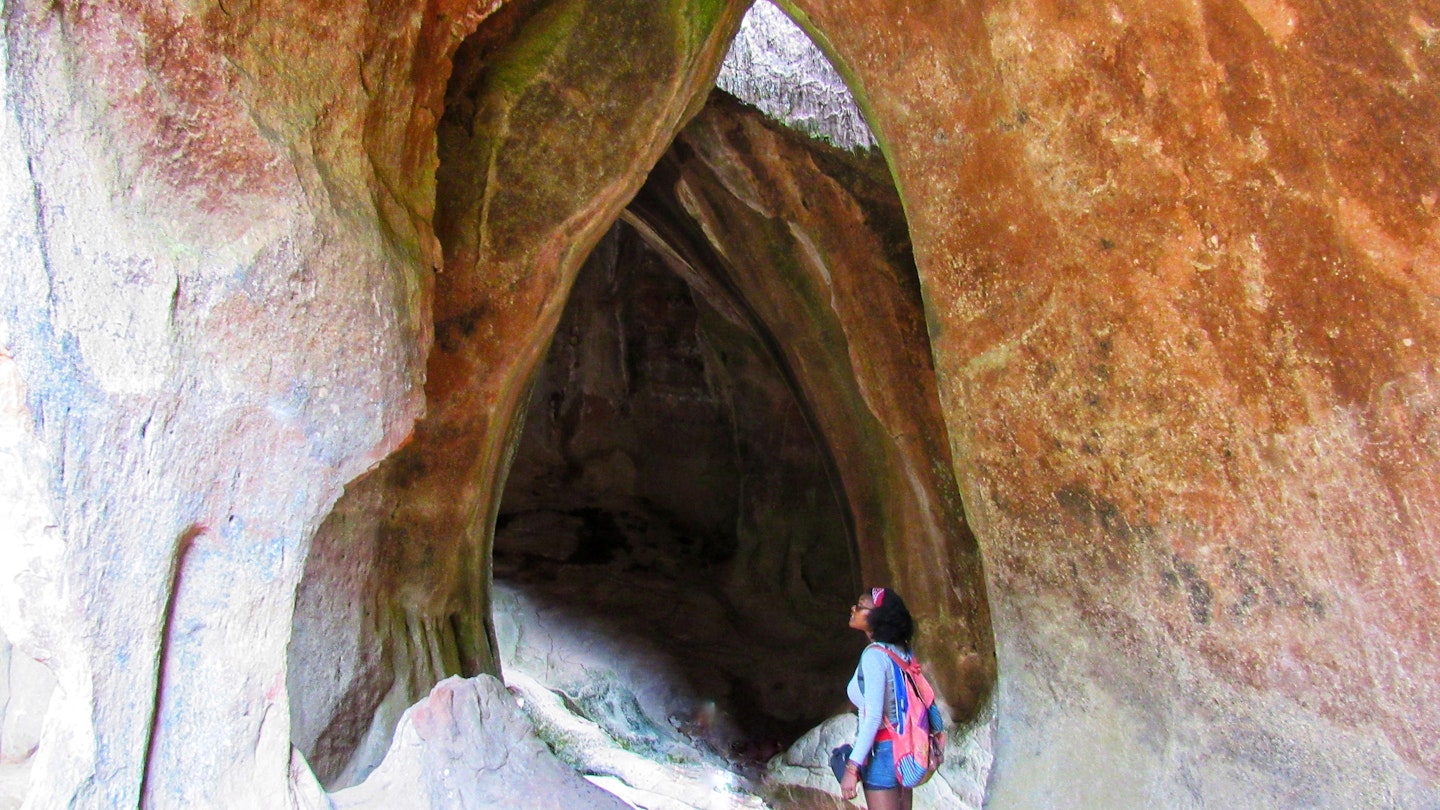
The intricate shapes formed by the caves in Parque Nacional de Torotoro attract visitors from all over the world © Ana Batista / Getty Images / EyeEm
Landlocked Bolivia is an exciting country with unmatched travel experiences for its visitors.
While it's true that the sheer scale of opportunities on offer can be overwhelming, such variety is a gift to travelers looking for true adventure.
Long overshadowed by the tourism juggernauts that are its neighbors, local initiatives are rocketing Bolivia to the top of the list of global destinations. From snow-topped mountain peaks to lush Amazon rainforest, Bolivia has something for everyone, if you know where to look.
Filled with the best secret (and not-so-secret) surprises this country and its people have to offer, our round-up of the best things to do in Bolivia is perfect for wanderers in search of the most authentic travel adventures.
1. Marvel at the stars on the Salar de Uyuni
Arguably Bolivia’s biggest tourist attraction, the Salar de Uyuni ’s white expanse confounds the senses as the sky and earth blend and erase the horizon.
If you visit just after the rains in March or April, the effect is amplified by water reflecting the sky at your feet, a photo op like no other on the planet.
The journey becomes truly otherworldly at night, and you will never forget the way the stars and the Milky Way are mirrored on the ground, creating a life-changing floating effect.
Planning tip: Many visitors jump on the tours leaving early in the morning from the center of Uyuni , but it's worth considering multi-day tours with stops at Isla Incahuasi and the many hot springs and colored lakes nearby.
2. Get lost in the Amazon jungle
The jungle town of Rurrenabaque is the starting point for any Bolivian adventure through the Amazon . This is the doorway to Madidi National Park , an expansive reserve that just happens to be the world’s most biodiverse protected area.
Pink river dolphins, portly capybaras, elusive jaguars and more bird and insect species than any other national park accompany daring visitors as they explore the untamed wilderness.
Agencies host wildlife-filled, three-day tours of the pampas (plains) or the selva (jungle). The magic here lies in the tour agencies owned and operated by indigenous communities.
Both Madidi Jungle and Chalalán ecolodges, located three and six hours by boat from Rurrenabaque respectively, are the best places for bushwhacking, community-driven adventures. Both are run and guided by Uchupiamona peoples, who have called these lands their home for centuries.
Anyone looking for world-class flyfishing excursions, cast your lines out for golden dorado with the team from Tsimane Lodge .

3. Visit Lake Titicaca, the birthplace of the sun
Any trip to Bolivia is incomplete without a visit to sacred Lake Titicaca . The highest navigable lake in the world at 3812m (12,506ft), Titicaca’s waves kiss picturesque farming villages and envelop legends of ancient civilizations lost in the water’s depths.
Take the less-traveled Huarina-Achacachi-Taquina highway to the beachside tourist town of Copacabana to see the best of the slow life here. And the rustic ferry ride at the Strait of Tiquina on the way to Copacabana’s peninsula is one of Bolivia’s unforgettable experiences.
Copacabana itself is a pulsing town, and a stay in the whimsical domes and spires of Hostal Las Olas means a hammock-swinging, birds-eye view of boats moored in the bay. But don’t swing too long – the mysteries of Isla del Sol , Incan birthplace of the sun god, are calling. You can still feel ancient spirits haunting the footpaths and stone ruins of this serene, roadless island.
4. Tour La Paz, from the streets to the clouds
The best tour guides in La Paz are its lustrabotas , or shoe-shiners. These young workers, with their iconic face-covering knitted masks, know where to go to see streets of a bygone era, where old tradesfolk – fishmongers, seamstresses, milliners and, of course, lustrabotas themselves – hawk their work in the streets.
The tour starts at the mural-covered general cemetery and ends at the notorious San Pedro Prison, and the 50bs fee goes directly into the guides’ pockets and supports a variety of social programs.
Alternatively, take in the city from above, gliding along in Mi Teleférico , the world’s longest urban cable car network. Stretching 20 miles (32km) across two cities, this mass transit wonder began in 2014 as an efficient way to move commuters across La Paz and El Alto, cities notorious for unbelievable traffic jams.
At just 3bs per line, the system flies from the swish south side of La Paz up to the far end of El Alto in minutes, so pick a line and go for it. The glass cabins are shared among riders, so you just might make some new friends along the way.
5. Lunch your way through La Paz’s culinary renaissance
Inspired by the opening of Danish superstar chef Claus Meyer’s Gustu in the south of La Paz in 2012, energetic chefs across Bolivia seem to be opening restaurants on a weekly basis. Look to La Paz’s city center for the crème-de-la-crème of Bolivia’s culinary renaissance, where lunch menus show off the best the city has to offer.
From the second floor of a former colonial home near the Mercado de las Brujas , the cooks in the steamy kitchen at Popular Cocina Boliviana have taken a festive approach, creating wild spins on traditional Bolivian dishes that are as colorful as the cumbia music rattling its tables.
For the most elegant lunch available, head across downtown to the trendy Hb Bronze Coffeebar , where a selection of Bolivia’s finest coffees, wines and chocolates accompany your sandwich or charcuterie plate.
For a more avant-garde dining experience, culinary deconstructionist Marco Quelca and his band of kitchen outcasts at Sabor Clandestino dish out experimental plates during immersive outdoor dining experiences that explore the cultures and spiritual beliefs of local indigenous people. This isn’t just a meal, this is an event for both stomach and soul.
6. Treasure hunting at Mercado 16 de Julio
Above La Paz in the neighboring sister city of El Alto, the sprawling neighborhoods surrounding the Plaza 16 de Julio come to life bright and early every Thursday and Sunday. Shop doors swing open and street stalls stretch out their umbrellas and tarps to create the largest open-air market on the continent.
Fresh produce. Sporting equipment. Handmade furniture. Used books. Half a helicopter. If you want it, you can find it here. Getting to the market from central La Paz is a comfortable 10-minute ride uphill on the city’s red Mi Teleférico cable car line – it's worth the short trip for the panoramic views alone.
Planning tip: Let yourself get lost among the madness but watch out for pickpockets.
7. Cheer on the high-flying Cholita Wrestlers
La Paz’s “ Cholita Wrestlers ” will stop (and steal) your heart during their haywire afternoon brawls. Dramatic fights, spurred by soap opera-like storylines, place these indigenous athletes in the spotlight, showing off their traditional bowler caps and famously wide, cape-like skirts.
They grapple, slam, kick and fly their way to victory against crooked heels, often unconscionable men and chauvinistic referees hell-bent on keeping these women down.
Cholitas Luchadoras is the best show in town, performing two to three times per week. Their main event is held on Sundays at a colosseum in El Alto’s Villa Dolores neighborhood. Pickups are available from La Paz, but a short, six-block walk from the Faro Murillo Mi Teleférico cable car gets you to the door.
Tickets cost 50bs and get you a ringside seat for a family-friendly show of thrills and spills. It also included a bag of popcorn, perfect for throwing at that nasty referee.

8. Climb your way up the Andes
Local belief says the Andes are haunted by mountain gods called “ apus ”. Mountaineers come from all over the world to Bolivia to test their mettle against these spirits and have some of the most breathtaking adventures along the way.
Of course, it is important to only go with internationally certified guides, and the mountaineers at Bolivia Expé are some of the most experienced around.
A relatively easy-to-reach peak and reasonably comfortable refuges make Huayna Potosí a favorite, often serving as a training ground for some of Bolivia’s more difficult climbs.
The majestic Mt. Illimani is the sentinel overlooking La Paz, and its south face leads to the highest peak in the Cordillera Real, full of steep climbs and technical challenges. Meanwhile, Condoriri, Janko Kota, Illampu, Volcán Sajama and many others are standing by. Strap on your crampons and pack your ice ax. The apus accept your challenge!
Detour: For those looking for some intense rock climbing, the tall peaks and wide granite walls at the Cordillera de Quimsa Cruz, seven hours south of La Paz, are the place to be.
9. Touch pre-history at Bolivia’s dinosaur park
Parque Nacional Torotoro is a compact 64 sq km (25 sq miles) but manages to pack in massive thrills. This was the stomping ground for the great dinosaurs of the Cretaceous period, dating back 145 million years, and you can touch the tracks that prove it.
The town of Torotoro is completely dinosaur-crazy, and residents themselves offer treks to the biggest footprint sites in the park, easily accessible to dinosaur lovers of any age.
While in the park, take advantage of the prehistoric landscape and do some additional exploring, from the lofty views and sunlight-drenched rock cathedral at Ciudad de Itas to the dizzying mirador above the depths of Cañon de Torotoro .
Detour: Travel to nearby Huayra K'asa and explore the very deep and very wet Caverna de Umajalanta . But be warned, this intense cave tour is not for the faint of heart.
10. Get a downhill adrenaline rush in Sorata
Under the shadow of snowcapped mountain Illampu, Sorata is home to the Jacha Avalancha Internacional (Big Avalanche International), an annual downhill bike race that brings fearless cyclists from around the world to this quiet, leafy valley town every October for an intense weekend of gravity-defying, mud-covered adrenaline. Come experience the rush yourself by taking on Bolivia’s best off-road biking trails.
The Loma Loma, Eden and Chilquani trails await more advanced cyclists, while the road-heavy Camino Millipaya is gaining popularity as a more novice – some would say sensible – way to catch a rush while taking in the scenery.
The gem of Sorata is the Gruta de San Pedro , a cave located at the bottom of a route by the same name, where you can explore the depths of this mysterious cave and take a leisurely paddleboat around its subterranean lagoon.
With so many trails to choose from to match all skill levels, companies like Gravity Bolivia and Bike Adventure Tours can help you fulfill your adrenaline-fueled dreams.
11. Get gold rush fever with horseback tours in Tupiza
Tupiza was once flooded with wily prospectors and international mining companies, drawn here by gold in the riverbeds promising unspoken riches. Rampant gold fever fed local banks, attracting American outlaws Butch Cassidy and the Sundance Kid on their continent-crossing escape from the famous Pinkerton Agency.
Relive these wild times on a guided horseback tour , galloping your way through deep, red canyons and along the same riverbeds where gold prospectors placed their hopes for fortunes.
You can ride through glorious Cañón del Inca and Cañón del Duende , or canter along the Río San Juan de Oro where miners today still look for slivers of the shiny stuff. Club Ecuestre Amazonas provides full immersive tours, including visits to functioning mining towns that will take you back to the days of Butch and Sundance.
Detour: From Tupiza, a three-hour drive west takes you to San Vincente to pay your respects to the duo of bandits at the reported site of their final, fatal run-in with the law.

12. Get that party vibe in Santa Cruz de la Sierra
Santa Cruz de la Sierra is the country's economic engine, and though cruceños work hard, they also play hard. With its Miami mood and Bolivian prices, Santa Cruz has party culture locked in.
For a night at the clubs, the very center of town near the Basílica Menor de San Lorenzo is the place to be. Bartenders at Duda Bar shake up fresh cocktails, and nearby clubs bump electronica, reggaeton and other styles.
More party options await along nearby Avenida San Martín, and the drinks and DJ sets at Simon Speakeasy are not to be missed.
For the beer-drinking set, Santa Cruz’s always-warm weather is tailor-made for the ever-growing number of beer gardens serving up craft brews of every style. Madera ’s big wooden tables are designed to be shared with strangers, while Santa Cruz Beer Company ’s massive outdoor bar on Avenida Los Cusis is well worth the short taxi ride from the center.
13. Escape to the global town of Samaipata
Three hours southwest of Santa Cruz de Sierra rests Samaipata, a town of cool breezes and laid-back lifestyles that attracts people from afar to plant roots here. More than a few expats now call this place home, and many have opened excellent restaurants. Check out local favorite La Boheme to enjoy a cold beer and swap travel stories.
Samiapata’s big attraction is El Fuerte de Samaipata , a 20-hectare archeological site originally built by the Chané people, a pre-Incan society that claimed territory reaching into Argentina, Paraguay and Brazil. Both the Incas and the Spanish later built on this site, so unraveling the mystery of everything here is no easy task.
What do the animal-shaped carvings mean? And were those eerie niches in the walls intended as rooms for priests to prepare for ceremonies or food storage closets? Pass the afternoon with a picnic, keeping an eye out for the majestic condors flying in from Amboró National Park just to the north.
14. Take the circuit of Jesuit missions of Chiquitos
Bolivia’s colonial history comes alive in Chiquitania, where Jesuit missions still call visitors to their altars to admire elaborate woodcarvings.
Large and small towns along this route through tropical savanna keep historic churches built in the Baroque Spanish tradition. You can spend days here hopping between missions, taking in the buildings’ craftsmanship and warm golden colors.
Larger, well-known churches like the one in Concepción , built by Jesuits in the 18 th century, are often adorned with sacred art created by indigenous locals and are not to be missed. But churches in smaller villages are just as important to visit.
These include San Miguel , San Raphael and the church in Santa Ana , constructed by indigenous locals after the Jesuits fled. Local chamber orchestras frequently give concerts in these houses of worship. This is a living history not to be missed.
15. Visit Bolivia’s coffee country
Caranavi is a small town with a big city feel, the beating heart of Bolivian coffee country. The constant heat and humidity of the surrounding cloud forest mean life is lived on doorsteps here, and the plaza is always alive with family adventures.
Travelers take advantage of the area’s best outdoor activities, including hiking, swimming, ziplining and rafting. But even with all that, coffee is king. Small, family-owned cafetales crawl up the hillsides, and the smells of roasting and brewing coffee pour out of the open entrances to the town’s many coffee shops.
Farmers work hard to produce some of the highest-altitude coffee in the world, and these are your guides along Bolivia’s Ruta de Café. Café Aventura , a coffee shop in the quiet southwest corner of the plaza, organizes one of the most authentic tours to be found anywhere.
Visitors visit rustic farms and try a hand at harvesting and processing the beans. And the best part? Drinking a cup of coffee with the very farmers who grew it.
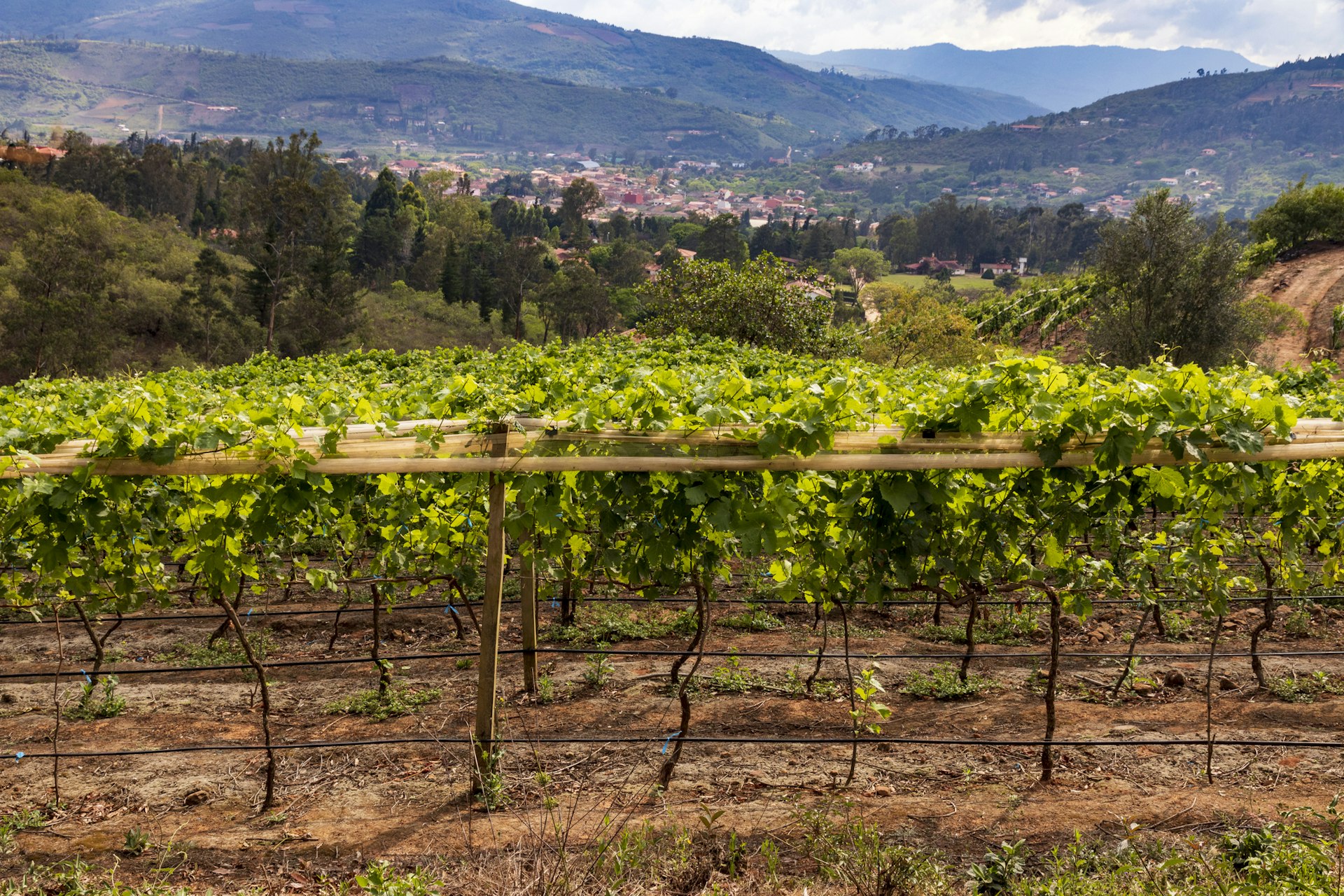
16. Get to the roots of Bolivian wine in Valle Cinti
The roots of Bolivian viniculture run deep, reaching three hours north of Tarija to the red, dusty soils of Valle Cinti, in Sucre. Here are some of the continent’s oldest vineyards, dating back to the 1550s.
Moscatel de Alejandría and negra criolla are grown here, joined by the hybrid vischoqueña, an endemic grape variety producing a unique, light-bodied wine that will delight any oenophile.
Vines here climb up 6-meter (20ft) tall trees, and vignerons from Jardin Oculto and other bodegas climb ladders to care for the crop. Tierra Adentro Tours can help make sure you don’t miss the harvest, which runs from late February to early April.
This is also the birthplace of singani, Bolivia’s national spirit, and local makers can show you how distilling has been done here for generations. Camargo is the hub of the region, with places to stay and plenty of market shopping.
Detour: For something special, take in the vineyard views from the terrace of the Hotel Parador Viña de Pereira in nearby, rustic Villa Abecia.
17. Take in the tragic majesty of Cerro Rico
In any history of the Spanish Empire, ample pages must be written about Potosí and its iconic, tragic symbol, Cerro Rico.
This former mining town, founded in 1545, is home to this “Mountain That Eats Men”, so named due to the thousands of miners’ lives lost within its tunnels over centuries. This silver mine was once the colossal engine that brought countless riches across the world to Europe.
Among the narrow, colonial streets of the old town, Plaza 10 de Noviembre contains some of the city’s most important landmarks, including La Catedral and El Cabildo . The Casa Nacional de la Moneda is one of the finest museums in the country. Finished in 1773, this former mint was built like a fortress and even served as one for a time.
Looming above it all, the working mine at Cerro Rico is mostly depleted and its cone peak threatens to collapse, serving as a grim reminder of the colonial impact on Latin America.
This article was first published April 2022 and updated November 2023
Explore related stories
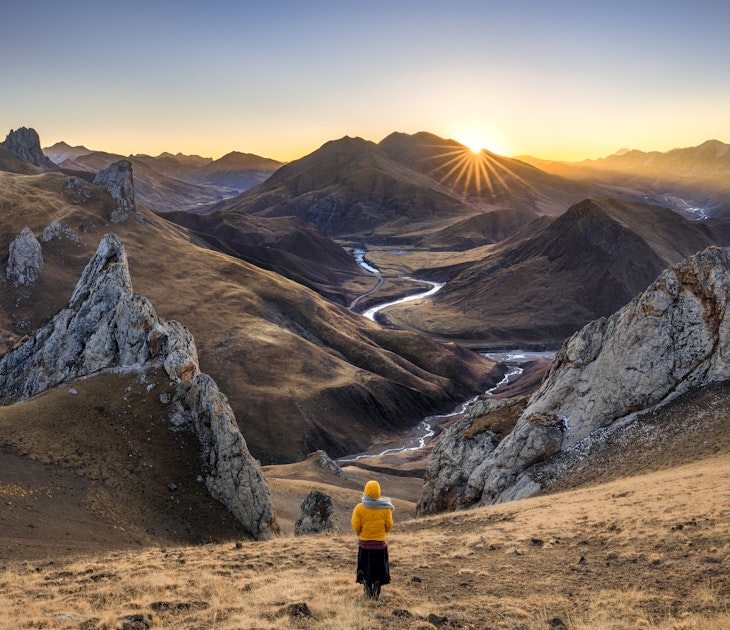
Jan 5, 2024 • 20 min read
As the new year begins, here are 24 of the world’s most life-affirming journeys to consider for nurturing your path to self-discovery.

Dec 8, 2023 • 6 min read
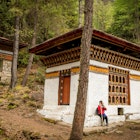
Apr 19, 2023 • 6 min read

Feb 15, 2023 • 6 min read
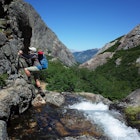
Nov 28, 2022 • 6 min read
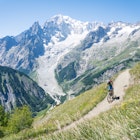
Apr 29, 2022 • 8 min read
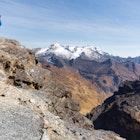
Apr 6, 2022 • 7 min read
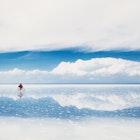
Mar 10, 2022 • 7 min read

Mar 7, 2022 • 6 min read

Jan 31, 2022 • 6 min read
Top luxury hotels in Bolivia
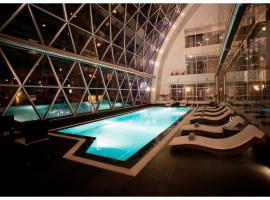
Casa Grande Hotel

Los Tajibos, Santa Cruz de la Sierra, a Tribute Portfolio Hotel

Huper Hotel Boutique

Hotel Laguna Volcan Eco Resort
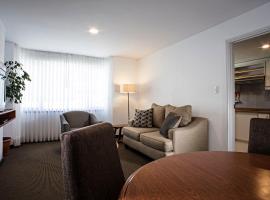
Camino Real Aparthotel, Downtown
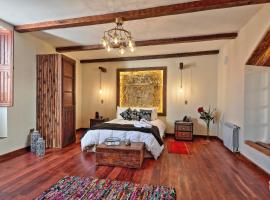
On Hotel Boutique
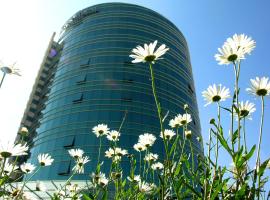
Suites Camino Real
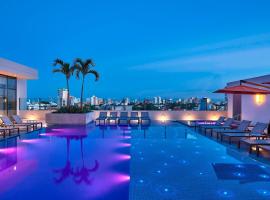
Marriott Santa Cruz de la Sierra Hotel
Bolivia prices guide. how much does a trip to bolivia cost the estimated travel expenses for food, public transport, attractions entrance and accommodation..
Currency in Bolivia is Bolivian Boliviano
If you are travelling alone to bolivia, depending on your expectations, you will pay for an overnight stay from 15 usd (103 bob) for a hostel to 85 usd (591 bob) for a luxury hotel., the other daily costs you have to pay when travelling to bolivia are:.
- Food 6.10 USD (43 BOB)
- Meals in restaurants 4.60 USD (32 BOB)
- Bottled water 0.97 USD (6.70 BOB)
- Local transportation 1.20 USD (8.00 BOB)
- Entrance tickets 20 USD (140 BOB)
- Alcoholic beverages 3.70 USD (26 BOB)
As you can see - a stay for a few days in Bolivia can cost 137 USD (946 BOB) or 568 USD (3,900 BOB) , depending on whether you are a frugal tourist or you are planning to spend a luxurious holiday in Bolivia.
How much Bolivian Boliviano should I have for one week in Bolivia?
If you want to spend a week in Bolivia the cost of your stay will be:
- 319 USD (2,200 BOB) - a cheap stay for 7 days in Bolivia
- 365 USD (2,500 BOB) - a budget travel for 7 days in Bolivia
- 530 USD (3,600 BOB) for a one week of comfortable stay in Bolivia
- 1,300 USD (9,100 BOB) for a week of luxury holidays in Bolivia
How much money do I need per day to stay in Bolivia?
If you are travelling alone to Bolivia, 46 USD a day should be enough. If you choose a hotel for your stay in Bolivia, the price will rise to 52 USD. A couple will have to pay around 94 USD for one day in Bolivia. A family with two children should have 160 USD for one day stay in Bolivia.
How to visit Bolivia on a low budget? How to travel Bolivia cheaply? How to save money while travelling in Bolivia?
In order not to exceed reasonable expenses during a trip to Bolivia, which we estimate at 52 USD (361 BOB) for a one day, you must comply with the following rules:
- Choose to stay in a hostel (15 USD (103 BOB) ) or in a cheap hotel (17 USD (121 BOB) ).
- Use public transport. The price for a one-way ticket is 0.29 USD (2.00 BOB) and for a monthly pass 25 USD (170 BOB) .
- Make your own breakfast and own dinner. Daily shopping cost in the shop is around 6.10 USD (43 BOB) in Bolivia.
- Choose restaurants outside the city centre and close to tourist attractions. Meal in a cheap restaurant cost around 2.90 USD (20 BOB) in Bolivia. McMeal at McDonalds (or equivalent meal in other fastfood restaurant) costs approximately 7.20 USD (50 BOB) .
Car-related costs are mainly fuel, road tolls and parking fees. Of course, the price depends on the purpose of the journey and energy efficiency of a vehicle.
In Bolivia, you will pay for the fuel accordingly:
- Petrol price in Bolivia is around: 0.54 USD (3.80 BOB)
- Diesel fuel price in Bolivia is around: 0.52 USD (3.60 BOB)
- 1kg sausage: 7.60 USD (53 BOB)
- 0,5 kg bread: 1.10 USD (7.90 BOB)
- 10 eggs: 1.60 USD (11 BOB)
- 1kg cheese: 4.60 USD (32 BOB)
- 1 liter milk: 0.92 USD (6.40 BOB)
- 1 kg apples: 2.00 USD (14 BOB)
- Bottle of local beer (0,5 liter): 1.70 USD (12 BOB)
Car rental prices in Bolivia
- What is the average price for a car rental in Bolivia?
- How much does it typically cost to rent a car in Bolivia?
- Is it cheaper to rent a car for a week in Bolivia?
What is most famous in Bolivia? How much does an average entrance to travel attractions in Bolivia cost?
The most important tourist attractions in bolivia that we recommend:, the museums worth a visit in bolivia:, are there any free attractions in bolivia what can you do for free in bolivia, on warmer days, we recommend walking in parks in bolivia. below is a list of the largest and most interesting parks in bolivia. parks in bolivia:, book the best hotels in bolivia - in partnership with booking.com, compare hotel rates in bolivia and save up to 80%.

Ritz Apart Hotel
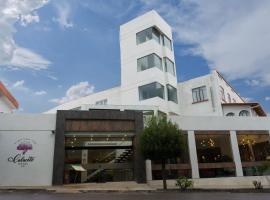
Hotel Calacoto

Hotel LP Columbus

Hotel Rosario La Paz
Compare travel cost and expenses in specific cities in bolivia 2024.
- Travel Planning Guide
Travel Budget for Cochabamba Visit Cochabamba on a Budget or Travel in Style
- Cochabamba Costs

- Cochabamba Hotel Prices
- Best Hotels for First Time Visitors in Cochabamba
- Best Hotels for a Weekend Getaway in Cochabamba
- Best Hotels for One Night in Cochabamba
- Best Hotels for One Week in Cochabamba
- Best Romantic Hotels for Couples in Cochabamba
- Best Luxury Hotels in Cochabamba
- Is Cochabamba Expensive?
- How much does a trip to Cochabamba cost?
- Bolivia Costs
- Santa Cruz de la Sierra
- How much does it cost to travel to Cochabamba? (Average Daily Cost)
- Cochabamba trip costs: one week, two weeks, one month
Is Cochabamba expensive to visit?
- How much do I need for a trip to Cochabamba?
- Accommodation, Food, Entertainment, and Transportation Costs
- Travel Guide
How much does it cost to travel to Cochabamba?
You should plan to spend around $63 ($b436) per day on your vacation in Cochabamba. This is the average daily price based on the expenses of other visitors.
Past travelers have spent, on average for one day:
- $22 ($b153) on meals
- $16 ($b113) on local transportation
- $50 ($b342) on hotels
A one week trip to Cochabamba for two people costs, on average, $886 ($b6,098) . This includes accommodation, food, local transportation, and sightseeing.
All of these average travel prices have been collected from other travelers to help you plan your own travel budget.
- Travel Style: All Budget (Cheap) Mid-Range Luxury (High-End)
- Average Daily Cost Per person, per day $ 63 $b 436
- One Week Per person $ 443 $b 3,049
- 2 Weeks Per person $ 886 $b 6,098
- One Month Per person $ 1,900 $b 13,068
- One Week For a couple $ 886 $b 6,098
- 2 Weeks For a couple $ 1,773 $b 12,197
- One Month For a couple $ 3,799 $b 26,136
How much does a one week, two week, or one month trip to Cochabamba cost?
A one week trip to Cochabamba usually costs around $443 ($b3,049) for one person and $886 ($b6,098) for two people. This includes accommodation, food, local transportation, and sightseeing.
A two week trip to Cochabamba on average costs around $886 ($b6,098) for one person and $1,773 ($b12,197) for two people. This cost includes accommodation, food, local transportation, and sightseeing.
Please note, prices can vary based on your travel style, speed, and other variables. If you're traveling as a family of three or four people, the price per person often goes down because kid's tickets are cheaper and hotel rooms can be shared. If you travel slower over a longer period of time then your daily budget will also go down. Two people traveling together for one month in Cochabamba will often have a lower daily budget per person than one person traveling alone for one week.
A one month trip to Cochabamba on average costs around $1,900 ($b13,068) for one person and $3,799 ($b26,136) for two people. The more places you visit, the higher the daily price will become due to increased transportation costs.
Independent Travel
Traveling Independently to Cochabamba has many benefits including affordabilty, freedom, flexibility, and the opportunity to control your own experiences.
All of the travel costs below are based on the experiences of other independent travelers.
Cochabamba is a reasonably affordable place to visit. Located in Bolivia, which is a reasonably affordable country, visitors will appreciate the relatively low cost of this destination. It is in the top 10% of cities in the country for its overall travel expenses. If you're traveling on a budget, then this is a good destination with affordable accommodation, food, and transportation.
Within South America, Cochabamba is a moderately priced destination compared to other places. The overall cost of travel here is fair for the region and comparable to Punta Arenas or Florianopolis.
For more details, and to find out if it's within your travel budget, see Is Cochabamba Expensive?
How much money do I need for a trip to Cochabamba?
The average Cochabamba trip cost is broken down by category here for independent travelers. All of these Cochabamba travel prices are calculated from the budgets of real travelers.
Accommodation Budget in Cochabamba
Average daily costs.
Calculated from travelers like you
The average price paid for one person for accommodation in Cochabamba is $25 ($b171). For two people sharing a typical double-occupancy hotel room, the average price paid for a hotel room in Cochabamba is $50 ($b342). This cost is from the reported spending of actual travelers.
- Accommodation 1 Hotel or hostel for one person $ 25 $b 171
- Accommodation 1 Typical double-occupancy room $ 50 $b 342
Hotel Prices in Cochabamba
Looking for a hotel in Cochabamba? Prices vary by location, date, season, and the level of luxury. See below for options.
Find the best hotel for your travel style.
Actual Hotel Prices The average hotel room price in Cochabamba based on data provided by Kayak for actual hotel rooms is $46. (Prices in U.S. Dollars, before taxes & fees.)
Kayak helps you find the best prices for hotels, flights, and rental cars for destinations around the world.
Recommended Properties
- Hostel Running Chaski Budget Hotel - Kayak $ 23
- Hotel La Colonia Luxury Hotel - Kayak $ 59
Transportation Budget in Cochabamba
The cost of a taxi ride in Cochabamba is significantly more than public transportation. On average, past travelers have spent $16 ($b113) per person, per day, on local transportation in Cochabamba.
- Transportation 1 Taxis, local buses, subway, etc. $ 16 $b 113
Recommended Services
- MiniVan or Bus Transfer from Cochabamba Airport CBB to Cochabamba Viator $ 28
- Cochabamba: Airport - Hotels transfer Service 24/7 Get Your Guide $ 28
Flights to Cochabamba
Rental cars in cochabamba, food budget in cochabamba.
While meal prices in Cochabamba can vary, the average cost of food in Cochabamba is $22 ($b153) per day. Based on the spending habits of previous travelers, when dining out an average meal in Cochabamba should cost around $8.93 ($b61) per person. Breakfast prices are usually a little cheaper than lunch or dinner. The price of food in sit-down restaurants in Cochabamba is often higher than fast food prices or street food prices.
- Food 2 Meals for one day $ 22 $b 153
Entertainment Budget in Cochabamba
Entertainment and activities in Cochabamba typically cost an average of $25 ($b174) per person, per day based on the spending of previous travelers. This includes fees paid for admission tickets to museums and attractions, day tours, and other sightseeing expenses.
- Entertainment 1 Entrance tickets, shows, etc. $ 25 $b 174
Recommended Activities
- Parque Nacional Torotoro Tour 2 Días y 1 Noche Viator $ 228
- Tigre & Delta River Cruise - half day tour from Buenos Aires Viator $ 72
Alcohol Budget in Cochabamba
The average person spends about $15 ($b101) on alcoholic beverages in Cochabamba per day. The more you spend on alcohol, the more fun you might be having despite your higher budget.
- Alcohol 2 Drinks for one day $ 15 $b 101
Water Budget in Cochabamba
On average, people spend $0.62 ($b4.27) on bottled water in Cochabamba per day. The public water in Cochabamba is considered safe to drink.
- Water 2 Bottled water for one day $ 0.62 $b 4.27
Related Articles
Cochabamba on a budget.
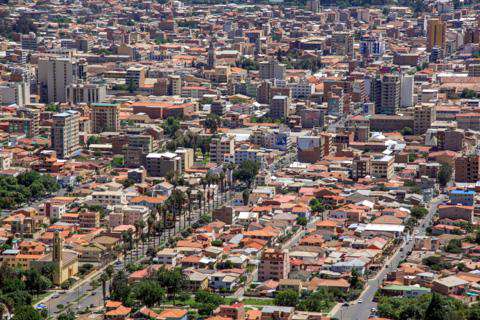
Neighborhoods
Food and dining, transportation, more related articles.
We've been gathering travel costs from tens of thousands of actual travelers since 2010, and we use the data to calculate average daily travel costs for destinations around the world. We also systematically analyze the prices of hotels, hostels, and tours from travel providers such as Kayak, HostelWorld, TourRadar, Viator, and others. This combination of expenses from actual travelers, combined with pricing data from major travel companies, gives us a uniqe insight into the overall cost of travel for thousands of cities in countries around the world. You can see more here: How it Works .
Subscribe to our Newsletter
By signing up for our email newsletter, you will receive occasional updates from us with sales and discounts from major travel companies , plus tips and advice from experienced budget travelers!

Search for Travel Costs
Some of the links on this website are sponsored or affiliate links which help to financially support this site. By clicking the link and making a purchase, we may receive a small commission, but this does not affect the price of your purchase.
Travel Cost Data
You are welcome to reference or display our travel costs on your website as long as you provide a link back to this page .
A Simple Link
For a basic link, you can copy and paste the HTML link code or this page's address.
Travel Cost Widget
To display all of the data, copy and paste the code below to display our travel cost widget . Make sure that you keep the link back to our website intact.
- Privacy / Terms of Use
- Activities, Day Trips, Things To Do, and Excursions

IMAGES
VIDEO
COMMENTS
At the end of these budget breakdowns, I always like to pore over my receipts, tally up my every expense, and tell you guys exactly how much my travel adventures cost. My trip to Bolivia cost: Accommodation: $57 per day. Transport: $3.15 per day. Activities: $5.55 per day.
All of these Bolivia travel prices are calculated from the budgets of real travelers. Category Cost Accommodation ... TourRadar, Viator, and others. This combination of expenses from actual travelers, combined with pricing data from major travel companies, gives us a uniqe insight into the overall cost of travel for thousands of cities in ...
It's important to note that these price ranges are derived from our extensive travel cost data for Bolivia, which is based on valuable insights from other travelers as well as hotel and tour data provided by travel companies. ... When embarking on a month-long trip to Bolivia, expenses can range from $625 to $3,947, with an average cost falling ...
Travelers spend an average of $53 per day when visiting Bolivia (U.S. Dollars). This is according to our calculations which come from the expenses of previous visitors. While this is an average cost, prices can vary by travel style, the length of your trip, and other factors. However, you can keep close to this average, or even travel cheaper ...
In Bolivia, a full-round flight ticket for 1 person is around $120 on normal days and near to $200 on holidays. A full-round bus ticket for intercity traveling is around $24, but it can increase up to $40 on holidays. Traveling with a rented car will cost you from $300 to $500 a month. We are citizens from Bolivia, who have spent all our lives ...
Sandwich: B$8 (US$1.15) Mid-range meal for two: B$130 (US$19) 1. Fly into Santa Cruz instead of La Paz. With its wild geography, colorful colonial-era buildings and proud Indigenous identity, La Paz captures the imagination of travelers far more than the modern and sometimes brash city of Santa Cruz.
Hopefully this post is helpful in persuading you to visit this amazing country! Our TOTAL cost of traveling in Bolivia for 9 days, including the Salt Flat tour, was $774.75 USD. Of that, $548.55 was the Salt Flat tour and the overnight buses between Uyuni and La Paz. $226.20 was what we spent as "daily expenses" while staying in La Paz for ...
The average traveler spends about $42 USD per day in Bolivia on food, transportation, accommodations, activities, and other travel expenses. You can generally find apartment rentals for less than $50 USD per night and hostels are easy to find, particularly in cities.
For 3 days of sightseeing and activities, you can expect to spend approximately $30 to $200. So, for a budget traveler planning a 2-night & 3-day trip to Bolivia, the estimated cost would be: Flights: $500 to $1500. Accommodation: $40 to $120. Transportation: $6 to $18. Food and drinks: $60 to $120.
These are prices of some of the tours and activities we did in Bolivia: Red Cap Walking Tour of La Paz: Free. 3 day/2 night Salt Flats Tour: $175 per person. 2 day Maragua Crater Trek: $65 per person. Museums and Churches: Often there is no charge, but if a ticket is required it will only cost you between $2-$4.
In this ultimate Bolivia travel guide, we will provide you with all the essential information you need to plan your trip to this incredible country. ... It is also recommended to have travel insurance that covers medical expenses and trip cancellations. With its diverse landscapes and rich cultural heritage, Bolivia is a destination that offers ...
It's quite normal for vendors in Bolivia to adjust their prices depending on what they think the customer can afford. This practice, known as mira de cara (looking at the face), even happens among Bolivians. It's a logical assumption that a foreign tourist is reasonably wealthy, so it doesn't hurt to politely ask for a discount in places like hotels, markets and travel agencies.
200 B | £20 | $29. average cost of four hour bus ride. Bolivian buses. You may be driven by maniacs, be old, cramped and of questionable safety standards but goodness me, you're cheap! For basic public services, the average cost was around 10B per hour, but this increased depending on the quality of the bus. Travel in a quicker, newer minvan ...
Dairy prices in Bolivia, on the other hand, are as follows: 1 liter of milk costs about 6.54 BOB (0.95 USD), and 1 kilogram of locally produced cheese is an expense of 38.7 BOB (5.59 USD). Chicken filet, which is a common ingredient in meat dishes, costs in the range of 27.67 BOB (4 USD) per kilo.
£401.4 GBP | $589 USD | $4090 BOB. Accommodation in Bolivia can be a tricky beast. Either you stay in well-designed gringo party hostels and pay prices much more comparable to Chile, or you opt for locally run guest houses that are cheap but not always cheerful with poor facilities and not much in terms of atmosphere.
These expenses can vary significantly depending on your destinations and travel preferences. Leisure activities and entertainment expenses can vary depending on your interests. Whether you enjoy going to movies, visiting museums, or participating in outdoor activities, set aside a portion of your budget for these experiences.
While Bolivia is a cheap country in terms of day-to-day costs, some of the most epic experiences in Bolivia are best done with qualified guides on a tour, which can raise your average expenses. This includes mountain biking down the "Death Road" (usually around $50 USD for the day) and a multi-day tour of the salt flats (around USD $250 for ...
Image from Flickr . Since Bolivia is relatively cheap, budget travelers will surely love to visit and explore Bolivia. If you're a budget traveler and want the best deals, you can look for local food stalls or corner food shops that sells a meal for at least $2 to $3 it means 15-20 BOB.Most of the dishes are with meat and chicken, though.
3. Visit Lake Titicaca, the birthplace of the sun. Any trip to Bolivia is incomplete without a visit to sacred Lake Titicaca. The highest navigable lake in the world at 3812m (12,506ft), Titicaca's waves kiss picturesque farming villages and envelop legends of ancient civilizations lost in the water's depths.
7.40 USD / 19 USD / 44 USD. day / weekend / week. 41 USD / 102 USD / 245 USD. day / weekend / week. As you can see - a stay for a few days in Bolivia can cost 137 USD (946 BOB) or 568 USD (3,900 BOB), depending on whether you are a frugal tourist or you are planning to spend a luxurious holiday in Bolivia.
La Paz, the administrative capital of Bolivia, has a breathtaking setting. The city is the highest national capital in the world, with an altitude ranging from about 4,058 m (13,313 ft) above sea level in El Alto, where the airport is located, to 3,100 m (10,170 ft) in the lower residential area.
We've created this perfect 10-day travel itinerary which should give you an idea of what to see and do in this beautiful country. This ten days itinerary includes the sacred Lake Titicaca, La Paz, capital city Sucre, Tupiza and the ultimate jeep adventure in Salar de Uyuni. Get inspired.
Cochabamba is a reasonably affordable place to visit. Located in Bolivia, which is a reasonably affordable country, visitors will appreciate the relatively low cost of this destination. It is in the top 10% of cities in the country for its overall travel expenses.